Snorkeling in Biscayne National Park: A World Underwater
There I was, in my 50s and feeling incredibly self-conscious among the laughing families waiting for the boat to take us snorkeling in Biscayne National Park. I had never snorkeled in my life, not even in the local pool. It didn’t help alleviate my embarrassment that Brad has been scuba certified since his early teens. Snorkeling was child’s play for him.
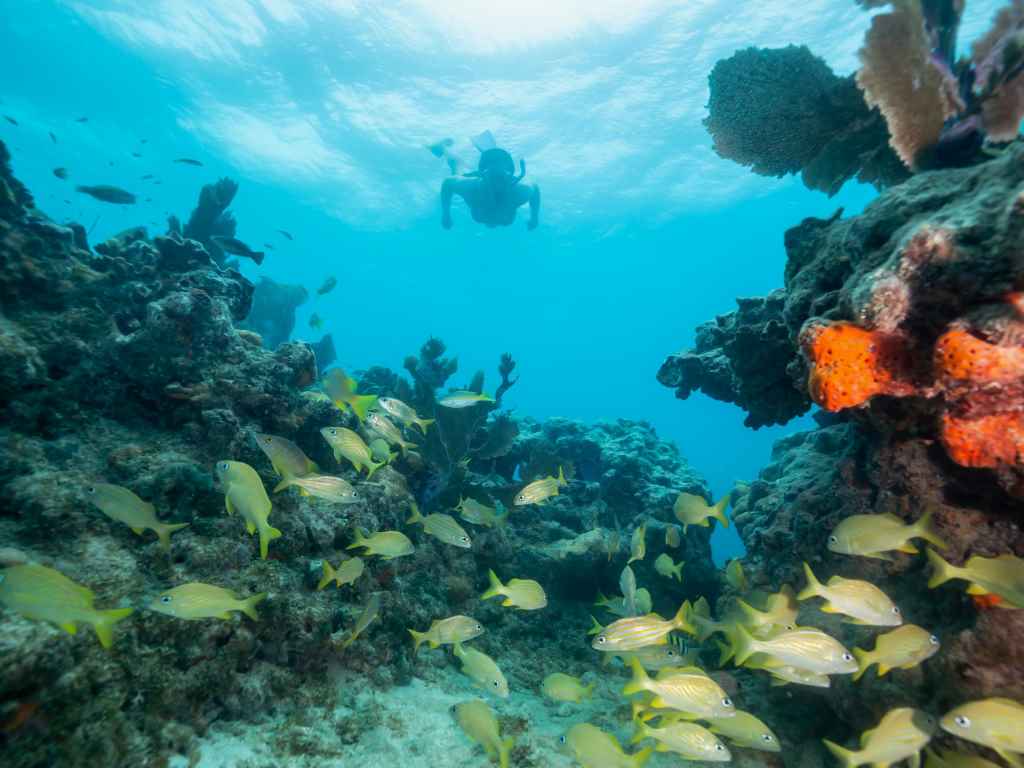
It turned out that this was the perfect place for a first-time snorkeler! As a National Park, education is key, and the snorkeling boat’s guides ensured everyone learned to snorkel. They went out of their way to show the guests how to see the amazing wonders under the water of Biscayne National park.
In this article, I’m going to share what you should expect when snorkeling in Biscayne National Park, one of the National Parks in Florida . I want to help you plan a trip just as wondrous as mine. After this snorkeling adventure, I was hooked and I’ve gone many times since. I guess it’s never too late to teach an old dog new tricks. Lol!
This post contains affiliate links to make it easier for you to find the products I have mentioned. You don’t pay any extra and in some cases I could earn a small commission.

Why Snorkel in Biscayne National Park
Biscayne National Park is a true gem in the Florida Keys. The underwater National Park boasts crystal-clear waters and an abundance of marine life. It is one of the best snorkeling destinations in the country. With over 170,000 acres of protected coral reefs, shipwrecks, and seagrass beds to explore, visitors can immerse themselves in a world of vibrant colors and exotic creatures.
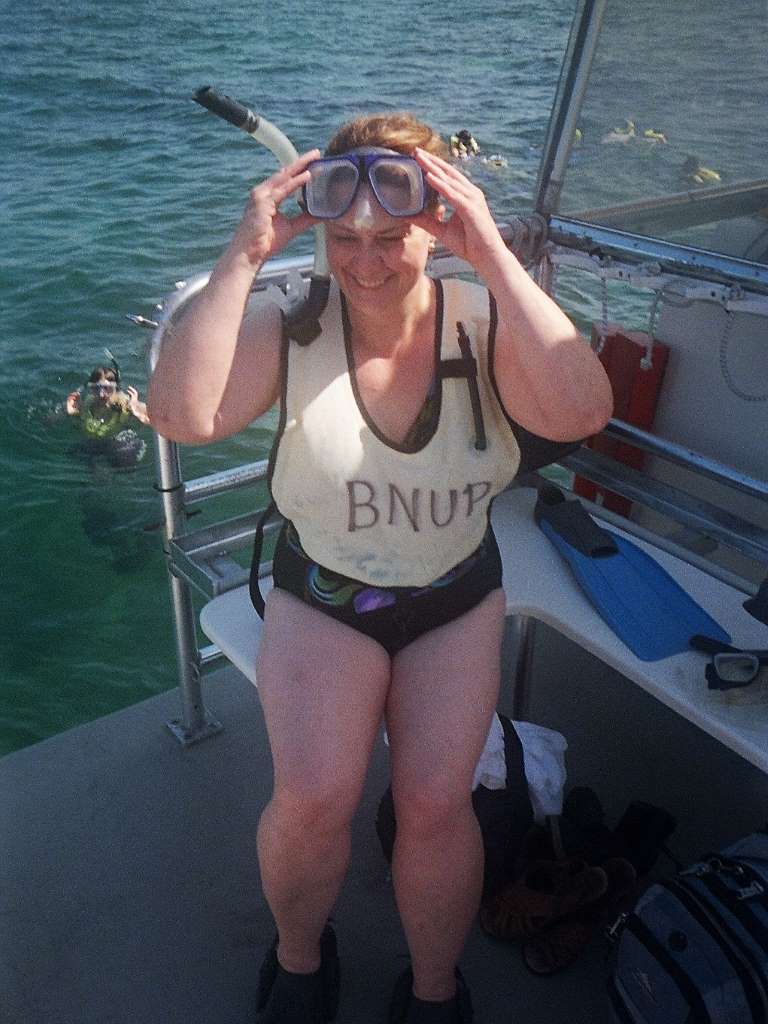
Explore the Coral Reef when you Snorkel in Biscayne Bay
Florida is home to the only coral reef system in the continental United States. The reef runs 350 miles starting at the southernmost tip of the Dry Tortugas National Park, following the keys and coastline of Florida up to St Lucie Inlet (an hour North of Palm Beach.) Biscayne National Park, which protects Biscayne Bay, is home to only a small section of Florida’s reef.
Beautiful to look at, coral is actually an animal, not a plant, closely related to jellyfish and anemones. Coral reefs are formed when coral larvae attach to rocks or other hard structures in the water. Snorkelers love swimming around coral reefs because you experience the beauty of these unusual sea creatures and at the same time you see schools of brightly colored fish.
Snorkel Shipwreck Sites
Biscayne Bay is home to 6 old shipwrecks. If you didn’t know, fish love to live in shipwrecks. The structure provides a safe haven from larger feeder fish and places for baby fish to hide. Two of those wrecks, Mandalay and Arratoon Apcar are in water shallow enough to snorkel around. How cool is that!
Mandalay is a more recent shipwreck, running aground in 1966. The 112-foot schooner was a luxury cruiser returning from the Bahamas when it struck Long Reef. While all the finery has been long removed, the body of the Mandalay is home to a wide variety of aquatic life and the favorite shipwreck for snorkeling.
The Arratoon Apcar was a 261-foot, iron-hulled, steamship that ran aground in 1878. It now lies in ten to twenty feet of water near Fowey Rocks. The structure attracts an abundance of colorful fish.
The other 4 shipwrecks are in deeper water which makes them better for scuba diving.
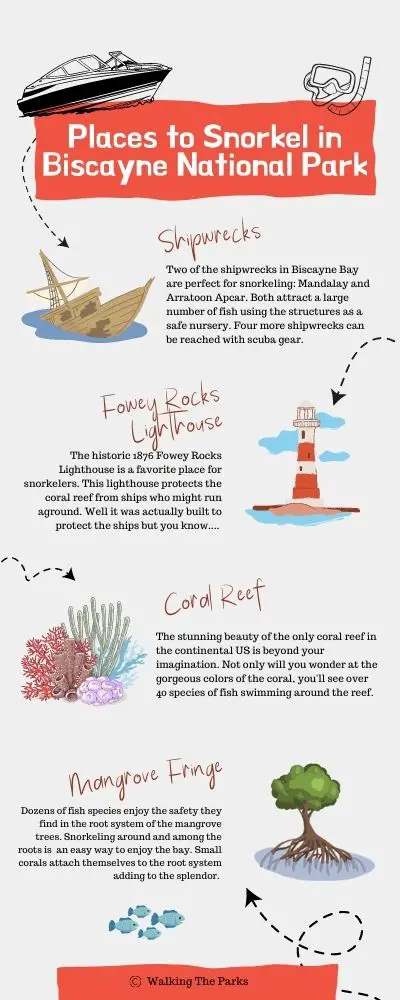
Baby Fish Everywhere when you Snorkel Bayside near Mangroves
Most visitors are disappointed when they learn the weather made it impossible for their tour to head out to the open ocean of the reefs or shipwrecks. The captain’s backup plan is to snorkel near the mangroves. Although we did not snorkel bayside, word is that you won’t be disappointed once you get to the mangroves!
The mangroves are a fish nursery, full of more baby fish than you could ever imagine. You’ll also find coral under the roots. So don’t despair if the weather doesn’t cooperate with your vacation.
Snorkeling Tour Details
Snorkeling tours in Biscayne National Park are offered daily by the Biscayne National Park Institute . They are a private concessionaire that works hand in hand with the park rangers to provide incredible snorkeling, diving, paddling, and other tour experiences.
Currently, all the expeditions are for small groups to allow for social distancing which also will make for an incredible snorkeling experience. (When we took this snorkeling tour we were in a larger group of 30ish people.) Imagine being in a group of only a dozen people … it will feel like you have the ocean all to yourself.
Types of Snorkeling Tours
I find a chart helps me see the difference between tours quickly and clearly. So I put this one together for you. I’ll describe the difference in a little more detail under the chart.
There are 4 different tours. Each tour is offered as: public group tour – which means you will be mixed with other families to fill the boat. private tours which means you buy all the seats on the boat for your own group.
A private tour is about the same price as a group tour if you have 5-6 people in your family, plus you can include younger children in a private tour so it’s a pretty sweet deal for a family.
Tour #1 Small Group Snorkel Experience
Without a doubt, the Small Group Snorkel Experience is the most popular tour in Biscayne National Park. This ½ day tour leaves from the Dante Fascell Visitor Center and takes you by boat to two snorkeling locations where you can snorkel for a couple of hours.
Why we like this tour:
- First-time snorkelers will get a taste of snorkeling without getting overwhelmed. And as hard as it is to believe possible if you don’t like snorkeling it is the shortest tour.
- The shorter window is better for families with younger children.
- You get to experience snorkeling in 2 different ecosystems.
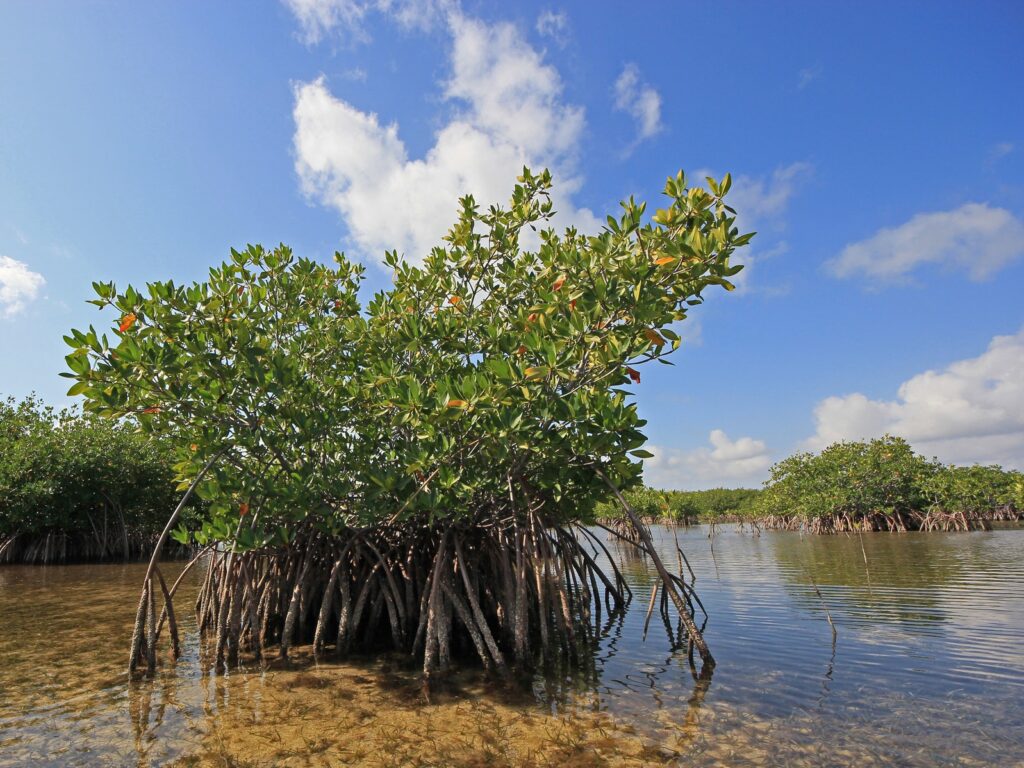
Tour #2 Coconut Grove Snorkel and Island Visit
The tour that starts at Coconut Grove is the perfect choice if you are visiting Miami without a car. It departs from the Dinner Key Marina which is about 20 minutes South of Downtown Miami and is very easy to access with a short Uber ride.
The snorkeling on this 6-hour tour is very similar to the Small Group Snorkel Experience. It is longer because you will spend more time cruising across the bay to get to your snorkeling location. As someone who loves being on the water, I’m all in for a little extra water time. The tour also makes a stop at an island where you can get out and explore or swim which is perfect for younger kids.
- Easy access from Miami
- Island stop is great for families
- What we don’t like:
- You’ll miss the Biscayne National Park Visitor’s Center
Tour #3 Sail, Paddle, Snorkel & Island Visit
There’s something very special about a sailboat experience, and this cruise has it all. Over 6 hours you’ll sail to various locations in the bay. You can jump out of the sailboat and paddle in the double kayaks to explore close to shore. Most trips include an island visit. All snorkeling is in the bay’s shallow mangrove areas.
What we like about this tour:
- The diversity of the activities
- Your group will learn how to work a sailboat
- The only snorkeling option is the mangrove shallows.
Snorkel & Paddle Eco-Adventure
Boat across the bay from the Dante Fascell Visitor Center to Jones Lagoon to start your adventure on Paddle Boards (SUPs). Then you head off to a snorkeling location. This tour allows for a lot of time to explore both on the paddle boards and while snorkeling.
- The quiet exploration from the paddle boards
- More challenging for families with teens
How to Book a Snorkeling Tour in Biscayne National Park
The easiest way to book a snorkeling tour is online directly with Biscayne National Park Institute . Their booking system is very easy to use right from your phone. If you have questions, you can also book by calling 786-465-4058.
Although you can book your trip at the visitor center, we recommend that you call ahead to ensure there is a place for you.
Biscayne National Park Snorkeling Price
The price for a snorkel tour at the time of this writing is $109 per person for the 3.5-hour tour and $199 for the 6-hour tour.
We also snorkeled once we got to Key West and found the pricing in Biscayne National Park to be about the same. With coupons or deal shopping, you can find cheaper tours in Key West. However, we found the education aspect of the tour in Biscayne National Park to be superior and worth it for a first-time snorkeler.
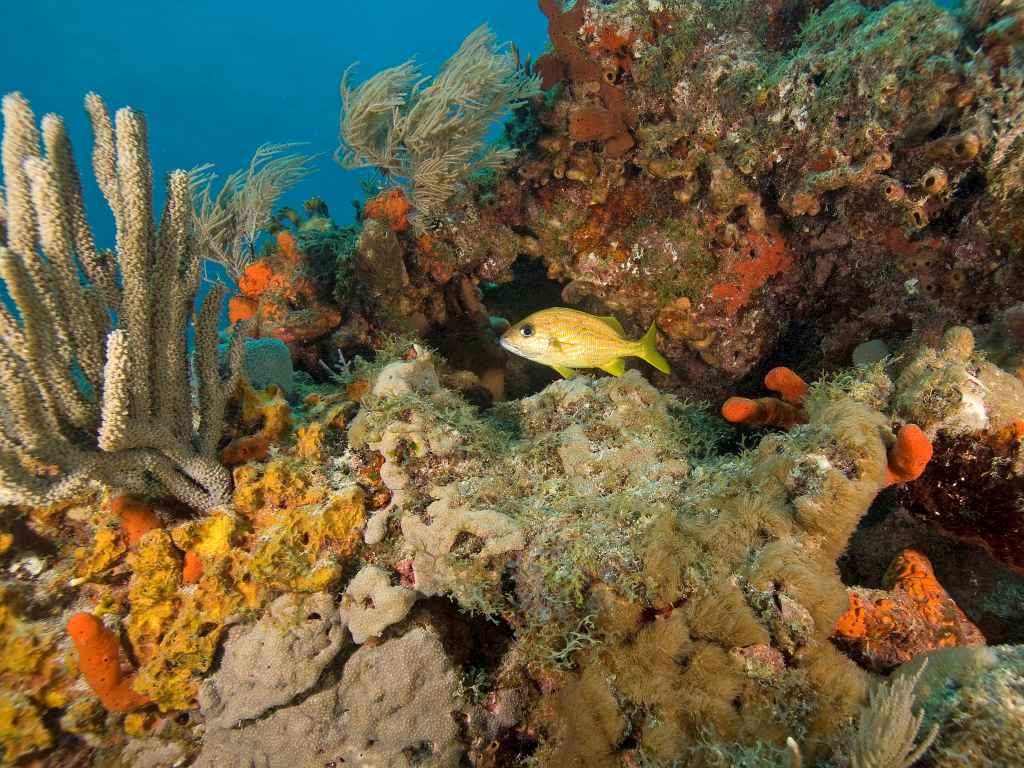
What Do You Need to Snorkel in Biscayne National Park?
In theory, you could just show up with only your swimsuit for your snorkel trip. But a little bit of preparation will make your snorkeling adventure a lot more fun and comfortable. Here’s a guide to what to pack for your tour.
Snorkel Gear
You can rent snorkel gear from the Biscayne National Park Institute for less than $20 per person. That set includes the snorkel, a face mask, and fins.
While they sterilize all the equipment between uses, I feel safer bringing my own snorkel mask. Using your own mask also ensures a good fit. Masks vary a lot in pricing, but for casual snorkeling use like this, you can get a really nice snorkeling mask for under $40. If you use your mask more than a couple of times you break even, right?
The one piece of snorkeling gear I might rent is the fins. Fins are required on all snorkeling tours for safety and the BNPI will rent them alone. They take up a lot of room in a suitcase which means if you rent you’ll have more space for other stuff when flying.
Water and Lunch or Snacks
Bring bottles of water for your family, you’ll quickly become dehydrated in the sun. Also, pack plenty of high-energy snacks and a delicious lunch . You’ll burn a lot of calories swimming.
Most boats will have a cooler where you can store your food and water, but you might prefer to bring your own small cooler on board.
Bring along a reef-safe sunscreen. That means one that is certified to be free of chemicals that can harm life in the ocean. My favorite is Alba Botanica Sunscreen because it doesn’t feel greasy and has a variety of formats.
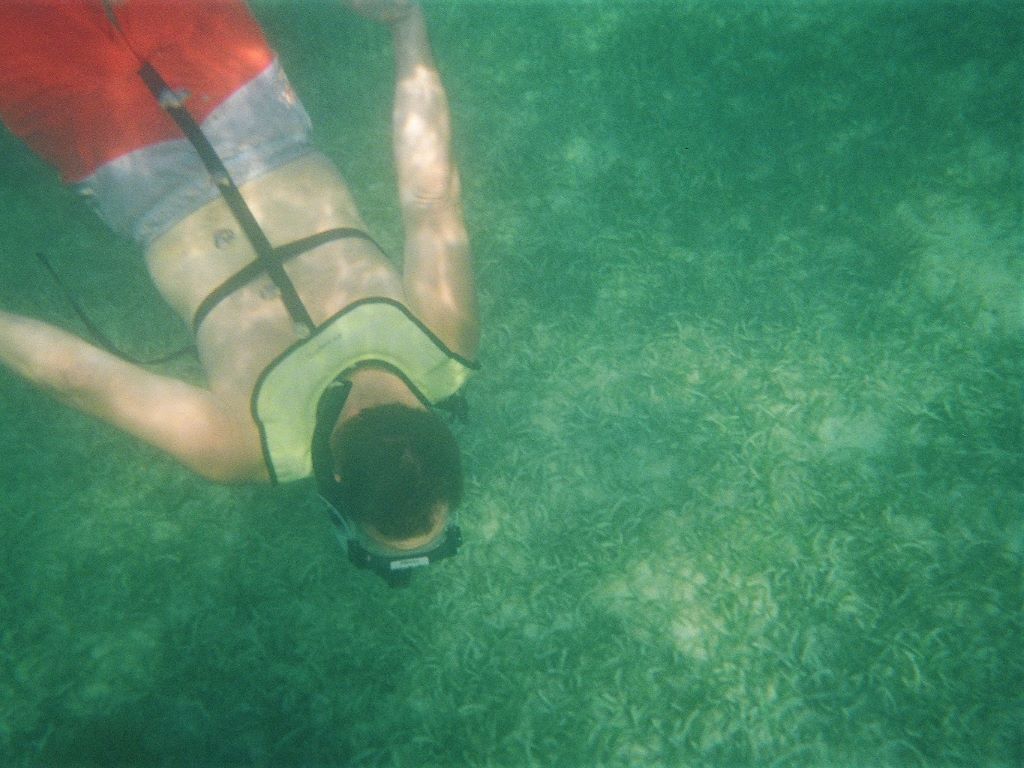
What to Wear
Most of the year, a swimsuit is exactly what you need to snorkel. However, in the cooler months, you might want a wet suit. You can rent one with your tour package.
Because I sunburn like crazy, I usually wear a long sleeve SPF shirt over my suit when on the water. I love how they protect my skin while still keeping me cool. My favorite is my Columbia Tidal Tee , I wore one for our rafting trip through Lodore Canyon where I was in the sun all day for 3 days and it kept me sunburn free.
You’ll likely want a sun hat while cruising. While the boats have shade, it’s nice to gather a few rays while out. Just make sure your hat fits snuggly so it doesn’t blow off in the breeze.
You won’t need a life vest
Snorkel vests will be provided. And if you want a life vest or pool noodle while swimming just ask.
You need to plan ahead so you are prepared to take underwater photos. Even though the photos we took with a cheap disposable camera are not high quality, we really enjoyed looking back on this adventure.
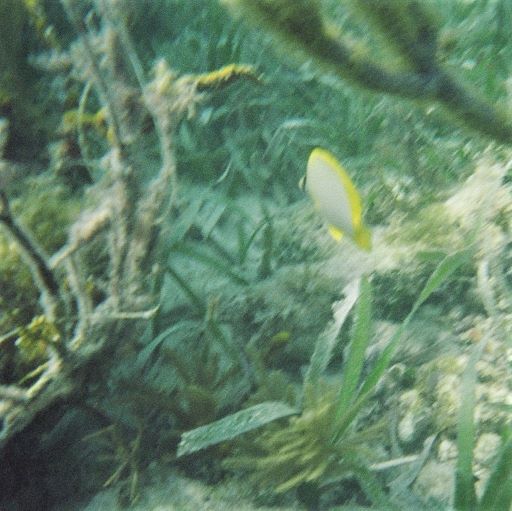
Since the coral reefs in Biscayne are shallow, you can opt for an inexpensive waterproof cover on your phone. Just make sure you test that cover before you head out on vacation if you are going to risk your critical device. Even though the most current iPhone models are waterproof, they are not “salt-proof” so a protective cover is still essential.
If you are planning to spend a lot of time in the water while in Florida and don’t want to risk your phone, then it’s well worth the small investment in a point-and-shoot waterproof camera like the Kodak PixPro .
Tips for Your First-Time Snorkeling Adventure
You’ll find snorkeling in Biscayne National Park one of the easiest adventures. The guides will go out of their way to make this a great trip for you and to ensure you know what to do. Here are a couple of tips:
Pay attention during orientation – Staff members will cover how to use your equipment and safety rules. The orientation only takes a few minutes so make sure you are all ears.
Don’t touch – It’s so tempting to touch all the beautiful things you’ll see underwater. But don’t! The oils in your hands can kill the coral. And many fish and plants are like jellyfish and exude chemicals that can cause a rash on your skin.
Keep your boat in sight – When you come up from a snorkel dive, take a look around and make sure you see your boat close by. It’s easy for the tides to slowly move you away from the boat. By checking regularly you won’t have to swim back quite so far when it’s time to leave.
Planning Your Trip
The best time of year to go snorkeling in biscayne national park.
You can snorkel throughout the Keys all year round and the quality of your experience will be the same. The water will be about 10 degrees warmer in the summer, the average water temperature in the keys in winter is 73°F, in spring 78°F, in summer 85°F, and in autumn 81°F. Personally, I find 73 a bit chilly so would wait until spring. However, that’s why you can rent a shorty wetsuit with your snorkel tour.
Some people say to avoid mid-August to mid-October because it is the peak of hurricane season, which means more storms. But Florida usually gets plenty of notice regarding incoming storms so even in hurricane season you’ll have time to change your plans if needed.
Where is Biscayne National Park
Biscayne National Park is 95% underwater, encompassing most of Biscayne Bay. The bay starts on the South end of Miami and continues for 40 miles along the Atlantic Coast of Florida. The visitor’s center and offices for Biscayne National Park are on the South end of the bay, just outside the town of Homestead.
It takes 1.5 to 2 hours to drive to the Dante Fascell Visitor Center in Biscayne National Park from Miami. We were easily able to make it a day trip from Miami.
You can also get to the park by private boat (no jet skis or wave runners though). Boaters will find mooring buoys near the best snorkeling spots.
It’s only a 30-minute drive to Everglades National Park from Biscayne so many people combine these 2 parks into one adventure.
Where to Stay when Visiting Biscayne National Park
You’ll find dozens of traditional motels and hotels in nearby Homestead. These are very reasonably priced with the exception of NASCAR week in October at the Homestead Speedway.
Check hotel availability in Homestead Here
If you prefer a resort atmosphere on the waterfront then drop on down to Key Largo which is only about 45 minutes South of the park.
Check hotel availability in Key Largo Here
Frequently asked questions about Biscayne National Park Snorkeling
It is definitely worth stopping at Biscayne National Park to snorkel. The coral reefs and shipwreck are home to gorgeous and colorful aquatic life. The tour staff is professional and shares immense knowledge.
You can not snorkel in Biscayne from shore without a boat.
If you don’t want to snorkel, you can still join a snorkel tour with your family and relax in the boat. Or you can join one of the boat tours that don’t include snorkeling.
The tour staff will give instructions for snorkeling before your tour. You’ll be in a small group so it will be easy to get additional assistance if needed.
With water temperatures in the mid-70s to high 80s, most people prefer to snorkel without a wetsuit. During the cooler winter months, you can rent a shorty wetsuit if you are uncomfortable with the water temperature.
Biscayne National Park is a snorkeler’s paradise that offers an unforgettable experience for both novice and experienced divers. You’ll find crystal-clear waters, abundant marine life, and stunning coral reefs in Biscayne Bay. The park provides visitors with a unique opportunity to explore one of the most diverse underwater ecosystems in the world. Whether you’re looking for a relaxing day trip or an adventurous weekend getaway, Biscayne National Park has something to offer everyone.
The Authors: Hey, we are Ladona and Brad, avid campers and hikers. We are crazy about getting outdoors at every possible moment and have decades of experience exploring nature. Our current goal is to visit all 63 US National Parks and just completed #42. WooHoo! Our mission is to help you plan your own adventures and create memories beyond your imagination!
Lor & Jor Explore

Snorkeling in Biscayne National Park | A Complete Guide
Updated March 2024
This post may contain affiliate links. If you use them, we earn a small commission, at no extra cost to you.
There's an overlooked destination hiding beneath the clear waters off the Miami coast. It's the only coral reef system in the continental US. Home to hundreds of different species of birds, fish, and other marine life.
Speeding across the shallow turquoise waters by sail or motor, you might be tempted to think there isn't much to see in Biscayne National Park .
But 95% of its 173,000 acres is below the surface. Centuries old shipwrecks, and a whole ecosystem of marine life.
Coral creates a habitat for a huge diversity of fish. Sea turtles, manatees, and bottlenose dolphins are all regular tenants of the park's waters.
That makes snorkeling an essential way to properly see Biscayne. Over multiple trips we've been able to experience a large amount of the park. We've put together this guide to help you plan your own visit. We're covering the best places to snorkel, when to go, and everything you'll need to bring.
Planning your Snorkeling Trip to Biscayne
Types of tours offered.
The Biscayne National Park Institute is an official partner of the National Park System. Formed under the non-profit Florida National Parks Association, it serves to provide experiences to visitors that are both immersive and educational .
This is who we've chosen to snorkel with on both of our visits to Biscayne. Not only do they offer the best experiences , most leaving directly from the Dante Fascell Visitor Center, their proceeds also go back into supporting the park itself, so we know our money is helping to protect this place for the future.

Two other vendors authorized to operate in the park are Ace Diving and Diver's Paradise . They cater specifically to scuba divers, but also offer snorkeling trips.
Prices are fairly comparable across all three vendors for a half day on and in the water.
For simplicity's sake we're going to cover the specific tours offered by Biscayne National Park Institute, since that's where we believe you get the best bang for your buck and we have personal experience with them.
Guided snorkel experience
This is a half day tour that leaves from the visitor center in Homestead both in the morning and early afternoon .
You'll take a powerboat across Biscayne Bay to the captain's destination of choice, depending on that day's conditions. Group sizes are up to 16 people and they do offer private trips.
We'll get into the actual snorkeling locations a bit later, but this experience could take you out to the coral reef, the mangroves on the bayside, or even some of the shipwreck sites.
All of the tour guides at BNPI are a wealth of information on the park's wildlife and history. You can expect to return with a head full of new facts about the area and what you've seen.
Note the minimum age for this tour is 8 years old and it's recommended that you are a good swimmer. You do not however need to be an experienced snorkeler and first timers shouldn't be discouraged from going out.
Sail, paddle, and snorkel
For a well rounded adventure we can highly recommend trying out the sail, paddle, and snorkel experience .
Your guide will take you across the bay in a sailboat and will likely encourage your participation along the way . As long as you're comfortable with it, you might be put to work helping hoist the sails, mooring the boat to a dock, or even sitting at the helm and steering.
It's a slower journey across the water, making for a six hour day, but you'll also have plenty of time to relax and soak up the sun.
On arrival at one of the islands, possibly Boca Chita Key, Elliott Key, or Adams Key, you'll have opportunity to walk around and eat the picnic lunch you've brought along. Then, hop in a double kayak and paddle along the shoreline or mangroves. Your guide will lead you out to the best snorkeling spot for the day and give you time in the water.

Snorkel and island visit
This is the one snorkel experience that departs from Dinner Key Marina in Coconut Grove, a historic neighborhood in Miami, rather than from the visitor center.
Coconut Grove is about 30 minutes away from Miami International, so this could be a great option if you're visiting the city and are either short on time or don't have a vehicle. For perspective, the Dante Fascell Visitor Center is almost a one hour drive from the airport.
On the six hour tour you'll get to experience two different snorkel locations . On the way you'll pass by Stiltsville, which is a group of over-the-water shacks with a colorful history. Lastly, you'll make a stop on one of the park's islands.
Snorkel and paddle eco-adventure
Another great way to get in both a paddle and a snorkel . This tour puts you on a stand up paddleboard rather than a kayak. Your guide will lead you and a small group of no more than five others through the mangroves.
If you're comparing this trip to the sail, paddle, and snorkel experience, note that there's a possibility you'll be taken out into the open ocean for snorkeling around the coral reef. The sailing trip remains inside the bay. Otherwise, the tours are very similar and which one you choose really depends on how interested you are in the sailing portion.

Where to Snorkel
There are some fantastic places to see in Biscayne's waters. However, which locations you end up exploring will depend on daily weather conditions and is ultimately the captain's decision.
If you have a specific place you'd like to visit, your best option is to contact BNPI directly and inquire about the likelihood. Consider booking a private tour for a more tailored experience.
Below are the main snorkeling highlights within Biscayne National Park.
Oceanside Coral Reef
If you plan your visit during the calmer summer months you'll have a better opportunity of getting out of Biscayne Bay and into the open ocean. There, you can snorkel among the patch coral reefs , which are small, isolated outcroppings of reef.
Among these reefs are brain coral, colorful sea fans, and an endangered species called Elkhorn coral, which is considered to be one of the most important for reef-building. These habitats of course invite thousands of fish and other wildlife.

Biscayne may lie almost entirely underwater, but that doesn't mean it can't have trails, like all the other national parks.
There are six shipwrecks along the Maritime Heritage Trail , three of them being ideal for snorkeling because of their shallow depth. Fish love to take shelter among the wreckage, making them especially interesting.
Mandalay Shipwreck | A luxurious schooner that ran aground in the early hours of New Years Day, 1966. Within no time at all the ship was picked apart by scavengers, who made off with the vessel's instruments, as well as its wealthy passengers' cameras, watches and purses.
Arratoon Apcar | This iron steam ship ran aground on Fowey Rocks in 1878, narrowly missing the lighthouse that was under construction at the time. Remains of the hull and beams, covered in coral, can still be seen in about ten to twenty feet of water.
Unknown vessel | Large ballast stones on the ocean floor mark the site of a 19th century wooden sailing vessel, but not much else is known about the wreckage.

Fowey Rocks Lighthouse
This structure, known as the "Eye of Miami" was originally built in the 1870s, but is still maintained by the US Coast Guard. The lighthouse itself is closed to visitors, but there's great snorkeling to be found around its base. It was the most recent addition to Biscayne's Maritime Heritage Trail.
Because coral reefs are such a popular destination for snorkeling, it can feel disappointing to not make it out of the bay, but the mangrove forests are bustling with aquatic life . In fact, they're called the 'nurseries' of young fish.
The stretches of undisturbed mangrove forest in Biscayne sometimes have a maze-like appearance . It was here, while paddling, and then gently floating on the currents while snorkeling, that we saw the most wildlife on our first visit.

The best time to visit Biscayne National Park is from December to April . Winter weather is both comfortable and mild, with water temperatures averaging around 73F (23C).
If you're used to colder temperatures like us the water can actually feel refreshing and, once you're in it for a few minutes, you'll probably be just fine. Native Floridians on the other hand seem to think it's a bit too chilly for swimming. If it's a little cold for your taste you can always rent a wetsuit.
Spring is a great time to visit , with the average water temp reaching 78F (26C). This time of year however comes with larger crowds. Fortunately, all of BNPI's tours are smaller in size, so as long as you plan ahead and book online there's no need to worry.
Most experienced visitors to Florida will recommend you avoid the summer months. The reason being very hot and humid days with the highest chance of rain. The mosquitoes this time of year can also be unbearable.
Though hurricane season typically stretches from June through November, the highest chances are actually from August to October. You can certainly still plan a trip during this time, just be aware that you could have to change your plans .
What to Bring
Your snorkel gear . Fins are required inside the park, so don't forget them. If you don't have you own you can rent a full set for $16 or fins for $6. BNPI will provide an inflatable vest as part of your tour.
Reef safe sport sunscreen .
A hat and sunglasses.
Some UV blocking lightweight clothes. If you're going on a winter day consider a windbreaker to block the chilly air on the boat.
Bug spray .
A travel towel .

Lunch or snacks. For the full day tours you'll want to pack your own picnic lunch. There will be a cooler on board where you can store food.
Your boat will have a jug of cold water to keep you hydrated, so be sure to bring a reusable water bottle.
A waterproof phone case.
Dry bags to protect your stuff.
Your camera and a GoPro for capturing photo and video under the water.
Water shoes or sandals.
Want to see Biscayne? Pin this blog post for later!

Planning a trip to Florida? Have a look at our guides:

Ichetucknee Springs | Tubing the Crystal Clear River

Hiking to Deep Hole in Myakka River State Park

Myakka Canopy Walkway | Exploring Florida's Myakka River State Park

Paddling the Emerald Cut from King's Landing
Some of the links found on our website are affiliate links. As Amazon Associates we earn from qualifying purchases. We may also receive a small commission at no extra cost to you through other links. Using them is a way of supporting us, helping us offset the cost of running this website, and ensuring that we’re able to continue providing free content and resources. That makes y’all totally awesome and we truly appreciate the support! If you've found value in our guides, you can say thanks with a virtual coffee .
Lorem ipsum dolor sit amet, consectetur adipiscing elit. Suspendisse varius enim in eros elementum tristique. Duis cursus, mi quis viverra ornare, eros dolor interdum nulla, ut commodo diam libero vitae erat. Aenean faucibus nibh et justo cursus id rutrum lorem imperdiet. Nunc ut sem vitae risus tristique posuere. uis cursus, mi quis viverra ornare, eros dolor interdum nulla, ut commodo diam libero vitae erat. Aenean faucibus nibh et justo cursus id rutrum lorem imperdiet. Nunc ut sem vitae risus tristique posuere.
Letters from the road
Follow us on instagram.


2 Awe-Inspiring Biscayne National Park Tours
Last Updated on May 5, 2024 by Bonnie
When visiting Biscayne National Park , your first goal should be to get out on the water. That’s because 95% of the park is underwater. Without your own boat, the best way to do this is with one of the Biscayne National Park tours operated by the Biscayne National Park Institute. Whether you are taking a boat tour or doing something more active, such as snorkeling at Biscayne National Park, the water is where you really experience all that the park has to offer.
On our most recent visit, we actually took two different Biscayne National Park tours: the Snorkel & Paddle Eco-Adventure and the Boca Chita Island Experience. On the snorkel and paddle tour, we had a chance to get in the water and really see the underwater plant and animal life. As you’d expect, it was a physically demanding tour. The Boca Chita Island tour, however, was perfect for those looking for something a bit more relaxed.
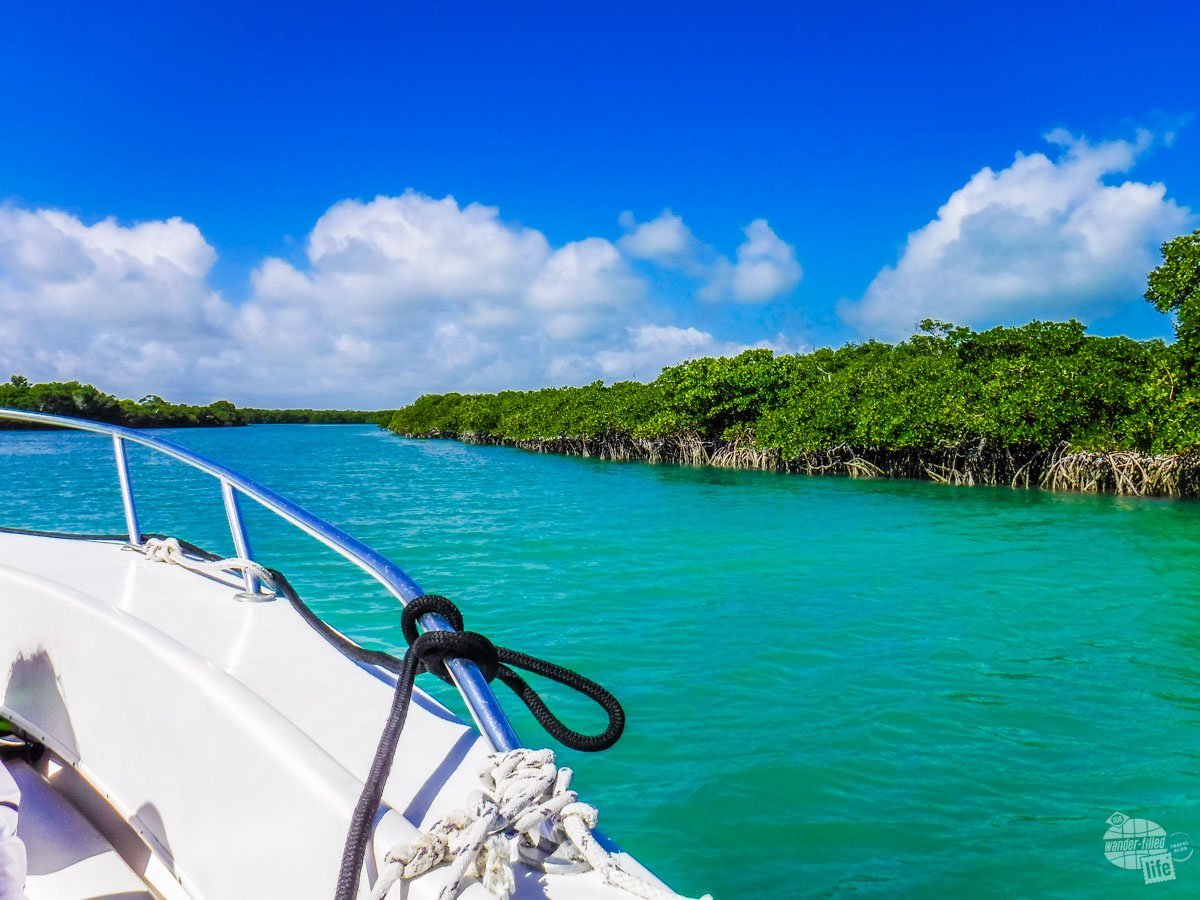
Whatever your interests, the Biscayne National Park Institute should be your first stop for exploring the park without your own boat.
(Disclaimer: When we link to places where you can buy our stuff or places we stayed, we are using special codes that earn us commissions on the sales at no additional cost to you. Please see our Review Policy for more information.)
About the Biscayne National Park Institute
The Biscayne National Park Institute is a non-profit partnership between Biscayne National Park and the Florida National Parks Association. The Institute provides Biscayne National Park tours and educational experiences for visitors. The proceeds from the various tours and programs are used directly to support Biscayne National Park.
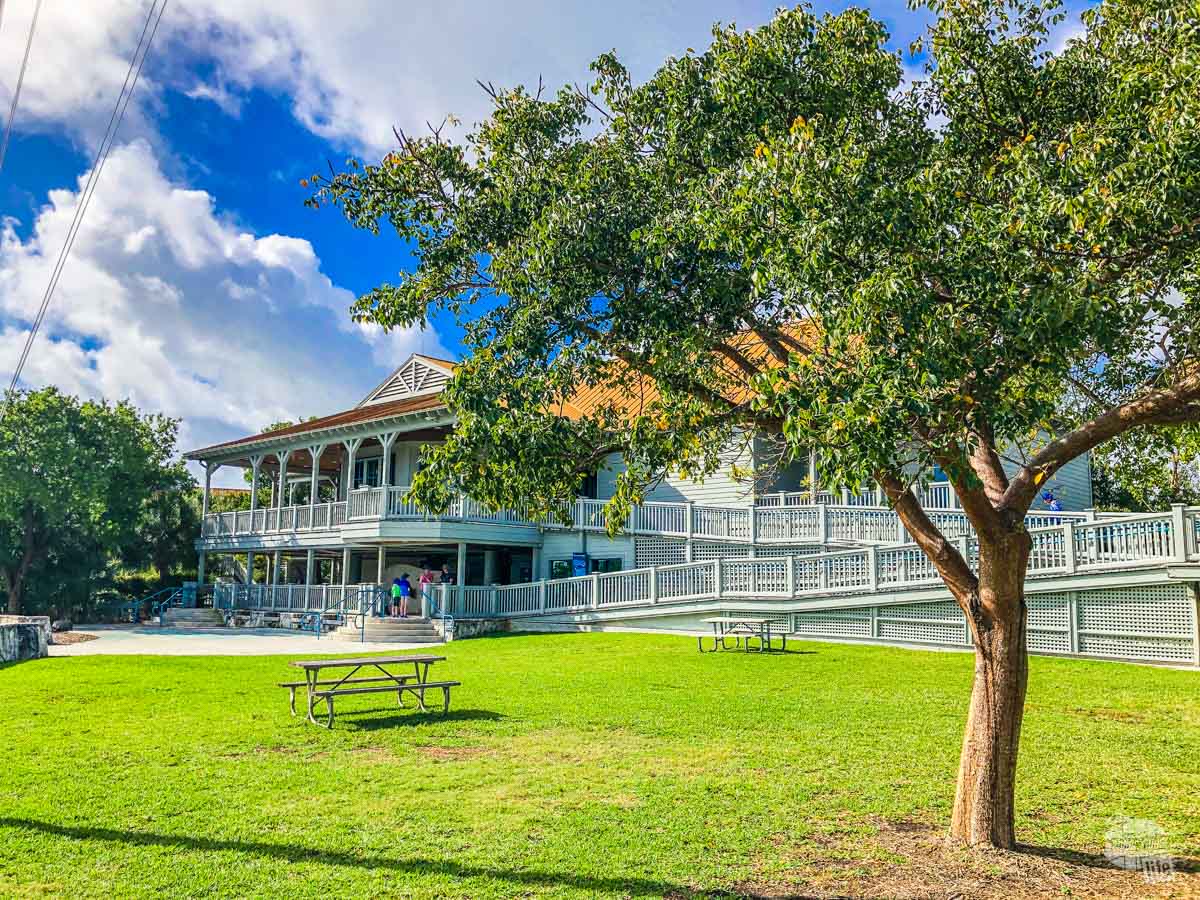
The Institute offers a variety of Biscayne National Park tours, providing visitors to the park with a wide range of experiences. Visitors looking for some adventure can take a snorkel and/or paddle tour. Those looking for a more relaxed tour can take one of the daily boat tours to picturesque Boca Chita Key or a once-a-month evening cruise through Biscayne Bay.
On each tour, you’ll learn about the history and natural world of Biscayne National Park, as well as the surrounding area.
Snorkel & Paddle Eco-Adventure at Biscayne National Park
I’ll be honest, the Snorkel and Paddle Eco-Adventure is probably not a tour that we would have chosen for ourselves. When the folks with the Biscayne National Park Institute reached out to us and suggested this tour, however, we were intrigued. We thought this would be a good opportunity to push ourselves a little and try something different, so we accepted.
While parts of the tour were challenging, we really enjoyed it and highly recommend this tour even if you’re not experienced at paddleboarding or snorkeling. Just make sure you can handle the physical aspects of paddleboarding, even if you have to sit or kneel as we did.
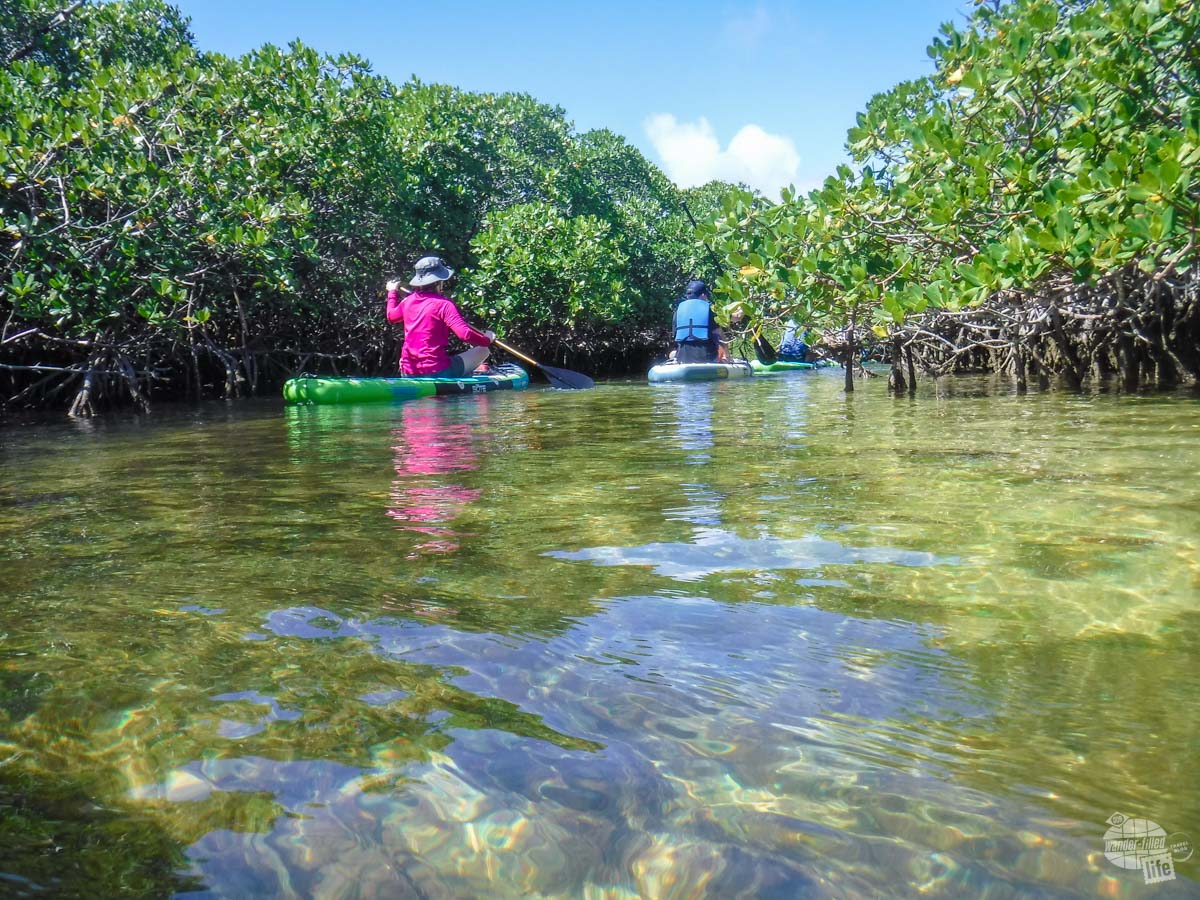
On the 6-hour tour, we spent about 45 minutes getting to the paddleboard location in Jones Lagoon and about two hours paddleboarding through the area. From there, we went over to nearby Adams Key for a picnic lunch.
After lunch, we relocated again for the snorkeling portion of the tour. The captain/tour guide will decide the best location based on the weather and visibility. We ended up on the bay side of one of the keys. We had about an hour to snorkel before heading back to the visitor center.
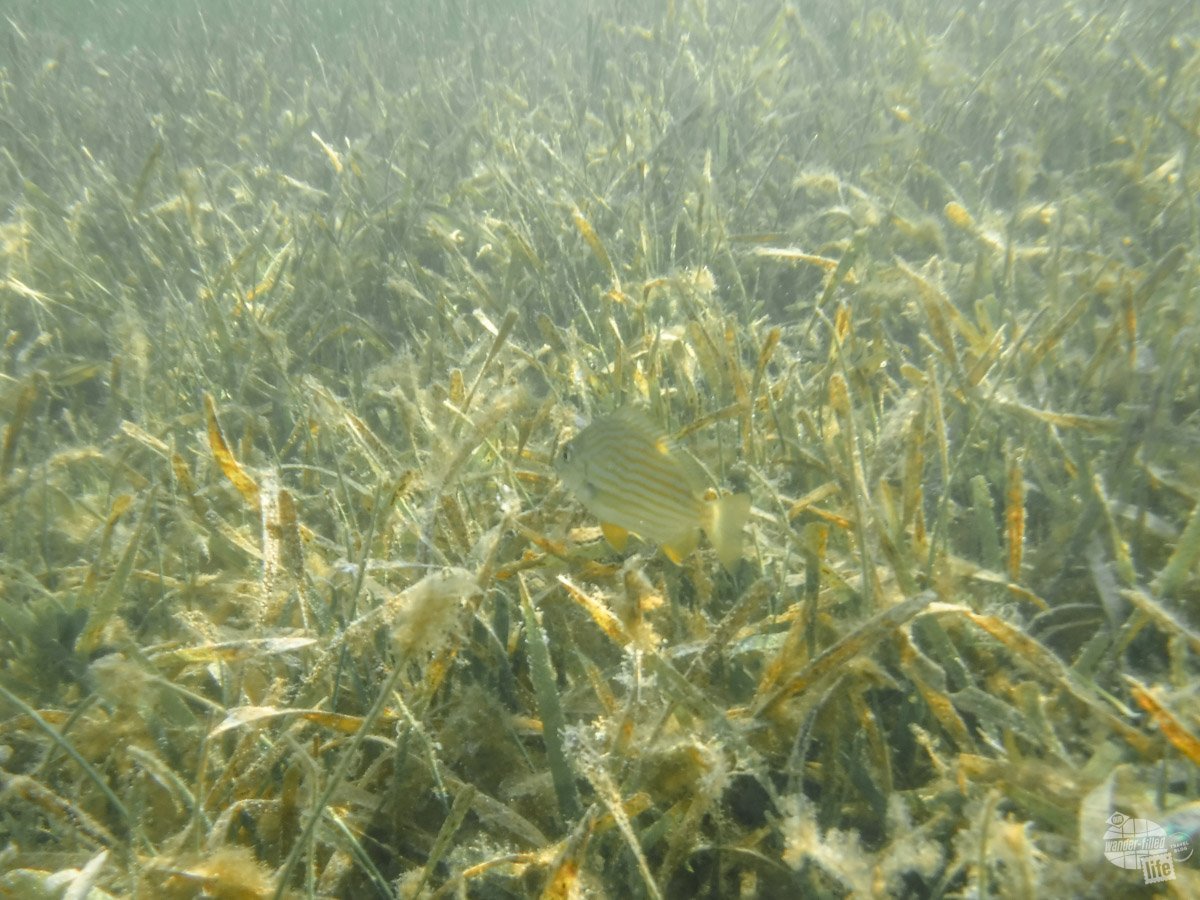
One of the things we loved most about this tour is that the boat is limited to only six people. This made the experience much more personal than many other tours that we’ve done.
Paddleboarding in Biscayne National Park
While we have both been canoeing and kayaking, this was our first time paddleboarding. The hardest part of paddleboarding is keeping your balance when standing. Sitting or kneeling on the board, however, really isn’t that difficult. It can be tough on your knees after a while, though.
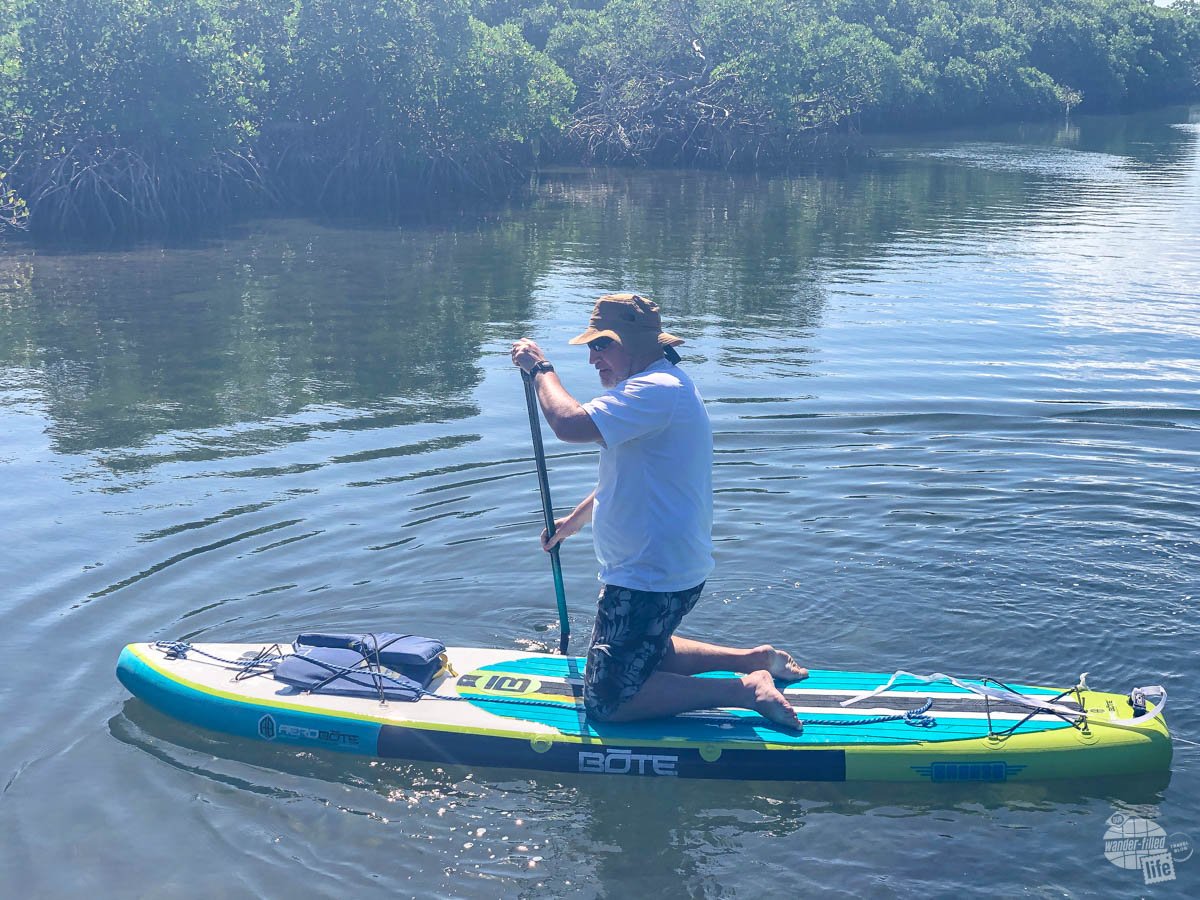
Grant attempted to stand a couple of times early on but was never successful. Let’s just say that he figured out the water temperature fairly quickly. I didn’t even attempt to stand until we were close to the end of the tour. I made it upright but was very unsteady. I’ll be honest, I stood long enough for Grant to get a picture, then promptly spent the rest of the tour sitting or kneeling.
What I enjoyed most about this part of the tour was getting to see the underwater plant and animal life up close and personal. Our guide did a great job finding unusual sea creatures, telling us about them and letting us see them up close.
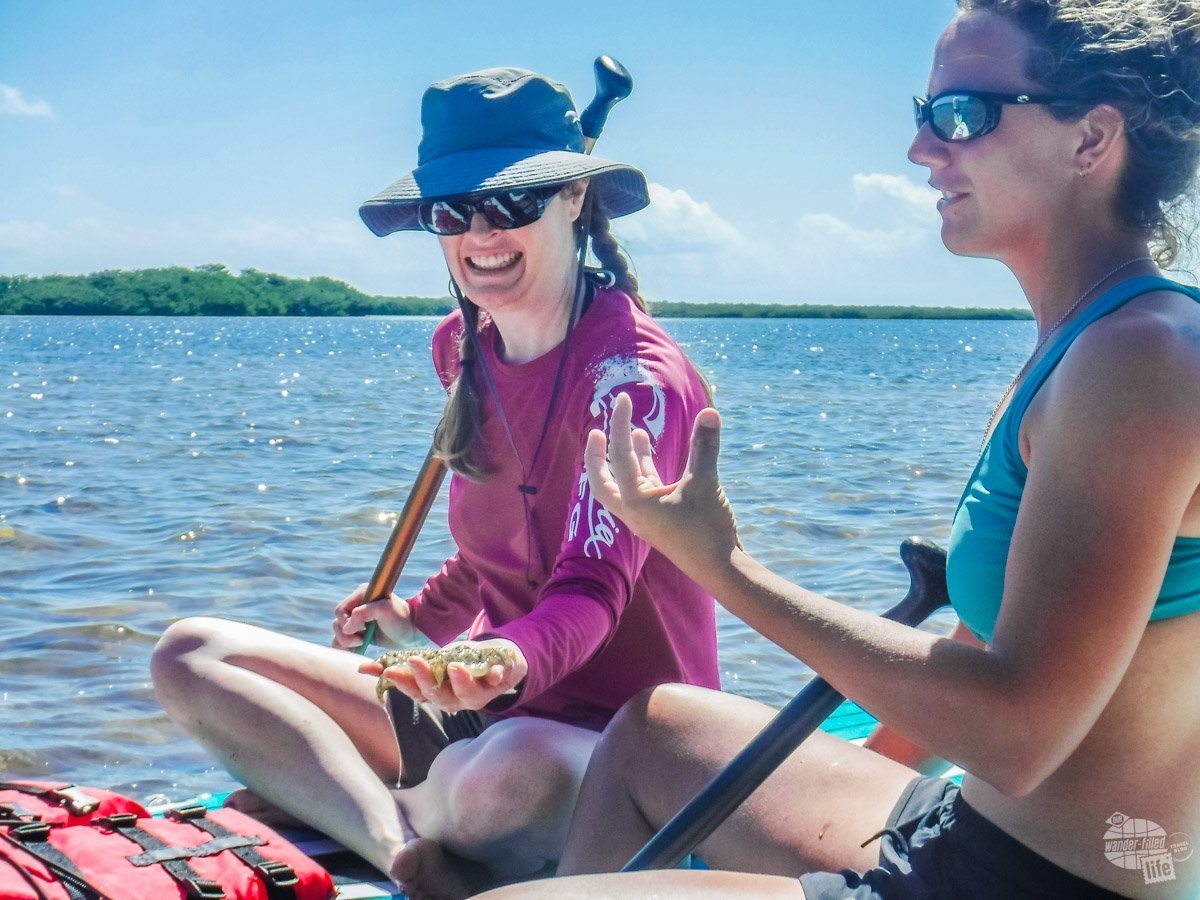
During our paddle, we saw a sea cucumber, a spotted sea hare (a type of large sea slug), a few starfish, many Cassiopea jellyfish and a couple of small nurse sharks. Of course, we also saw countless fish and birds.
We paddled all around the lagoon and through mangrove tunnels. At times the water level was so low a few people got off and walked their boards through the seagrass. Most of the time, though, the paddling was fairly easy. Staying balanced while sitting or kneeling was, thankfully, much easier than I expected!
Snorkeling in Biscayne National Park
Grant loves to snorkel and dive. I, however, do not. I’m actually not a fan of open water.
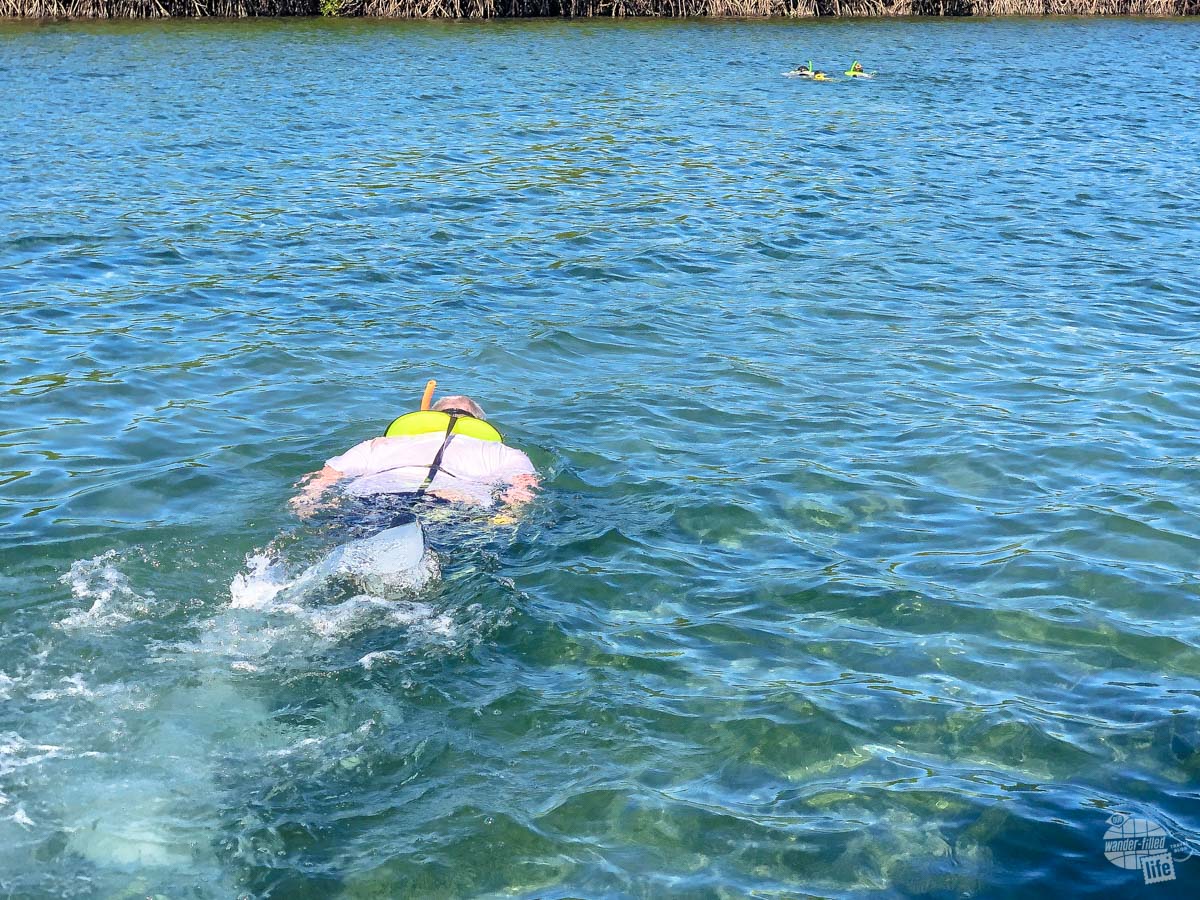
I don’t mind being ON the water – in a boat, canoe, kayak, or paddleboard. For whatever reason, I don’t like being IN the water. I am a fairly good swimmer when it comes to pools. There is something about the vastness of the ocean that is overwhelming, though. I can handle shallow water, as long as I can stand, the water is clear and the bottom is free of plants; I really don’t like walking on seagrass or other plants that could be home to little (or big) critters.
When the park offered this tour and the opportunity for snorkeling in Biscayne National Park, I knew this was something Grant would love. Snorkeling is definitely not my thing, but I didn’t want Grant to miss out on the opportunity.
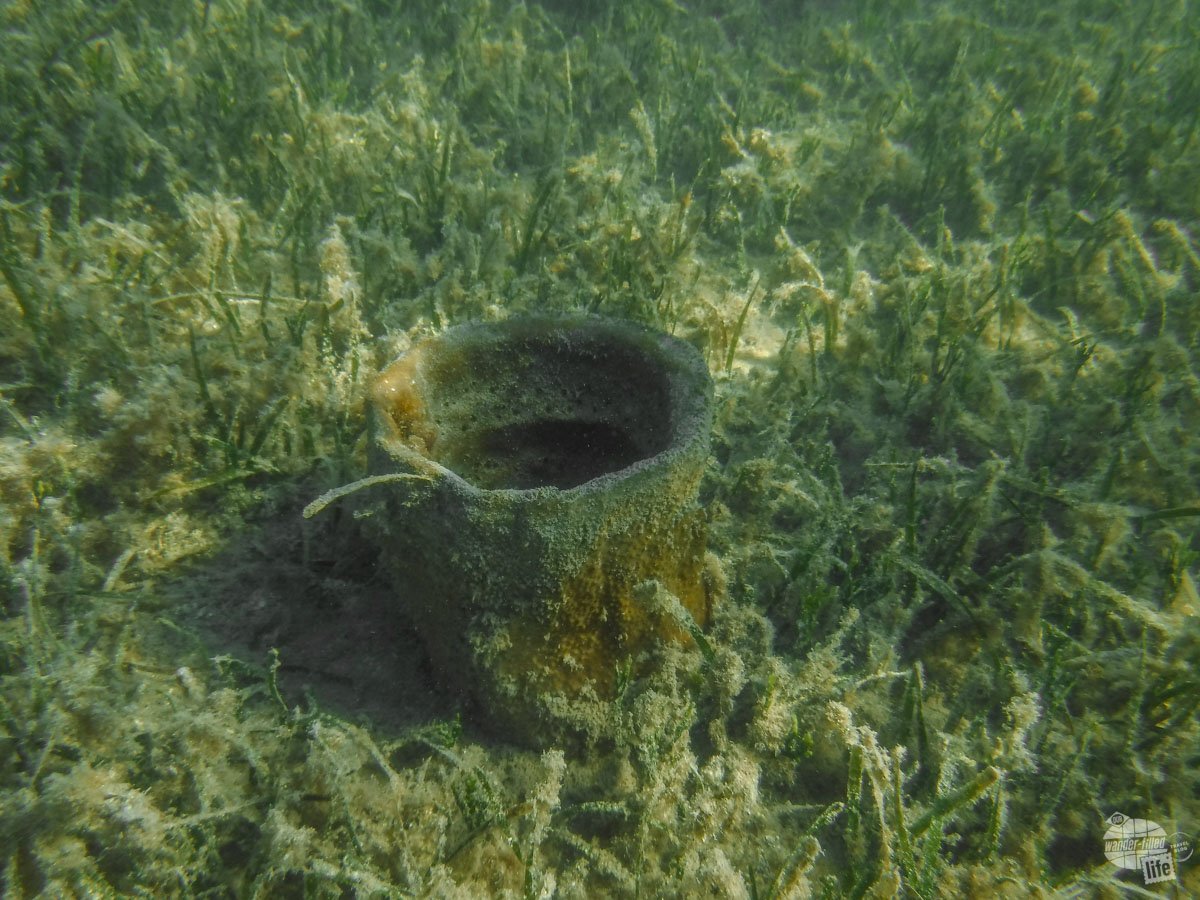
As expected, Grant took off snorkeling and explored all over the area. In the open cove, he found plenty of fish and a few pieces of coral. His favorite part was looking in and under the mangroves and finding all the fish taking shelter among the roots.
I, of course, just hung out at the boat. Thankfully, our guide was very understanding. She got out one of the paddleboards which I used to “snorkel” and still have something to keep me “grounded.”
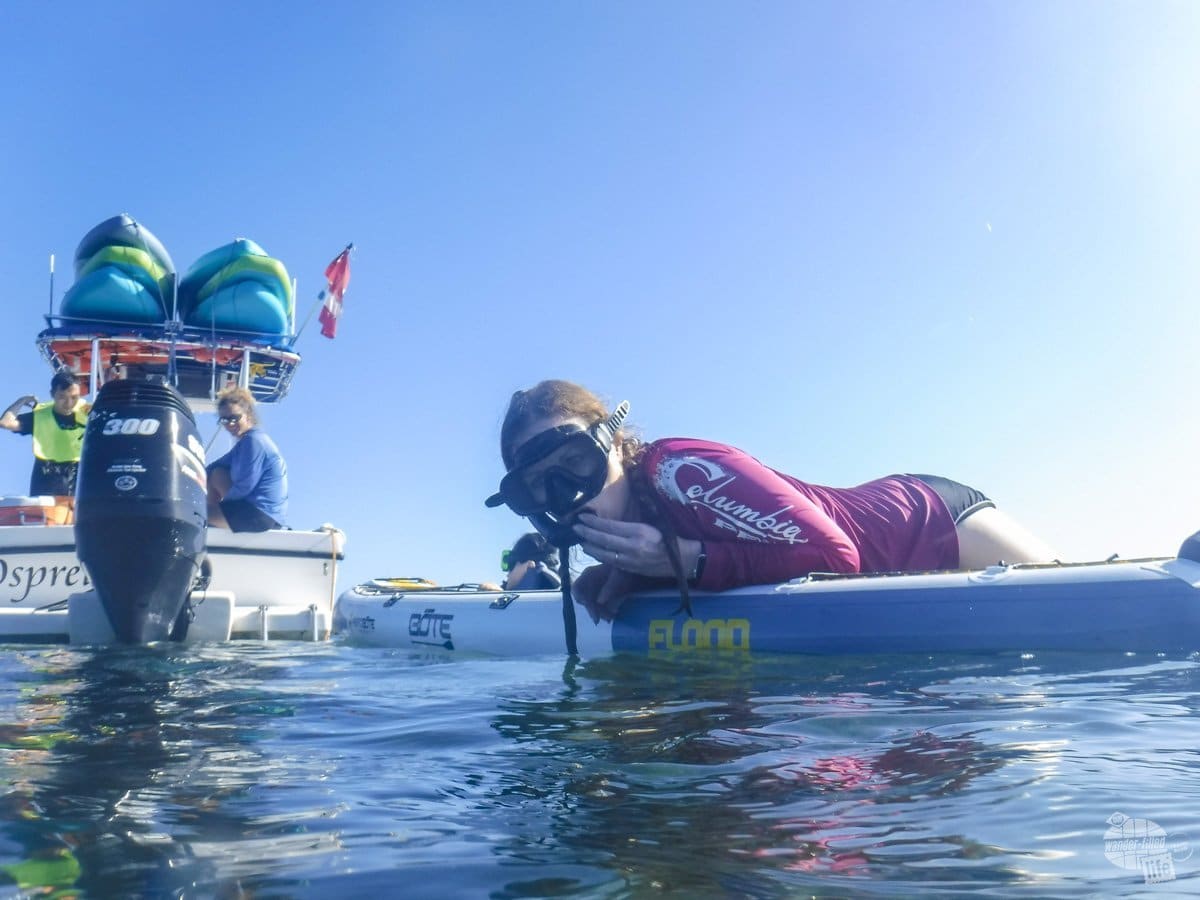
While I didn’t get very far away from the boat, I was able to see a variety of plants and small fish. The highlight was seeing an eel hanging out and swimming through the grass.
I also learned that breathing through a snorkel really isn’t as difficult as I thought it might be.
What to Expect on the Snorkel and Paddle Eco-Adventure
Throughout the boat ride and the paddling, our captain/tour guide provided a history of the park and the area. We learned many great stories of previous island inhabitants and why Biscayne National Park was created.
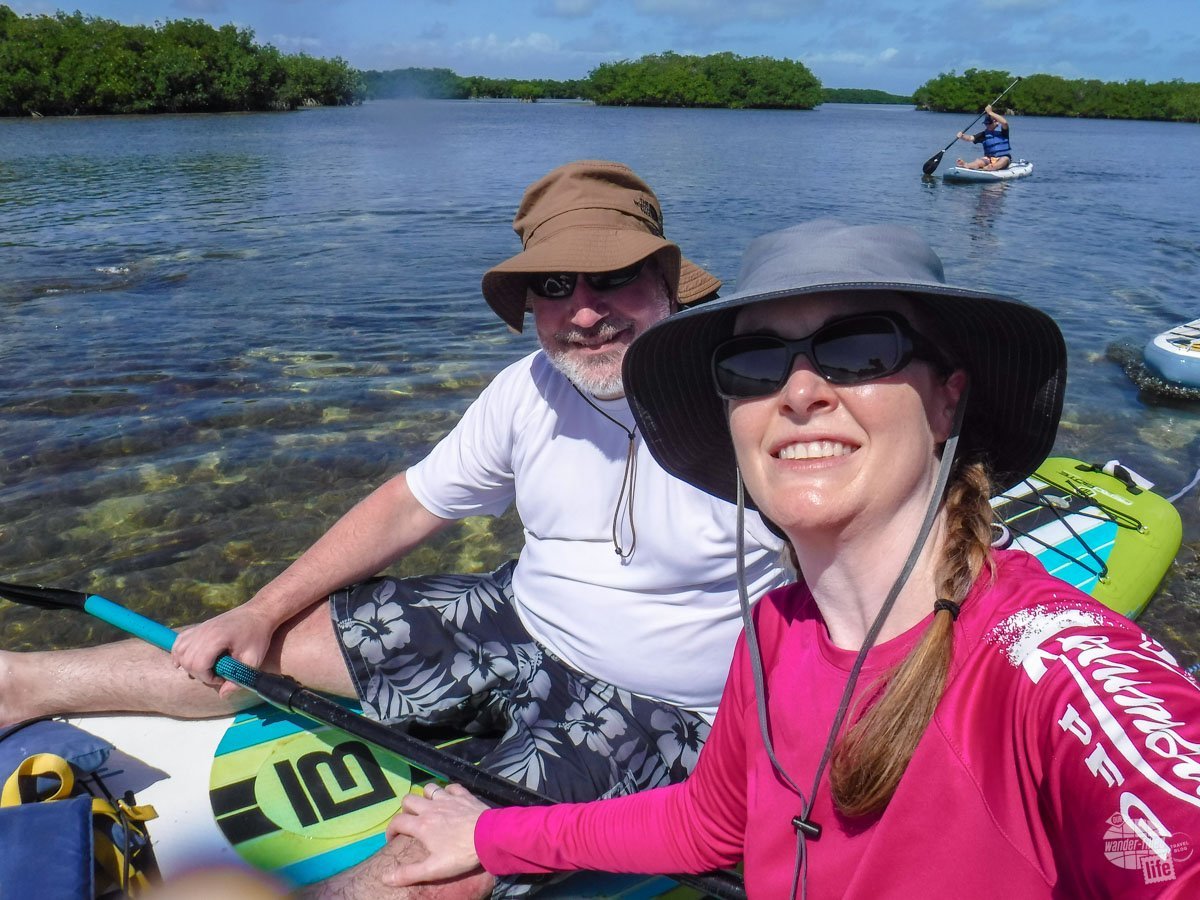
As we started out from the dock, our boat had some mechanical difficulties. I really have no idea what was wrong, but the captain handled it very well. She acted quickly, without panicking and got us on our way so we could enjoy the day.
Once we reached the paddleboarding location, our guide gave us the basics of how to paddleboard. You certainly do NOT have to have any experience before this tour. In fact, only 2 of the 6 people on the tour had prior paddleboard experience. We spent about 2 hours paddling with little to no shade, so I’d also suggest reef-safe sunscreen and perhaps a long-sleeved sun shirt. You can get both of these in the Biscayne National Park gift shop when you check in for your tour.

You’ll need to bring your own lunch and a water bottle. There was a cooler on board and plenty of water to refill your bottle as needed.
In terms of snorkeling, our guide helped us all to get situated and in the water. We were free to explore on our own, as long as we stayed within sight of the boat. In addition to me not being comfortable snorkeling, there was another couple who I don’t think could even swim. They did not speak English well, so we weren’t sure. The guide did a great job of working with us all to help ensure we still enjoyed the snorkeling portion of the tour.
Boca Chita Island Experience
The three-hour Boca Chita tour is perfect for visitors of all ages. On the 45-minute ride to the key, the tour guide will tell you some of the history of Boca Chita Key and the other keys in Biscayne National Park. Once we arrived, we had about an hour and twenty minutes to explore on our own before returning to the visitor center.
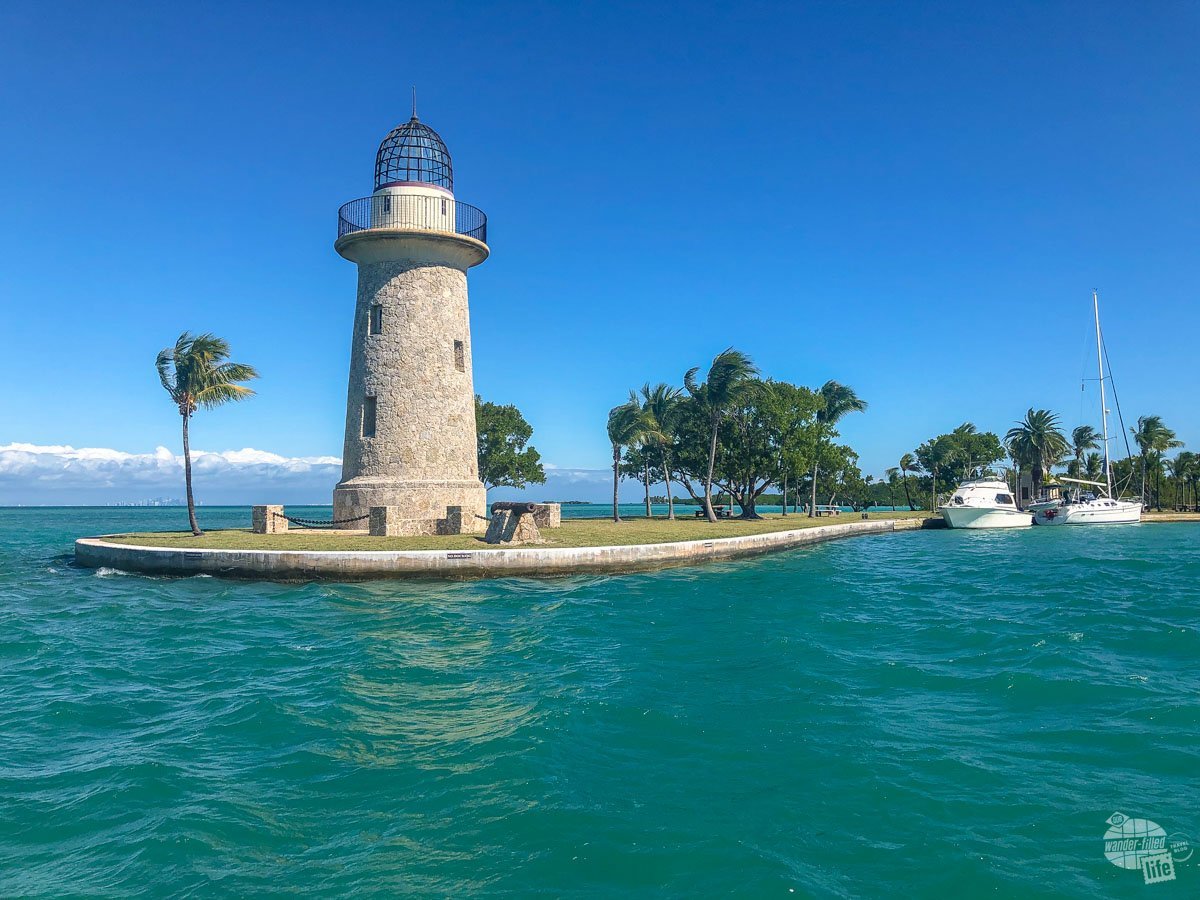
Boca Chita Key is a small island in Biscayne Bay, once owned by Mark Honeywell. In the 1930s, he developed half of the island to include an ornamental lighthouse, a small chapel and a garage. The other half of the island was left natural and today includes a short walking trail.
The Honeywells often hosted parties, with guests making the trek from Miami Beach aboard luxury yachts. Many of the structures still stand today, including the cannon that was fired to announce guests when they arrived at the island! Visitors can climb the 65-foot lighthouse for an impressive view of the island and the surrounding water.
What to Do on Boca Chita Key
We started our Boca Chita Key tour by checking out the view from the lighthouse. Yes, you have to climb the narrow, winding staircase to the top, but it really was not a difficult climb. The view from the top was well worth the small effort to get up there. The blue water of Biscayne Bay provided a picture-perfect sight in all directions.
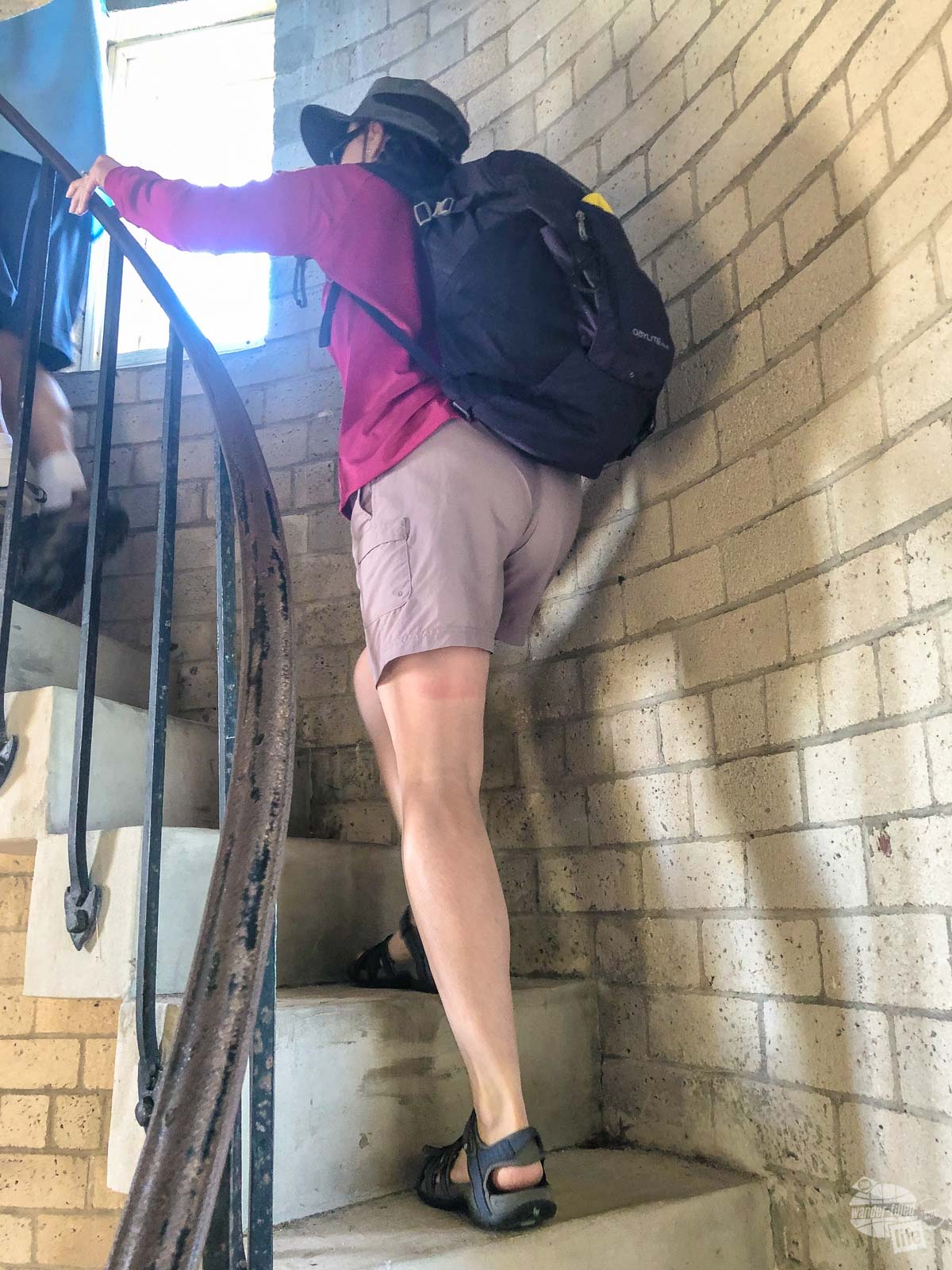
From the lighthouse, we could also easily see all the private boats, both big and small, tied up in the harbor. When we were there, we spotted what looked like a tugboat converted into a “yacht.” I suppose it is the RVers in us that were fascinated by this.
There is a small man-made beach if you’re interested in sitting out in the sun or swimming.
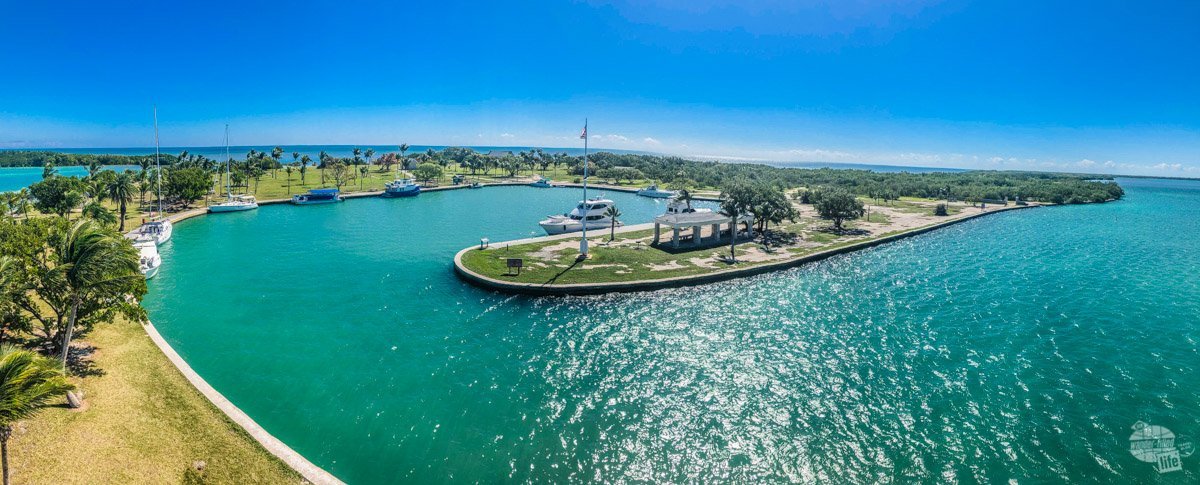
Next, we headed over to the short trail that runs across the undeveloped side of the island. On the trail, you’ll find plenty of shade from the surrounding trees. Unfortunately, you’ll also likely find more mosquitoes.
The trail used to wrap around the island, but Hurricane Irma destroyed the footbridge, For now, you’ll have to just turn around then retrace your steps back. In all, it took us 15-20 minutes to walk the trail. That was with a few stops for pictures.
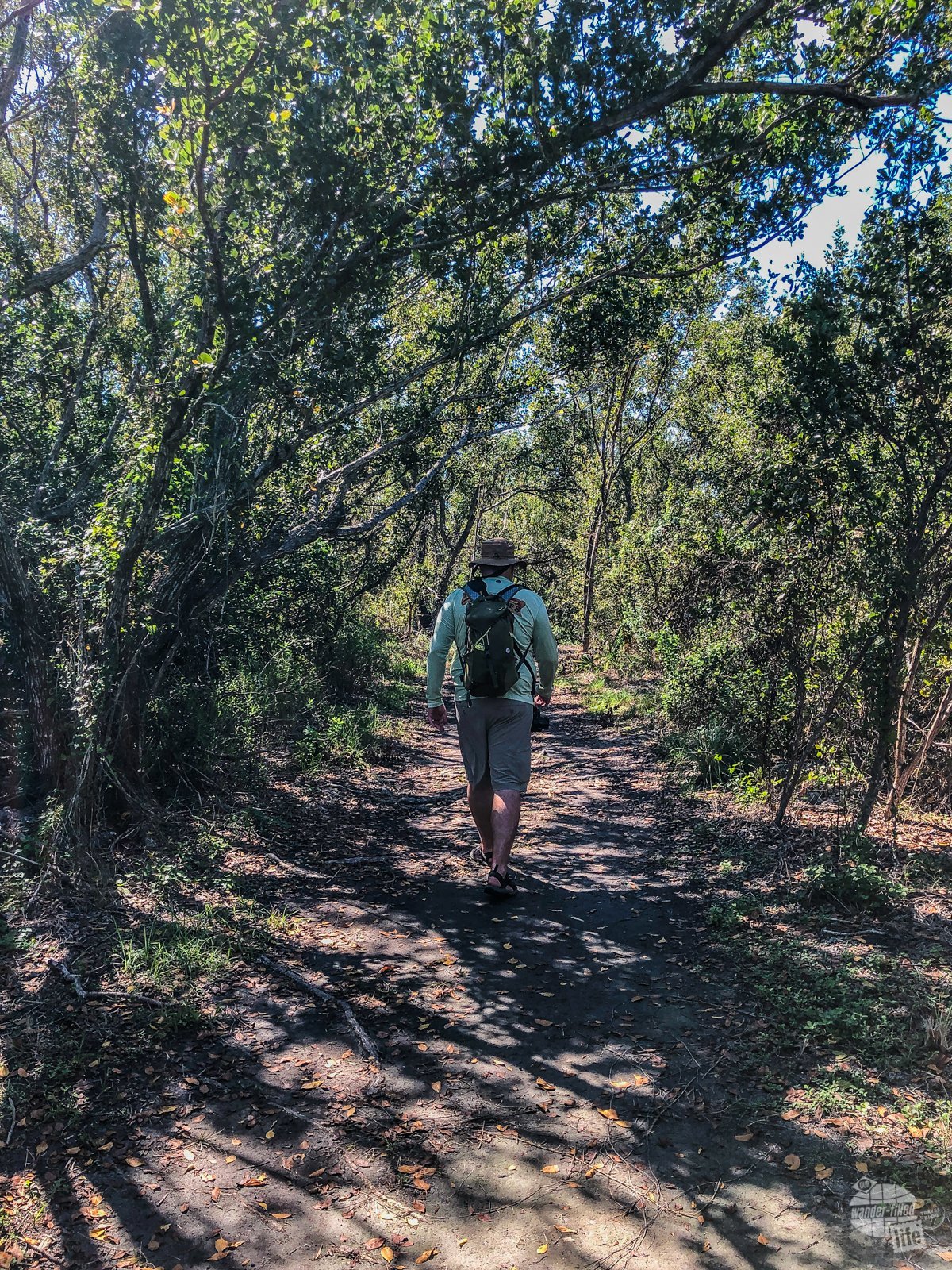
There are also plenty of picnic tables if you want to bring lunch with you. We actually brought our lunch but didn’t have time to eat before we had to get back on the boat. By this time, the wind had picked up and clouds had moved in, so the timing ended up being pretty good.
What to Expect on the Boat Ride
The high-speed boat that takes you to Boca Chita Key is mostly covered, with seating around the perimeter. As we boarded, the captain warned us that we may get a little wet, especially if seated towards the front. As predicted, those sitting in the front did get splashed, some more than others.
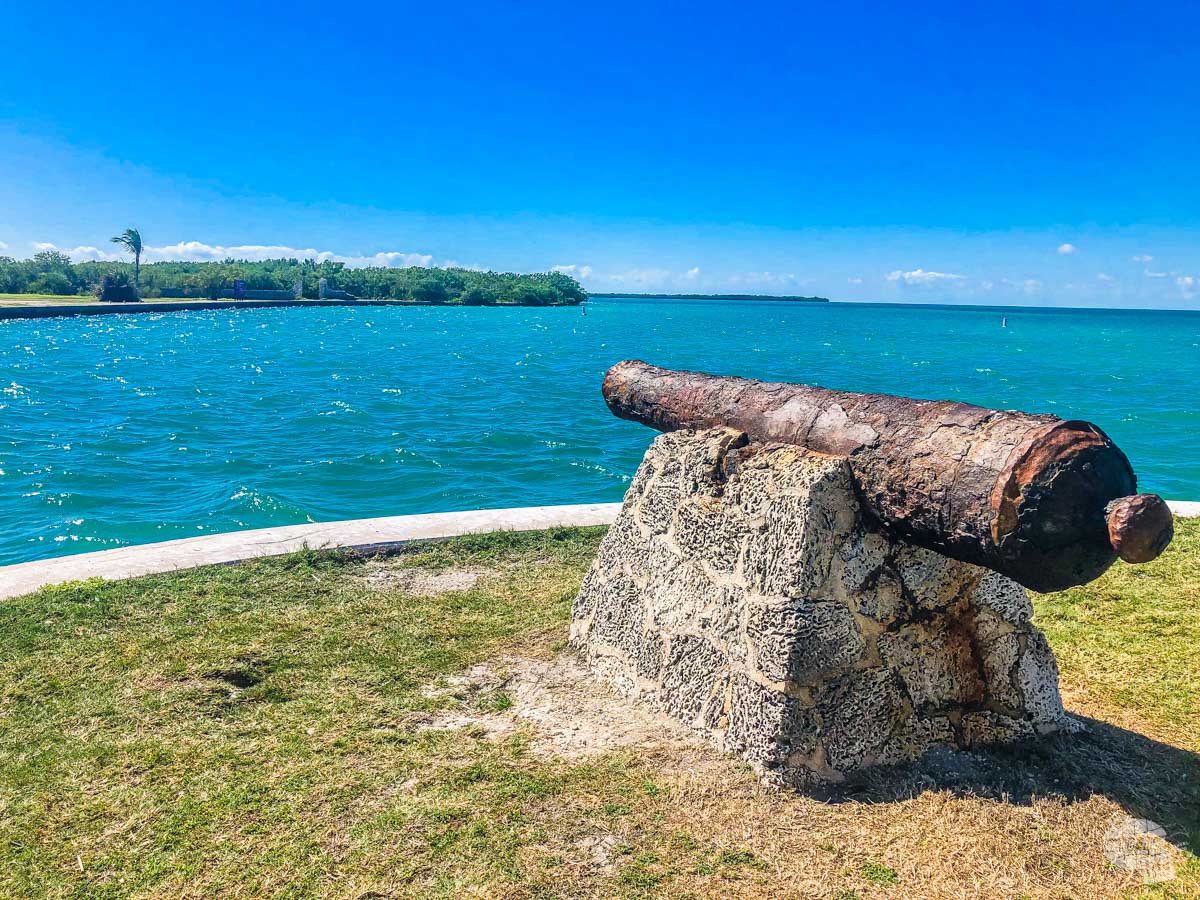
While a few people did get fairly wet, overall the trip wasn’t that bad and everyone dried out quickly. For the most part, it was a smooth and easy 45-minute trip.
By the time we left Boca Chita Key, the wind had picked up and gray clouds covered the sky. It was obvious to us all that the return trip would be a little rough. Indeed, the winds blew water just about everywhere. Everyone in the first half of the boat was pretty much soaked by the time we returned to dock at the visitor center.
A lot of folks did squeeze in towards the back of the boat for the return trip, but there just wasn’t enough room for everyone to get out of the “splash zone.”
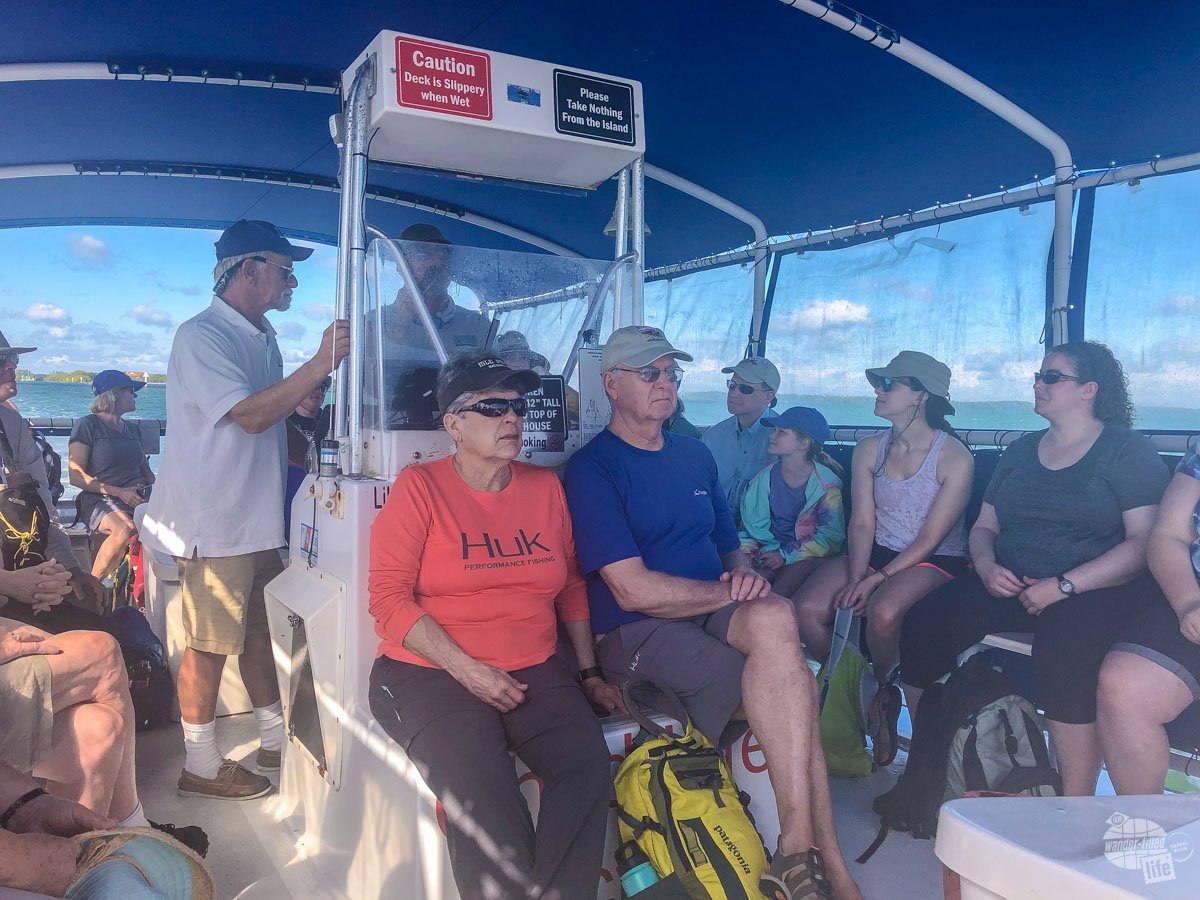
Pro tip: wear lightweight clothing that will dry quickly.
I’d certainly suggest sandals or some sort of shoes that can get wet. How wet you get will depend on where you are sitting and how big the waves are. Just know that you might want a change of clothes by the time you get back.
Other Things to Do at Biscayne National Park
Both of our Biscayne National Park tours with the Biscayne National Park Institute included great information from the tour guides on the history of the park and its purpose. I would also suggest at least a quick stop at the visitor center, where you’ll find a view exhibits and a park film. The film has a few different parts that provide more information about the underwater life and history of the area.

There is also a short walking trail just off the visitor center. If you don’t have time for a tour or snorkeling in Biscayne National Park, I definitely suggest that you at least walk the trail. The trail should only take you about 10-15 minutes unless you want to spend more time enjoying the fabulous Florida weather or fishing.
If you have your own boat, you can camp on Boca Chita Key or Elliott Key. Both have bathrooms, but no showers.
Final Thoughts on Biscayne National Park Tours
When we first visited Biscayne National Park in 2012, we just stopped at the visitor center and walked the short trail. We did not get out into the water at all. While we were happy to “check it off” as a visit, we knew we didn’t really get to experience what the park is all about.
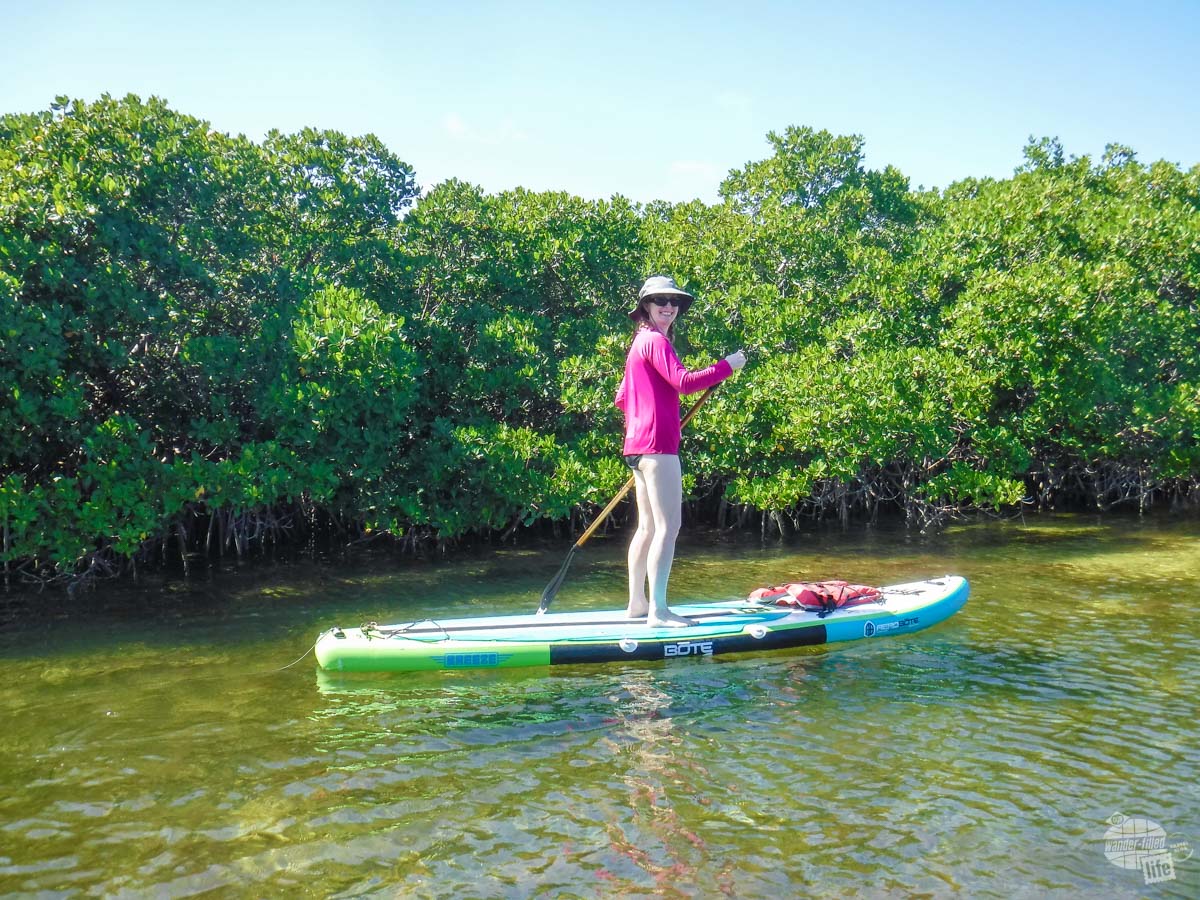
Getting to do a couple of tours with the Biscayne National Park Institute really was the best way to experience what this park has to offer. We truly enjoyed snorkeling at Biscayne National Park. Since the vast majority of the park is underwater, that is the best way to see all the plants and animals that make a home there.
If you’re more like me and prefer to stay above water, the boat tours offer much of the same history with a lot less physical activity. Boca Chita Key may not be big but we had a great time exploring. And, it is one of the most picturesque places we visited in the park.
We enjoyed everything about our tours with the Biscayne National Park Institute and highly recommend them both.
A special thanks to the Biscayne National Park Institute for sponsoring our Snorkel and Paddle Eco-Adventure tour. To clarify, we paid for the Boca Chita Key tour ourselves. As always, all opinions are our own.
Looking for more on the Florida National Parks? Check out our articles on Visiting Florida’s Northeast Parks , Things to Do in Everglades National Park and Big Cypress National Preserve and our Guide to the South Florida National Parks .
Travel Resources
What do you use to find a flight.
We use Skyscanner to find deals on flights. Skyscanner has a great interface and compares tons of airlines for the best pricing and routing. That said, it does not always have every airline and some airlines will have better deals on their website. Still, Skyscanner is a great place to start. Click here to search for a flight.
What do you use to find a hotel?
We typically stay at Hilton properties , so we use the Hilton website . You can find good Hilton Honors discounts or AAA discounts for a hotel there. We make great use of our free night certificates from our Hilton Honors American Express. Click here to book a Hilton property.
If there are no Hilton properties available, we use TripAdvisor to read reviews and book the hotel. We find we can get the best price that way. Click here to search for a hotel.
We recently partnered with Stay22 to add interactive maps to each of our destination posts. This will allow you to see a plethora of hotels and vacation rentals all in one responsive map of the area.
What if I need more space than I can get at a hotel?
We use Vrbo for the times when we have rented a cabin for a weekend getaway, like this cabin in Townsend, TN , or needed to rent a house for a large family vacation. We had a great experience with them in terms of refunding deposits when COVID hit and will continue to use them. Click here to search for a vacation rental.
Who do you use for rental cars?
As a general rule, we book with Hertz for rental cars. We have had nothing but good experiences with them. Plus, we really like unlimited mileage and not worrying about crossing state lines. We have even rented from Hertz overseas in both Slovenia and Croatia . Click here to book a rental car.
How about booking a cruise?
We have found some amazing prices for booking a cruise through Cruise Direct . We have saved a lot of money on our cruises compared to what we found elsewhere, making a last-minute Bahamas cruise even cheaper. Click here to book a cruise.
What if I want to rent an RV?
We highly recommend Outdoorsy for RV rentals. We rented a camper van for a week to visit Rocky Mountain National Park for the elk rut and Custer State Park for the Buffalo Round-Up and had a blast. The program was easy to use and we really enjoyed the freedom of having a camper van for that trip. Click here to rent an RV.
What do you use for booking tours?
We don’t often book tours. Typically, we like to do stuff on our own. That said, there are some experiences you can’t have any other way. So, when we do want to book a tour, we always check Viator first. Click here to book a tour.
Do you use anything to get discounts on the road?
We make extensive use of both Good Sam and AAA on the road. Good Sam is normally regarded as a discount card for RVers at campgrounds and Camping World but anyone can use the 5 cents off a gallon at the pump at both Pilot and Flying J. Click here to get a Good Sam membership. We have had AAA as long as we have been married and it has more than paid for itself in discounts at hotels, aside from the peace of mind of having roadside assistance. Add in paper maps and the ability to get an international driver’s license and it is more than worth it for any traveler out there. Click here to get a AAA membership.
Leave a Comment Cancel reply
I accept the Privacy Policy

“This article may contain affiliate links. If you decide to make a purchase, we will make a small commission at no extra cost to you.”
Guide To Snorkeling In Biscayne National Park Miami Florida
Snorkeling in Biscayne National Park is a not-to-miss-out activity if you are in Miami. The park, which is situated a little south of Miami and north of Key Largo, was set up with the purpose of preserving the region’s natural wonders and covers more than 170.000 acres of mangrove forests, sand barrier islands, coral keys within the northernmost portion of Florida’s barrier reef. Although it lacks shore snorkel spots, a variety of beautiful keys and shallow reefs are available by short boat rides within the park’s area, where you can enjoy swimming in crystal clear waters and discover Florida’s diverse marine life. If you want to visit some of the park’s snorkel spots, you will find lots of helpful information in this guide to plan your trip.
Table of Contents
Biscayne National Park Snorkeling Things To Know
Boca chita key, soldier key, mandalay wreck – long reef, fowey rocks lighthouse, stiltsville.
- The park’s islands and reefs are only accessible by boat: You can reach the snorkel spots by your own boat or by signing up for a guided snorkeling tour. Half-day and full-day trips depart daily from Dante Fascell Visitor Center in Homestead. If you don’t want to drive down to the park, choose a tour that departs from Miami, like this sailing excursion .
- You can’t snorkel from the shore: There is no beach in Biscayne National Park suitable for snorkeling, and the offshore reefs are only reachable by boat.
- It is possible to visit the park’s reefs on your own: If you have access to a boat, you can go snorkeling on your own in Biscayne National Park. Most popular dive and snorkel sites offer mooring buoys.
- You can observe a wide variety of marine species: The park’s waters are home to rich sea life, including various types of soft and hard corals (for example, Brain, Elkhorn, Staghorn, Lettuce corals, sea rods, and sea fans), invertebrates, reef fish, rays, turtles, sharks, and even manatees.
- The park can be visited year-round : The region’s climate allows water activities, including snorkeling, any time of the year, but the conditions are different each season. The water temperatures are the highest during summer (28-30°C/82.4-86°F), but this is also hurricane season when weather disruptions are possible. Also, stormy periods decrease visibility, which is bad for snorkeling. You can expect clear waters during winter and spring; however, wearing a 3-mm wetsuit is recommended as the sea temperatures are lower in this season (23-25°C / 73.4-77°F).
7 Spots We Found The Best For Snorkeling In Biscayne National Park
If you decide to visit this national park to discover the area’s marine life, you may want to know what spots to visit. Here, we list seven sites that we recommend visiting, with information on what you can see and what to pay attention to.
We marked the sites on this Biscayne National Park snorkeling places map:
Located in Biscayne Bay, Boca Chita Key is the most visited island of Biscayne National Park. It is famous for its iconic lighthouse, which has an observation deck from which you can enjoy fantastic views of the area and Miami’s skyline.
You can reach this little island by a 45-minute boat ride. If you book a tour at Biscayne National Park Institute’s visitor center, a guide will give an overview of the key’s history. Alternatively, you can arrive in your own boat if you have one, but note that there is limited docking available for ten vessels only.

Not only the land scenery is fantastic on Boca Chita Key, but the beautiful clear water that surrounds the island makes it an excellent Biscayne Bay snorkeling spot, too; lobsters, little hermit crabs, and other aquatic critters are hiding between the mangrove roots, and schools of fish swim around in the shallow waters. There is also a well-kept campground on Boca Chita Key so you can stay for the night.
Note the current can be strong around the island, so be careful when snorkeling. Also, there might be jellies in the water. Although the most common types of jellyfish in the Florida Keys are harmful to humans, some might cause discomfort, irritation, or severe reactions for those who have sensitive skin, so it is better to avoid them.
If you want to snorkel in Biscayne National Park, Sands Key is another spot you should visit. This pretty island is located in the lower Biscayne Bay, between Boca Chita and Elliott Keys (don’t mix it up with Sand Key Reef, which is a snorkeling spot in Key West ). Sands Key is also referred to as Saunder’s Key.
The underwater view is very similar to the one you can see around Boca Chita Key. Biscayne National Park snorkel tours often include a stop here in their itinerary (your captain will choose the snorkel site depending on the water/weather conditions to ensure a safe experience). Sands Key (and also Soldier Key, which we will talk about in the next section) are so-called transitional islands, meaning that they are hard rock coral keys with sandy barriers on their north.
Elliott Key is the northernmost island of the Florida Keys and the park’s largest key. This former pineapple plantation island today is a popular spot for camping, swimming, and snorkeling in the Biscayne National Park. There is even a hiking trail on it, and it is pet-friendly, so you can bring along Fido too!

The island’s mangrove coastline provides a habitat for juvenile fish species and small aquatic creatures; they hide among the roots in the shallow waters. In the deeper waters, around the docks), you can see large schools of fish. Plus, it is possible to see nurse sharks, stingrays, and sometimes even manatees, so keep your camera ready to capture them!
This small key (about the size of a football pitch) lies north of Boca Chita Key, also on the sand bar area (known as Safety Valve) that separates Biscayne Bay from the Atlantic Ocean. We love this key a lot because it is pretty much in its natural state with overgrown bushes and lush mangrove forests; it is a perfect destination for those who are looking for an untouched paradise.
The water is usually clear and calm around Soldier Key, making it a great snorkel spot for families with little kids. The best snorkeling we found on the west side of the island where there is an old sunken dock in approx. 6ft/2m deep water that attracts lots of fish and other marine life.
Shipwrecks in the Florida Keys are numerous and some of them can be found in Biscayne Bay (at least 44 wrecks but the research for more is still ongoing). For snorkelers, the easiest and the most impressive to visit is the wreck of Mandalay, a 112 ft/34 m long schooner that was driven aground on Long Reef (a long reef area that runs parallel to Elliot Key) in 1966 while returning from the Bahamas.
The remains of the Mandalay rest in shallow, 12ft/3.6 m deep water and turned into an artificial reef over the years. Coral species settled on the structure, providing shelter to a variety of Florida reef fish including blue tangs, french grunts, sergeant majors, trumpetfish, parrotfish, and surgeon fish.
You may even spot lobsters hiding in the structure’s holes! Thanks to the shallowness and rich aquatic life of this exciting Biscayne Bay snorkeling site, beginners are welcome, too!
The newest addition to the Maritime Heritage Trail – a trail of interesting wreck sites with installed mooring buoys – is Fowey Rocks Lighthouse, the northernmost of the six Florida Coral Reef Lights, also known as the Eye of Miami.
The lighthouse, which replaced the Cape Florida Light, was constructed in the 1870s to help the area’s passing ships navigate this difficult stretch of reef. Today, the surrounding area of this massive structure is a prime snorkeling site in the Florida Keys ; with an average depth of only 15 ft (4.5m), both snorkelers and divers will have fun here.
Snorkeling is the best around the base of the lighthouse, but the structure itself is not open to the public. This shallow snorkel spot features rich coral gardens (mainly soft corals) and abundant aquatic life: schooling French grunts and sergeant majors, blue angelfish, porkfish, trumpetfish, stingrays, and nurse sharks. Moreover, there are remains of a small steamer ship to the northeast of the tower, which is also worth checking out.
Stiltsville may not be the most beautiful Biscayne snorkel spot, in our opinion, but it is definitely the most interesting one. It is a group of wood shacks on the edge of Biscayne Bay.
The first houses were built sometime in the early 1930s that locals used as campsites. In 1933, “Crawfish” Eddie Walker built a shack to facilitate gambling, which was illegal at that time onshore but was legal one mile off the shore. Later on, buildings were added, clubs were opened, and the area turned into a party center where wealthy Miamians spent their time and money.
The era ended when Hurricane Betsy hit in 1965, damaging many houses. After this, the state decided not to issue new permits, ordered the owners to pay a lease, and required them to remove badly damaged structures.
Another hurricane, Andrew, hit the area in 1992, leaving only seven houses. Stiltsville Trust, a non-profit organization, rehabilitated the remaining structures so they could be preserved to protect and maintain the area’s marine life that settled around them.
When snorkeling here, you will see some common Florida reef fish species and small coral patches. The site is also accessible by kayak, for example, from Bill Baggs State Park. However, before you visit this site, note that a permit is required, which you can get from Stiltsville Trust .
Join for a Tour or rent a private yacht/jet ski
Inspired? Pin it!


Snorkel Biscayne National Park to explore a shipwreck
By: Author Bonnie Gross
Posted on Last updated: July 5, 2024
People know about John Pennekamp State Park in Key Largo, and some may think it’s the only place to go snorkeling on a coral reef in Florida.
But you also can snorkel Biscayne National Park, which is just 20 miles south of Miami in Homestead. Here there are daily snorkeling trips and some have an additional feature — you snorkel a shipwreck.
Biscayne National Park, which is 95 percent underwater, is actually the northernmost section of the Florida Keys. It is composed of 33 small islands formed by fossilized coral reefs and encompasses a 28-mile-long reef.

Biscayne National Park is home to a variety of tours in and on the water, from trips to islands to stand-up-paddleboard outings to snorkeling within the park.
This twice-a-day snorkeling trip is 3.5 hours long and costs $109. (Renting snorkeling gear is $10 extra.) These are small group trips with no more than 12 participants.
Biscayne National Park Institute , a nonprofit organization, operates the tours.
While there’s no guarantee on each trip if you’ll visit a wreck — it depends on weather and sea conditions — one of the most frequent destination is the Mandalay, which is where I snorkeled when I went on the shipwreck snorkeling tour. It has a great story.
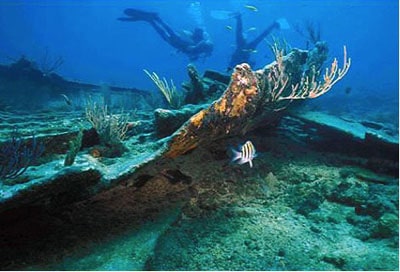
Snorkel Biscayne National Park: The story of the Mandalay shipwreck
The Mandalay is a 1928 schooner that sank Jan.1, 1966 on Long Reef. What’s left of the Mandalay is spread out in about 12 feet of aquarium-clear water, home to schools of colorful fish, gaudy purple sea fans and all sorts of reef flora and fauna.
It took about an hour by boat to reach the dive site. As you leave Biscayne National Park headquarters at Convoy Point, you see Turkey Point nuclear plant looming nearby to the south and Mount Trashmore towering to the north. (This dump holds what were once big parts of Homestead and Florida City, whacked by Hurricane Andrew in 1992.) In the distance you see the skyline of Miami.
The shoreline is all mangroves — part of the longest uninterrupted mangrove shoreline on the east coast of the U.S.
The trip to the reef takes you across “the park” — Biscayne Bay. You can look into the clear shallow water to see waving sea grasses and sponges and perhaps spot the occasional dolphin or ray. The boat passes the uninhabited islands of Biscayne National Park — Boca Chita, Elliot and Adams keys. These are the northern-most keys in the Florida Keys chain of islands, saved from development in the 1970s. (Maps still show these islands as Islandia, a development that was incorporated but never built.)
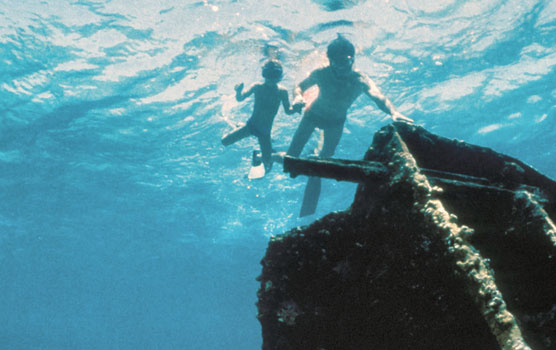
Beyond the keys is the Atlantic Ocean and the line of reefs that has been wrecking ships for centuries. The Mandalay is one of 44 identified wrecks in Biscayne National Park, and one of six being designated as part of a Maritime Heritage Trail, which offers mooring posts and laminated maps of each wreck.
The Mandalay is an easy shipwreck for even beginners to snorkel. While snorkeling around the reef, we saw a variety of common reef fish — trumpetfish, blue tangs, surgeon fish, four types of parrot fish, smooth trunkfish, schools of sergeant majors.
The tale of the Mandalay is one of those colorful stories of the sea. The 110-foot long, steel hulled schooner was built in 1928 for $177,000. It went through various owners until Windjammer Cruises, Inc., purchased, refitted, and renamed the vessel Mandalay in 1965, for use as a luxury “barefoot” cruise ship. The Mandalay was tricked out with only the best — mahogany, brass, ivory fittings, a teak deck.
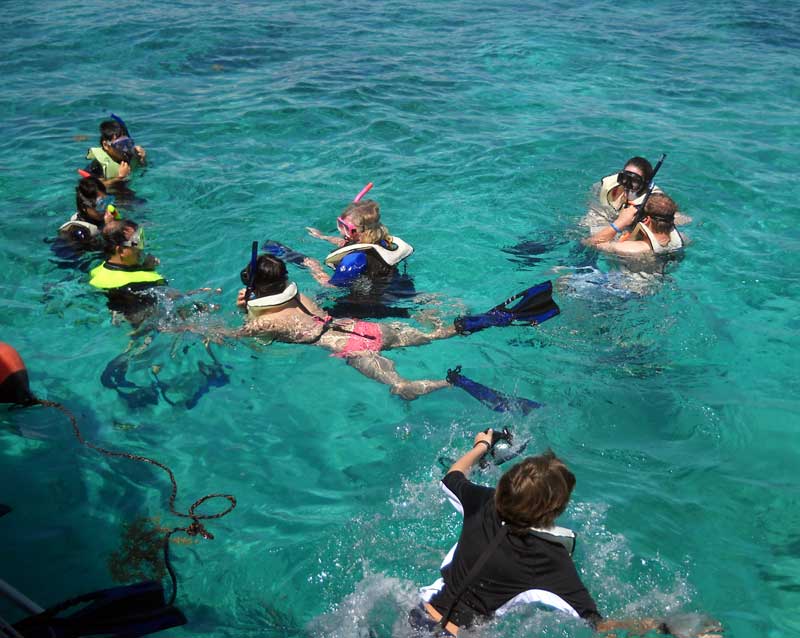
It was New Year’s Eve 1965 when the Mandalay was headed toward Miami with 23 vacationers and 12 crew, returning from a 10 day Bahaman cruise. The captain, a 26-year-old Norwegian, went to sleep about 1 a.m., leaving a novice seaman at the helm. In the early hours of New Year’s Day 1966, the Mandalay was driven hard aground on Long Reef. Later, the captain admitted he had miscalculated — the Mandalay was 20 miles off course.
Passengers were safely rescued by helicopter but the ship’s fate was far worse. With the Mandalay unprotected, scavengers stripped it, taking everything of value — including the passenger cameras, watches, and purses. Even the lead ballast blocks — tons of it — were taken by small outboard motorboats and melted into lead diving weights and resold at $1 per pound.
Later, tugboats failed to pull the Mandalay off Long Reef, and 50 years late, fish are picnicking on her while snorkelers enjoy the view.
Visit and snorkel Biscayne National Park
There’s no question: The best way to visit Biscayne National Park is by boat.
A kayak and canoe launch area and rental operation gives visitors a chance to explore the mangrove coastline. But, except for the most advanced and adventurous kayakers, the islands are too far to reach by paddle. (A ranger estimated six hours of paddling over open water.)
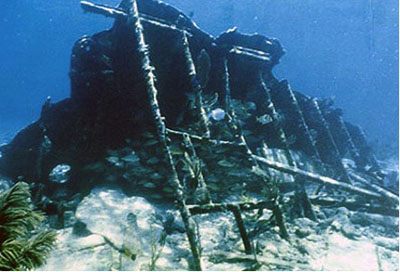
Both Boca Chita and Elliott Keys have campgrounds, but if you don’t have a boat, you have to arrange transportation to get you there and back. Tent camping is $15 a night; boat camping is $20 a night, which includes dock space and use of a camp site.
Convoy Point, Biscayne National Park headquarters, offers beautifully situated picnic tables — with shade and overlooking Biscayne Bay — and a scenic quarter-mile boardwalk. The visitor center offers exhibits and a movie.
Planning your visit to Biscayne National Park
Admission to the park is free . It’s easy to find, due east of the huge Homestead-Miami speedway.
- In addition to the basic snorkeling trip, you can opt for a full-day adventure, which includes snorkeling, paddling and visiting an island for $199. This trip is available from Homestead or Coconut Grove.
- Information about all guided tours and booking tickets.
- Florida Rambler guide to Biscayne National Park, including trip report on boat tours to Boca Chita Key.
- Also from Florida Rambler: Take history-oriented tour of Stiltsville in Biscayne National Park.
- Biscayne National Park official website
- Maritime Heritage Trail
- Find a room in Homestead
Things to do near Biscayne National Park
- If you’re driving to Biscayne National Park, you may want to keep going to explore the Florida Keys. Our Florida Keys mile-marker guide is an ideal companion to a roadtrip.
- Everglades National Park is minutes away. Here are our tips for visiting Everglades National Park.
- Robert is Here is a great stop in Homestead for milkshakes (key lime!) plus exotic fruit and variety of farm animals.
- Drive down scenic Card Sound Road and discover Alabama Jack’s, a classic Keys tiki bar known for its conch fritters.
- An attraction that belongs on the Florida funky hall of fame: Coral Castle Museum , is minutes away.
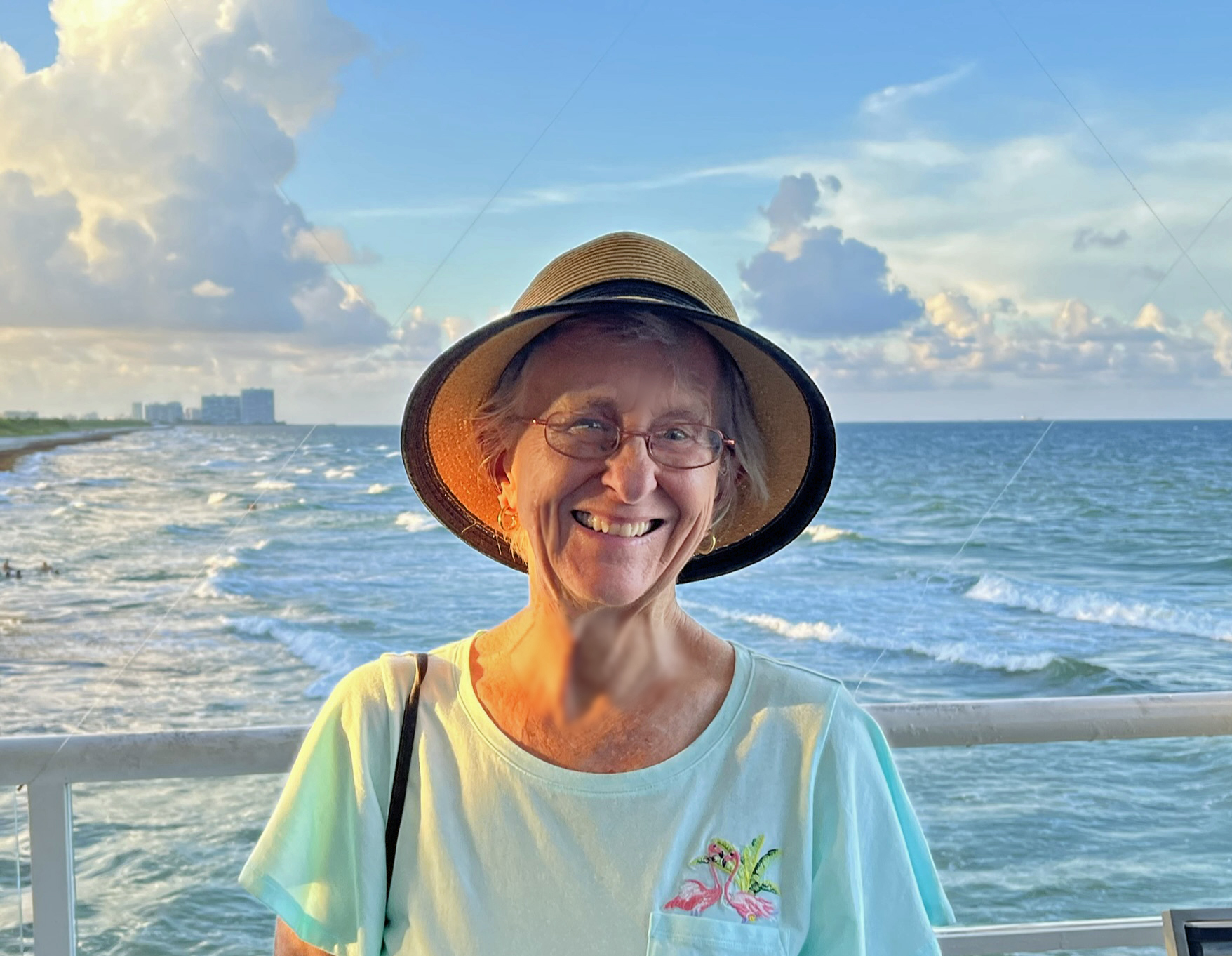
The author, Bonnie Gross, travels with her husband David Blasco, discovering off-the-beaten path places to hike, kayak, bike, swim and explore. Florida Rambler was founded in 2010 by Bonnie and fellow journalist Bob Rountree, two long-time Florida residents who have spent decades exploring the Florida outdoors. Their articles have been published in the Sun Sentinel, the Miami Herald, the Orlando Sentinel, The Guardian and Visit Florida.
This site uses Akismet to reduce spam. Learn how your comment data is processed .
- Skip to global NPS navigation
- Skip to this park navigation
- Skip to the main content
- Skip to this park information section
- Skip to the footer section

Exiting nps.gov
Alerts in effect, maritime heritage trail snorkel tour.
Dive into history this summer with a Biscayne National Park Maritime Heritage Trail guided snorkel adventure! Tours depart every other Saturday morning and afternoon (June 15, June 29, July 13, and July 27). Morning tours depart at 9 a.m. for the Mandalay shipwreck, last four hours, and cost $55 per person. Afternoon tours depart at 1:30 p.m. for the 19th Century Wooden Sailing Vessel shipwreck, last three hours, and cost $45 per person.
The fee includes the boat ride with a ranger as well as all necessary equipment (mask, fins, snorkel, and snorkel vest) and instruction. Space is limited and reservations are required. Call the park's concessioner at 305-230-1100, or visit their website www.biscayneunderwater.com for reservations. All trips depart from the park's Dante Fascell Visitor Center, 9 miles east of Homestead, Florida, and are subject to cancellation due to weather, marine conditions and/or passenger minimums.
A Biscayne National Park ranger will provide an overview of the park and the submerged cultural resources before leading a shipwreck exploration. These shallow-water glimpses into the past offer a fantastic opportunity to discover underwater treasures as well as dazzling marine life. This tour is suitable for the novice and experienced snorkeler alike, but all participants must be able to swim.
Last updated: April 14, 2015
Park footer
Contact info, mailing address:.
9700 SW 328th Street Sir Lancelot Jones Way Homestead, FL 33033
305 230-1144
Stay Connected

Snorkeling in Biscayne National Park
- Nat'l Parks
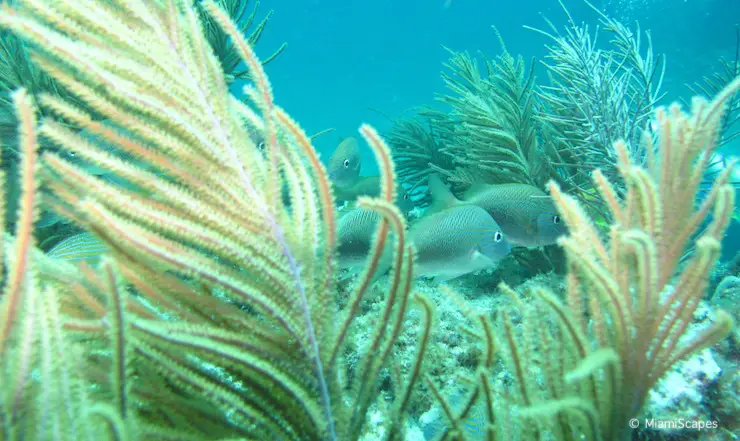
Snorkeling in Biscayne National Park is spectacular with crystal clear waters, colorful and healthy coral reefs brimming with marine life, and shipwrecks that lie in relatively shallow water.
This underwater paradise is just the beginning of the third largest coral reef in the world (after Australia's and Belize's Barrier Reefs), and it extends southwards for another 170 miles into the Florida Keys National Marine Sanctuary.
The offshore reefs within Biscayne National Park waters are only reachable by boat, there is no beach or shore diving at the park from either the mainland or the small keys.
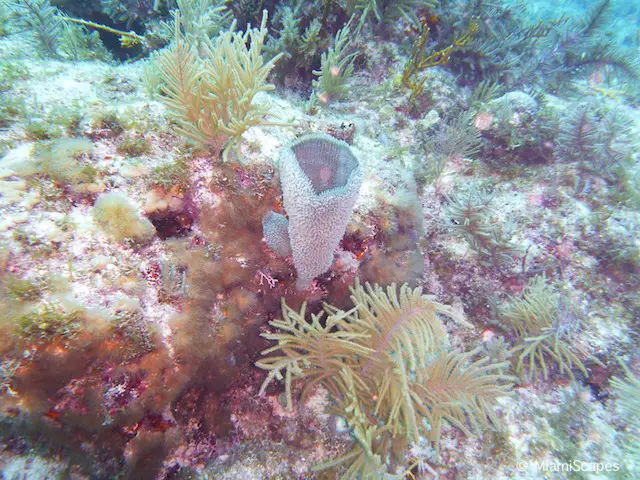
The Park provides year-round daily snorkel tours to the reefs through their Concessioner. The boats leave from the jetty at the visitor center. Programs may differ from season to season so it is best to check before you head out.
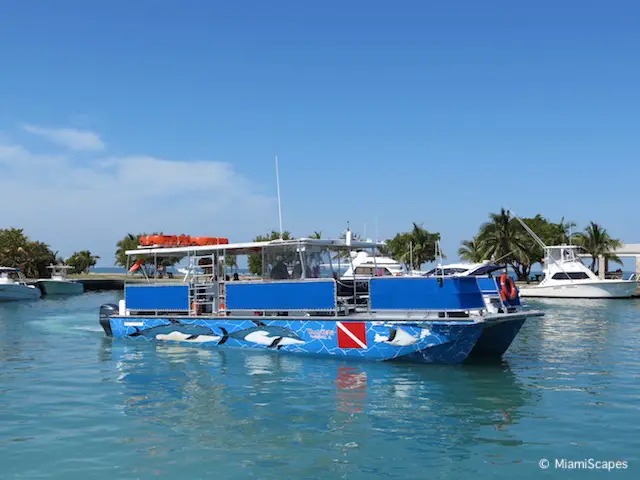
Before our snorkel tour, there was a short orientation about the Park, the reefs, conservation, marine life, do's and dont's to protect the reef and its inhabitants, etc.
The orientations are provided by park staff or volunteers and are a great introduction of what you are about to see.
Then everyone was outfitted with mask, fins and snorkel and a snorkeling vest and we were off! The trip to the reef takes about one hour.
During our tour, they were combining both the snorkel trip with the Boca Chita Key trip . We first dropped off the folks that were going to the island and then the boat took us to the wonderful living corals where we readily jumped into these underwater gardens that exploded with color...
It is just amazing that so much color and life can exist so close to a mega city like Miami, the park is only a half-hour away from the hustle and bustle, practically next-door.
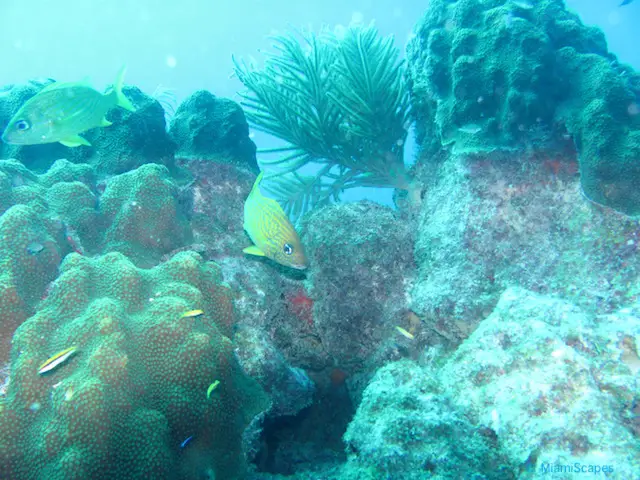
We spent approximately an hour on the reef and saw a lobster, many schools of pretty fish, beautiful hard and soft corals, little shrimps, fans and sponges, and what we think was a moray eel hiding in the rocks!
There were parrot fish, squirrel fish, trumpet fish, angel fish, and whole school of striking blue tangs...
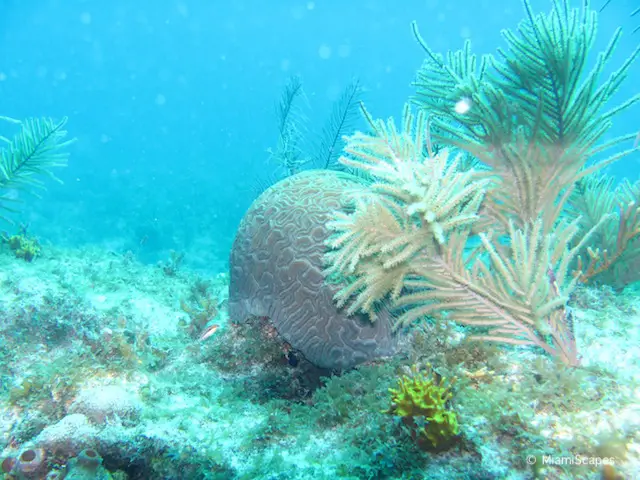
After our snorkel, it was time to get back on the boat. We stopped at Boca Chita to pick up the rest, and headed back to the dock at the Visitor Center. Overall, plan on minimum of three hours, maybe four, it is a great way to spend a morning or afternoon!
What to Bring Along
- Sun protection: One hour in the water is a long time, even if it is overcast. A thin swim shirt that provides UV protection and is quick drying is great for snorkeling.
- Towel, sunglasses, hat
- Lots of drinking water
- You can bring a cooler onboard to keep snacks and drinks
- And a waterproof camera of course!
Booking a Snorkel Trip at Biscayne National Park
Tours are ran by the Biscayne National Park Institute. They have daily morning and afternoon trips to the reefs, wrecks or bay depending on the weather and cost $64 per person. These group snorkel tours are temporarily suspended.
Small-Group Snorkel Experience is limited to 6 passengers maximum or 3 groups (families) per trip maximum and cost $99 per person. Private option available.
Mask, snorkel, and fins can be rented for an additional cost. At this time, there is no rental of snorkeling gear, you must bring your own.
There are also longer cruise excursions, about 6 hours, that combine snorkeling, paddling, and island visits and cost $159 per person. These are smaller groups with a maximum of 4 or 3 (family) groups per trip.
Snorkel Tour Boats leave from Biscayne National Park headquarters, you first check in at the store next to the Visitor Center.
At this time, reservations will only be accepted online and with your own device. There will not be a computer or tablet available on site for you to book.
In addition, snorkeling tours will follow enhanced safety and health measures:
- Facial coverings are required to be worn from the time you are waiting to check-in until you off-board the vessel after the completion of the activity. This is in accordance to Miami-Dade County regulations. Facial coverings are not required for the short time of preparing enter the water to snorkel.
- A brightly colored swim vest must be worn and will be provided but you are encouraged to bring your own if you have one. At this time, you will be instructed NOT to inflate the borrowed vest since this is done through the mouthpiece. If you require additional flotation you can request a pool noodle. Vests and pool noodles will be sanitized after each use.
- Social distancing guidelines on piers and boats must be followed.
More Info: Snorkel Trips Biscayne National Park
FAQ - Biscayne Park or Pennekamp Park?
We often get asked which park is better for snorkeling, Biscayne Park or Pennekamp Park in Key Largo. There are plus and minuses to both. Here's our take:
The reefs and what you will see are comparable at both locations, it will depend on the conditions at the time of your excursion and luck, remember that each dive/snorkel is different.
Despite being slightly closer to Miami, Biscayne Park does not get the "tourist traffic" that Pennekamp does. On the plus side, boats at Biscayne are normally less crowded and the pace less hectic than at Pennekamp. On the minus side, if you are set on snorkeling the reef, please keep in mind that depending on weather conditions, this may not be possible and you will snorkel the bayside area instead. You need to inquire on the day of your visit, this is important specially for visitors that come to the park for the sole purpose of snorkeling the reefs.
Snorkel tours are also more expensive at Biscayne Park. Pennekamp snorkel tours for adults cost $29.95 vs $59 - $64+ at Biscayne.
Please note that the Concessioner that provides the snorkel trips is separate from the National Park. There have been many different outfits filling the position over the years, at the moment the current concessioner is the Biscayne National Park Institute. The staff is extremely helpful and will try to accomodate any reasonable requests.
If snorkeling on the reef is a priority, you can also consider heading down to the Keys. Pennekamp is one of the popular options, but there are literally hundreds of operators along the Keys corridor.
Here's more on Snorkeling at John Pennekamp Coral Reef State Park .
Here's more on Snorkeling in Miami and nearby .
FAQ - What about Scuba Diving Trips or Glass-Bottom Cruises?
We have not seen any Scuba Diving for certified divers or Glass-Bottom cruises running from the Park's Visitor Center although many are offered by outfits authorized to operate within the waters of the park and leave from their own different locations in Miami, Miami Beach or the Florida Keys. For a list of current tour operators and their offerings click here . Key Largo which is not far away of course offers many alternatives for both activities.
The Florida Keys Have Reopened! Get In The Water!
Book with confidence! Free cancellation: Cancel up to 24 hours in advance to receive a full refund
Biscayne Bay National Park
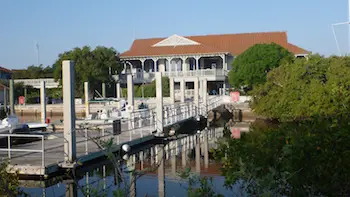
The Visitor Center
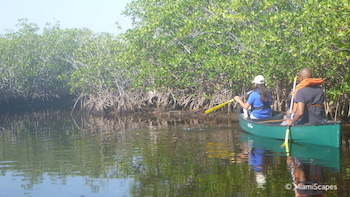
Canoeing, Kayaking, SUPs
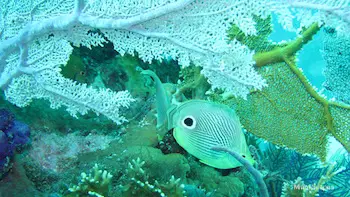
Snorkeling the Reefs
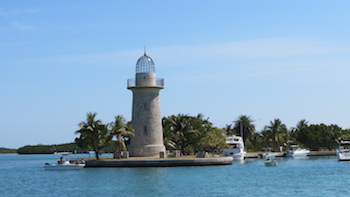
Boat Tours Boca Chita
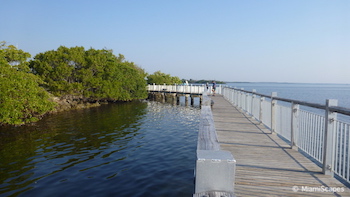
Biscayne Park Map
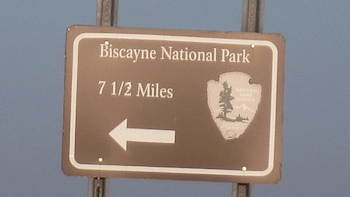
Tips for Visitors
Most popular excursions, miami events by month.
January Events
February Events
March Events
April Events
June Events
July Events
August Events
September Events
October Events
November Events
December Events
Send a tip.
What's New
- Up and About... Latest MiamiScapes News
Miami in June
- Summer Fruit Fest, Luis Miguel, J Lo, Justin Timberlake...
Miami in July
- Independence Day Fireworks, Florida Supercon, Spa Month
Miami in August
- Spa Month, Miami Spice, Auto Show, Jonas Brothers...
Miami in September
- Miami Spice, Labor Day, Auto Show...
Most Popular
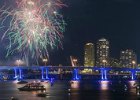

4th of July
- Picnics, Concerts, Parades and Fireworks!
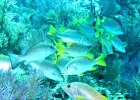
Snorkeling in Miami
- Getting Out to the Colorful Reefs...
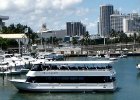
Miami Boat Tours
- Sightseeing boats, Dance Cruises, Pirate Boats, Speed Boats...
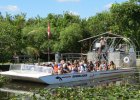
Everglades Airboat Tours
- The Everglades are open and airboat tours are running!

Things To Do With Kids
- Family-friendly attractions, events and things to do
One Low Price - 25+ Attractions!
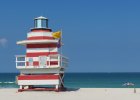
Miami Beaches
- Top spots and what they have to offer
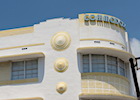
Art Deco District
- Superb architectural gems, a legacy from the 1920's 30's and 40's
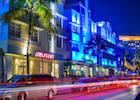
Ocean Drive
- Miami's Legendary Strip in South Beach now closed to vehicles
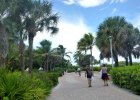
Miami Beach Walk
- From South Pointe to Bal Harbour along the waterfront...
Essentials...
Latest miami hotels deals and savings....

- PARKS BY NAME
- PARKS BY STATE
- REVIEWED PARK INDEX
- PHOTO LICENSING
- ABOUT NATIONAL PARK PLANNER
- REPORT ERRORS
- PRIVACY POLICY
Biscayne National Park | GUIDED TOURS AND EXCURSIONS
- PARK AT A GLANCE
- VISITOR CENTER
- BOCA CHITA KEY
- ELLIOTT KEY
- STILTSVILLE
- BOAT LAUNCHES
- DIVING / SNORKELING
- HIKING TRAILS
- PICNIC AREAS
- TOURS / EXCURSIONS
- DIRECTIONS / CONTACT

Coral reef within the waters of Biscayne National Park
RANGER PROGRAMS
From November through April, a variety of daily, land-based Ranger programs are held at the Dante Fascell Visitor Center . The only way to find out what is going on is to either drop by the Visitor Center or call the park at (305) 230-1144. You can also check out the park’s Calendar web page, but this is not a complete listing. When I recently called, the Ranger told me about a half dozen events, but the Calendar page only listed one, and it wasn’t even an event that I was told about.
AUTHORIZED CONCESSIONAIRE EXCURSIONS
Since Biscayne National Park is 95 percent water, you need a boat for most activities. If you live in the area, you may own one or know somebody who does, but for everyone else this means joining a fee-based excursion. Currently there are a handful of authorized concessionaires offering such services. For any company to bring paying customers into Biscayne National Park, it must have a contract in place with the National Park Service. You can, however, rent a boat from anywhere and enter the park if you operate it yourself.
BISCAYNE NATIONAL PARK INSTITUTE
The Biscayne National Park Institute is a non-profit organization that is authorized to conduct tours within the park. The organization actually has an office in the Dante Fascell Visitor Center, so you can book tours on the spot if spaces are available. This is also where you come to sign in for tours you booked online in advance.
I did the following tours and have provided a detailed review and photographs:
Heritage of Biscayne Cruise Sightseeing cruise with a stop at Boca Chita Key
Snorkel and Paddle Eco-Adventure Snorkel shipwrecks and coral reefs and paddle on Jones Lagoon
Kayak the Mangroves Paddle the bay near the Dante Facscell Visitor Center on Convoy Point
Stiltsville Guided Historic Tour Sightseeing tour to Stiltsville, a collection of houses built on stilts in Biscayne Bay near Key Biscayne
See the Biscayne National Park Institute website for a complete list of tours.
OTHER CONCESSIONAIRES
There are other authorized concessionaires that bring guests into Biscayne National Park. See the National Park Service’s official Guided Tours web page for a complete list.

Paddling excursion on Jones Lagoon in Biscayne National Park
Back to the Top

© 2014-2024 Copyright Steven L. Markos . All Rights reserved. Designed by National Park Planner
Loading, Please Wait!

- Departs From: Homestead
Snorkel And Paddle Eco-Adventure
All Day Exploration Of Biscayne National Park
Quick Details
Departure Location: Dante Fascell Visitor Center in Homestead, FL
Duration: 6 hours
Start Time: 10:15 a.m.
Age Limit: Ages 12+ on shared trips. All ages welcomed on private trips.
Important Information:
- Fins are required to be worn by all participants while snorkeling as a safety precaution. Snorkel Equipment rental available.
- For the safety of all our guests, there is a maximum weight limit of 275 for all in-water-activities . This includes the following activities: kayaking, paddle boarding (SUPs), snorkeling, and SCUBA diving. There is not a weight limit for guests who are not engaging in an in-water-activity.
- Guests must be able to climb a four-step vertical ladder without assistance. This ladder will be used to get on and off the boat when participating in an in-water-activity.
- The vessel used on this trip has a maximum capacity of 6 passengers. This is applicable to both our shared and private trips. Due to Coast Guard regulations, we cannot exceed more than 6 passengers on our vessel. Infants and children are also included in the passenger count.
- Before completing your booking, make sure to read our Cancellation Policy .
- Please read all information below including the drop down menus to learn more about this trip.
School groups and organizations can contact us to request private bookings. Please note paddling is not available for large groups.
An intimate exploration of Biscayne National Park!
Join us for an intimate exploration of the waters of Biscayne National Park. On a full-day guided trip, with only six people, you can look for the rare roseate spoonbill while padding on a stand-up paddle board and witness the amazing diversity of aquatic life in the park while snorkeling in the mangrove forests or a coral patch reef. Keep a lookout for the dolphins, rays, and sea turtles that live here. Where you go each day is based on the day’s weather and your group’s special interests. Your guide is a Captain on the Biscayne National Park Institute staff who teaches you about the different habitats in the park and how they interact with each other along with the history of the area.
Your Captain will pick the best snorkel spot for the day depending on the day’s weather.
We use stand-up paddle boards while paddling the mangroves because their low profile allows you to see more beneath the water’s surface. Stand-up paddle boards are very stable and can be knelt on or sat on like a kayak.
Trips start and end at the park headquarters behind the Dante Fascell Visitor Center. Arrive and check-in at the Park store at 9:45 a.m. Board your boat at 10:15 a.m. to cross Biscayne Bay and get in the water on your morning adventure paddling and/or snorkeling. Stop for lunch either on anchor or ashore on a barrier island, and then start your afternoon adventure paddling and/or snorkeling. Return across the bay to the visitor center arriving at about 4:15 p.m. Please note: we do not provide lunch, we highly recommend packing a lunch for this full-day adventure.
- Chevron down Location and Check-In Procedures
This program will depart from Convoy Point located at the Dante Fascell Visitor Center in Homestead, FL . 9700 SW 328th Street Sir Lancelot Jones Way Homestead, FL 33033.
Check out our Transportation Page to learn more about transportation options for our locations.
You will check-in at the bookstore that’s located on the second floor right next to the visitor center 30 mins before the trip departs. Please complete your waivers before your trip to ensure a smoother check in process.
- Chevron down Participant Requirements
This full day program has an age limit of 12 and older. For safety reasons, because of the amount of paddling in activity, we request for children between the age of 8-11 to be in private trips so that the captain and staff can focus on the child and your family in any case of an emergency.
For the safety of all our guests, there is a maximum weight limit of 275 for all in-water-activities . This includes the following activities: kayaking, paddle boarding (SUPs) , snorkeling , and SCUBA diving.
There is not a weight limit for guests who are not engaging in an in-water-activity.
For the safety of all our guests, guests must be able to climb a four-step vertical ladder without assistance. This ladder will be used to get on and off the boat when participating in an in-water-activity.
All minors must be accompanied by an adult.
This Biscayne National Park snorkeling and paddling program is designed for active adults and children over 12 who are good swimmers and paddlers (private trips open to all ages). Swimming in the bay and open ocean, you may encounter some currents and swells which require the ability to swim and float confidently. Inflatable snorkeling vests are required, optional life jackets and pool noodles are available on the boat upon request.
This program has activities that could cause problems for pregnant women, those with recent surgeries or back injuries, and can cause motion/sea sickness. To best accommodate you and make your trip safe and enjoyable, please make a note in your reservation or privately notify our captain or mate if:
- You are not an experienced snorkeler/paddler
- You have any recent surgeries
- You have any back injuries
- You have any medical conditions
- You are prone to motion/sea sickness
- You are pregnant
- You have any other concerns regarding your safety and health
- Chevron down What to Bring
We recommend that you bring along the following:
- Water Bottle
- Reef safe sunscreen
- Towel and extra clothes
Lunch is NOT included. Please bring your own lunch and snacks so you don’t go hungry on your full-day adventure!
You can also bring a small cooler and a bag with you on the boat. Please do not bring anything that you don’t wish to get wet. We recommend storing any valuables in waterproof bag.
- Chevron down Equipment and Boat
What equipment is provided during the program?
- Snorkel vests are provided if you are taking a snorkeling excursion, you will be given a snorkel vest that must been worn while snorkeling.
- Floatation devices are given on request such as pool noodles and life jackets.
- Snorkeling Bundle (Masks, Fins, Snorkel) $16
- Snorkels $5
- Shorty Wetsuits $10
Boat Information
- The boat will be either be a 23’ or 28’ boat that will have a max of 6 passengers on shared trips. This boat does not have a bathroom, but we recommend using the bathroom in the visitor center before departing, there’s also bathrooms in the island. During the trip the boat could stay in the bay or go out to the ocean (reef barriers), the water on the ocean side could have more movement than if you were to stay in the bay.
- We cannot add an additional passenger on this boat due to Coast Guard safety regulations. Small toddlers and babies still count as a passenger.
- There is a cooler with extra water on the boat, and a cooler to store snacks as well. You can also leave your stuff on the boat while snorkeling, but there is a chance that it will get wet, we highly suggest storing anything that you don’t wish to get wet in a drybag.
- Chevron down Important Medical and Liability Release Information and Waivers for Snorkeling
Online waivers will be sent with the booking confirmation. No printing necessary. You can even complete the waivers on your phone! Adults over the age of 18 must complete and submit their own waiver. Minors ages 17 and younger must have a parent or legal guardian complete and submit a waiver on behalf of the minor. For snorkeling activities there are separate waivers for adults and minors, please be sure you are completing the appropriate waiver. All minors must be accompanied by an adult. To complete the waiver process, you will need to confirm your email address through and email that will be sent by Smartwaiver.
Snorkeling is an exciting and demanding activity. When performed correctly, applying correct techniques, it is relatively safe. However, there are certain medical conditions that increase risk. If you have a medical condition described on the Medical Statement or any other condition that would be contrary to safe participation in any in-water activities, you must provide documentation that you sought the advice of a physician prior to engaging in snorkeling activities.
Physician Release
- Chevron down Additional Questions
What reefs do you go to?
- The captains make the decision on reef locations; it is very dependent on weather conditions and captains’ choice. Once you book and receive an email confirmation, you will be given the captain’s phone line to ask questions about the location of your trip.
What’s the difference between a Small Group Snorkel vs Snorkel and Paddle Eco-Adventure?
- The Snorkel and Paddle Eco-Adventure is a six-hour long excursion that takes you to one snorkel location and a paddle at Jones Lagoon where you can explore the vast variety of wildlife and are taught by the captain on the different habitats and how they interact. On this trip, you stop on a small barrier island for lunch. The small group snorkel trip is a three-and-a-half-hour excursion with two snorkel locations. On both excursions your captain chooses the snorkeling sites based on the day’s weather and sea conditions to ensure safety and an optimal snorkeling experience. On both trips the snorkel location(s) would be on one of the following: open ocean around coral reef patches, shipwreck sites, and a bayside snorkel near the mangroves.
What is the difference between the All-Day Sailing and the Snorkel and Paddle Eco-Adventure?
- Our paddle and snorkel eco-adventure go out to the reefs (weather permitted) and takes our paddlers to gorgeous sites in the Jones Lagoon where you can explore the vast variety of wildlife and the captain will teach you the difference on habitats and how they interact. We use our power boat which gets you to where we are going quickly and allows you more time for in-water activities; but you miss the experience of a quiet sail across the bay. On shared trips we ask that participants be over 12 years old. If it is a private trip, all ages are welcome.
- Our Sail, Paddle, Snorkel, and Island Visit is a 6-hour excursion, that involves a 2-hour boat ride that teaches your group how to work a sailboat in which is very interactive and an experience in of itself, you will stay inside the bay on this trip, and will snorkel in the calm waters within the bay and alongside the fringes of the mangroves. There will be no coral reef snorkeling and you will paddle the island mangroves. Once you arrive to the island you will have 2 hours for activities and lunch and then it will be 2 hours on the ride back to our Visitor Center.
- Snorkel and Paddle Eco Adventure will supply you with Stand Up Paddleboards (SUPs). You can sit or kneel on the SUP. If you stand/kneel you will have a better view and potentially see more wildlife. Since the water is calm, and the boards are stable it is not hard to stand for first timers, but you may get wet!
- Sail, Paddle, and Snorkel will use inflatable tandem (2 passenger) kayaks during the paddle portion of the trip.
- We carry the SUPs on the boat all the time, if you are unsure, chat with your captain before your trip and ask his or her advice, please do that at least 1/2 hour before the trip starts to insure an on-time departure.
- If you are worried about using a SUPs, we suggest taking the half day Jones Lagoon or the Sail, Paddle, and Snorkel trip which offers inflatable kayaks.
Related Activities
- Calendar Daily
- Hour Glass 3.25 Hours
- Tags Paddling
Jones Lagoon Eco-Adventure Paddle Clear Waters
Explore the clear shallow waters of this unique lagoon and see an amazing variety of wildlife on a guided paddle in a remote unvisited part of the park!
Biscayne National Park: The Complete Guide
:max_bytes(150000):strip_icc():format(webp)/IMG_24682-8b6924367ecb46aca649e9848cd2cd57.jpg)
jtstewartphoto / Getty Images
Things to Do
Fishing in the park, snorkeling and scuba diving, where to camp, where to stay, how to get there, accessibility, tips for your visit, biscayne national park.
Established in 1980 to protect Florida’s northernmost keys and the sparkling seas that surround them, Biscayne National Park is something of an anomaly in the U.S. National Park System as it is made of 95 percent water. This distinguishing detail makes the 173,000-acre park a bucket-list destination for boaters, fishing fanatics, snorkelers, paddlers, and scuba divers as well as anyone who enjoys warm breezes, sparkling shallow seas, subtropical temperatures, lagoons teeming with wildlife, snorkeling or camping on lush islands under palms.
The shorelines, mangroves, and 250 square miles of water are home (or temporary home in the case of migratory birds) to a wide range of tropical, subtropical, and marine animals and plants including more than 500 kinds of reef fish, a menagerie of birds, 20 threatened and endangered species, and unfortunately some pesky and hungry insects. The park also contains more than 10,000 years of human history starting with the migration of Paleo-Indians down the Florida Peninsula, to the arrival of the Tequesta people as the waters rose, through European colonization, and to the present day.
This complete guide contains all the information you need to plan a trip to this scenic and special Sunshine State spot a stone’s throw from Miami including where to camp, what to do and see, and how to get there.
ArendTrent/Getty Images
Start your time at the park with a visit to the Dante Fascell Visitor Center. The center features dioramas/exhibits detailing the park’s four ecosystems, a ranger desk, a 20-minute park film called "Connections," a gallery highlighting local artists inspired by the park, and a porch full of rocking chairs.
Whether you bring your own sailboat or swim in the seagrasses close to the shoreline, getting out on or getting in the crystalline water is a must. Sailing and boating are two of the most popular activities in the park. Homestead Bayfront and Black Point are marinas that feed directly into the park.
Enjoy a Sightseeing Tour
Biscayne National Park Institute operates a wide variety of private and small-group sightseeing tours including a snorkel experience that stops at a shipwreck. All ages are welcome aboard the three-and-a-half-hour history boat tour that makes an island stop and often encounters wildlife. The guided paddleboard tour through the mangrove-lined waterways of Jones Lagoon is perfect for more active folks and often results in sightings of baby sharks, upside-down jellyfish, rays, turtles, and manatees as well as roseate spoonbills and other birds.
Get Out on the Water
You can also bring your own canoe, kayak, or paddleboard. They are ideal ways to navigate around the mangroves, the shallow bay, lagoons, creeks, and channels south of Caesar Creek. Launch free of charge from the designated area adjacent to the parking lot. Many areas in the park are too shallow for motorized watercraft so paddlers get these scenic spots to themselves and can enjoy some peace and quiet. Jones Lagoon and Hurricane Creek are some favorite spots. For a real challenge, attempt the 7-mile crossing across Biscayne Bay to Elliott or Boca Chita Keys.
Explore the Park on a Hike
While water-based activities like boating, fishing, kiteboarding, and diving around coral reefs are what the park is known for, there are a few stay-dry options like hikes. Two trails twist through the tropical island landscape on Elliott Key. One runs the entire 7-mile length of the island while the other is a 1-mile loop between the bay side and ocean side of Elliott that starts in the marina. The jetty near the visitor center also has a short trail.
The Biscayne Birding Trail has 10 stops including the Fowey Rocks historic lighthouse, Convoy Point, Black Point shoreline, several keys, and the Pacific Reef light. Shorebirds and seabirds like frigates, brown pelicans, and yellow-crowned night herons are very common. The park also gets seasonal winged visitors and a few species that hail from the Caribbean pop over from time to time. It also has one of the largest populations of mangrove cuckoos in Florida.
See the Houses of Stiltsville
Biscayne is home to architecturally significant houses on stilts in the overwater neighborhood called Stiltsville. After Hurricane Andrew swept through the region in 1992, only seven of the kooky houses dating back to at least the 1930s survived. The storied history of the homes—which were annexed into the park in 1985—includes the original Stiltsville pioneer who sold bait, beer, and crawfish chowder, private social clubs with nude sunbathing decks, Life magazine coverage, and lots of hurricane damage.
Public access to the properties is by permit only. To inquire about renting one of the homes for camera shoots, small conferences, artist-in-residence sessions, or small family gatherings (day-use only), reach out to the nonprofit that oversees them, Stiltsville Trust at least three weeks before your planned stay. Biscayne National Park Institute also offers a two-hour cruise to get a closer look at the homes in the northernmost corner of the park. It leaves from Dinner Key Marina in Miami’s Coconut Grove.
The bustling waters of Biscayne Bay support hundreds of fish species and encourage world-class fishing for spiny lobster (which cannot be taken out of the park), snapper, grouper, tarpon, and bonefish. A Florida saltwater fishing license is required for anyone over 16. The Florida Fish and Wildlife Commission sells the permits and also sets the regulations. Be sure to brush up on the local fishing rules before your visit.
The Maritime Heritage Trail boasts exciting opportunities to snorkel or scuba dive around many of the region's shipwrecks. Six wrecks, spanning nearly from 1878 to 1966, fall within Biscayne’s borders. They can only be reached by boat and have established mooring buoys. Mandalay is the ship site most suited to snorkelers. It is also quite decent around the base of the Fowey Rocks Lighthouse. Erl King, Alicia, and Lugano on the other hand are the best sunken ships for tank dives. For a more guided experience, the Biscayne National Park Institute has a variety of snorkel and scuba tours .
Stockphoto52 / Getty Images
There are two campgrounds within the park: Elliott Key and Boca Chita Key. As the names suggest, both are located on islands within the park’s boundaries and therefore you must have a boat to get to them. You must also pay the appropriate fee which is $35 per night for docking and camping or $25 per night for camping only. Use Recreation.gov to pay no later than sunset on arrival day. There are no advance reservations.
Boca Chita is the most popular choice with its waterfront views, grassy campsites, and swaying palms. There are picnic tables, grills, and toilets, but no showers, sinks, or drinking water.
Elliott Key, the park’s largest island with 33 boat slips in the marina, offers cold showers, sinks, picnic tables, grills, and drinking water. There’s a group campsite for 10 or more about a third of a mile from the main campground.
Both islands maintain quiet hours from 10 p.m. to 6 a.m. There is no backcountry camping and all trash must be packed out.
Biscayne is 33 miles from Homestead, Florida and around 35 miles from Miami. Both cities offer dozens upon dozens of hotels of every size, service level, and price range. For some inspiration, check out our round-up of the best hotels in Miami.
Biscayne is in Homestead about 45 minutes south of Miami by car. The visitor center is at the end of 328th Street just before you get to the entrance to the Homestead Bayfront Marina. It can be reached from the Florida Turnpike or U.S. Highway 1.
stockphoto52/Getty Images
To go beyond the mainland shore you'll need a boat, which immediately limits accessibility. But several measures have been put in place to accommodate the needs of visitors with mobility and other challenges including:
- The visitor center and park headquarters have ramps, elevators, and boardwalks.
- Audiovisual programs are closed-captioned and available in English and Spanish. Exhibits along the jetty trail are also bilingual and Haitian Creole translations are available at the center’s help desk. Junior Ranger booklets come in those three languages and the park brochure is translated into several more.
- On Boca Chita, Elliott, and Adams Keys, restrooms are accessible but some buildings aren’t. Sidewalks are nonexistent on the latter two while Boca only has them around the harbor and restrooms.
- Legitimate service animals are allowed in buildings and on all islands.
- There is no charge to enter and enjoy this park. Some activities like commercial filming, weddings, and memorial services do require permits. Visiting the Stiltsville structures also requires permission and permits from the Stiltsville Trust.
- The park’s waters are open 24 hours a day year-round. However, the visitor center maintains hours (9 a.m. to 5 p.m. most days) and is closed on major holidays.
- Pets are only allowed on leash on Elliott Key within developed areas and may not be left unattended.
Where to Go Kayaking in Miami
A Guide to National Parks in the Southeast US
Where to Go Snorkeling Around Miami
Crandon Park: The Complete Guide
The 13 Best Day Trips From Miami
Bill Baggs Cape Florida State Park: The Complete Guide
The Top Beaches on Florida's Gulf Coast
Top Activities in Key Largo, Florida
Florida Keys: Planning Your Trip
The 8 Most Adventurous Things to Do in Malawi
The 19 Best Beaches in Costa Rica
National Parks in Miami and South Florida
The 9 Best Dive Sites in Florida
Kaʻena Point State Park: The Complete Guide
The Best Beach in Every State
The Ultimate East Coast Beach Road Trip

Biscayne National Park Planner (Everything You Need to Know)
Biscayne National Park is, hands down, one of the most tantalizing and extraordinary national parks in America. While it’s not filled with dirt trails and lush forests, this park still woos travelers with its spectacular underwater treasures.
As a matter of fact, 95% of this national park sits under Florida’s sparkling, crystal clear turquoise water. With its colorful coral reefs, exhilarating outdoor pursuits, and shipwrecks, Biscayne National Park is a veritable ocean playground.
What’s more, this 270-square-mile aquatic paradise has a diverse ecosystem full of uniquely shaped corals and multi-colored fish. Did we mention that it’s home to photogenic lighthouses and miles of beautiful wavy seagrass and mangrove channels?
For a memorable, sunny, and salty escape here, check out our extensive our Biscayne National Park travel guide.
While exploring Florida we suggest: Fodor’s Florida Travel Guide
Biscayne National Park Map
Table of Contents
If you’re looking for a Biscayne National Park map, the one featured below will show you the proximity of the national park to Miami and Homestead. I’ve also marked the visitors center for reference.
HOW TO USE THIS MAP: Above you’ll find a map of our highlights for Biscayne National Park. Click on the top left of the map to find separate layers marking the route and points of interest. You can hide and show different layers, or click icons on the map to see the names of places we mention in this travel guide. “Star” the map to save it to your own Google Maps, or open the map in a new window for a larger version.
Brief History of Biscayne Bay

In 1513, Juan Ponce de Leon became the first European to discover the Florida Keys. After the arrival of the other Spanish conquistadors and explorers later in the 1500s, the Florida area came under the Spanish rule.
From the 1500s to the 20th century, Spanish fleets sailed regularly past the keys and were usually caught in massive hurricanes. There were at least two 18th-century ships from Spain wrecked in the national park area.
In the 1890, as modern communities expanded, developers looked into Key Biscayne’s undeveloped areas for new projects. A bustling industrial seaport was then, in 1962, proposed for Biscayne Bay’s mainland shores.
Thankfully, there were conservationists who succeeded in fighting to preserve the bay. In 1968, the bay was designated a national monument. A few years later, in 1974, Biscayne Bay was redesignated as a national park.
Plan Your Visit to Biscayne National Park
How to get to biscayne national park.

The Dante Fascell Visitor Center, situated in Homestead, is the main access to the national park. From Downtown Miami, you can reach this gateway in 90 minutes or less. Just hit Exit 6/Speedway Boulevard and drive left on Southwest 328th Street.
You may also use Google Maps or any other navigational apps to reach the visitor center.
- Address: 9700 SW 328th St, Homestead, FL 33033, United States
- Contact number: (305) 230-1144
- Website: https://www.nps.gov/bisc/planyourvisit/the-dante-fascell-visitor-center-gallery.htm
Besides the Dante Fascell Visitor Center, there are other gateways and marinas to the park, including Crandon and Homestead Bayfront.
Nearby Marinas and Boat Launches

Even though it has a paddleboard, canoe, and kayak launch, there are no boat ramps or marinas at the Dante Fascell Visitor Center.
However, you may launch boats from a number of nearby access points flowing into the bay, including:
- Crandon Park Marina (Key Biscayne) 4000 Crandon Boulevard, Key Biscayne, FL 33149
- Matheson Hammock Park Marina (near Coral Gables) 9610 Old Cutler Road, Miami, FL 33156
- Black Point Park and Marina (perfect for access to Elliot Key and Boca Chita) 24775 SW 87th Avenue, Miami, FL 33032
- Herbert Hoover Marina (Homestead Bayfront Park) 9698 N. Canal Drive, Homestead, FL 33033
Best Time to Visit Biscayne National Park
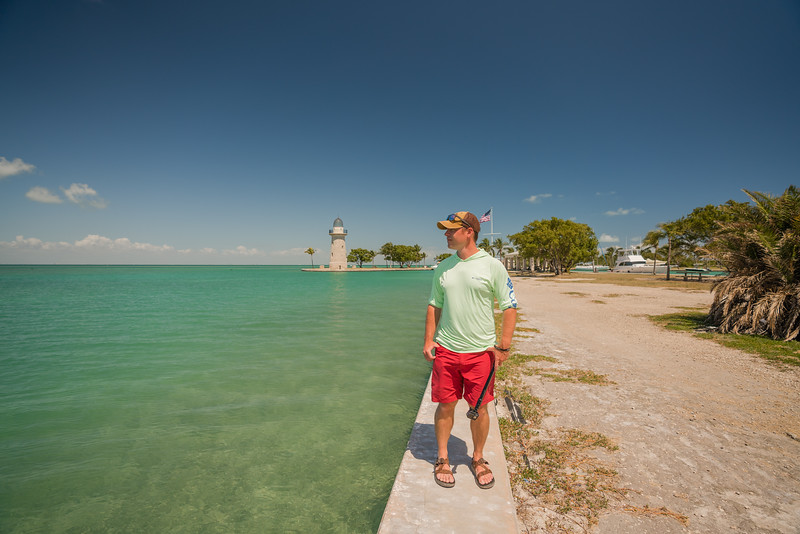
The best time to visit Biscayne National Park is summer when the weather is normally warmer. Furthermore, the seas are calm during these months, meaning it’s ideal for diving and snorkeling.
Still, visitors should be ready for thunderstorms and mosquitoes when visiting the park in summer.
How to Get Around Biscayne National Park

The best way to explore the park is by boat, especially since it’s mostly made up of water. If you have your own boat or vessel, you may explore the park on your own.
We recommend consulting with a ranger first before you venture into this exquisite natural wonder. That way, you’ll know where to go in Biscayne National Park, and ensure that your skills and knowledge are up to the challenge.
Alternatively, you may book a tour through Biscayne National Park Institute , which provides a variety of excursions within the park.
We booked the full-day sailing trip that departs from the Dante Fascell Visitors Center and with favorable weather and wind, were able to visit Boca Chita Key. The trip is very exclusive with only 6 visitors per trip.
How Much Does it Cost to Visit Biscayne National Park?

There’s no admission fee for this national park. There are, however, fees for certain activities and tours within the park. Camping, for one, costs a few bucks per night for each tent on Boca Chita Key and Elliott Key.
Campers with boats that need to be docked will have to pay an overnight fee of $20. Additionally, group camping is available for $30 a night.
While the park itself doesn’t charge admission, you’ll need to book a tour or charter a boat to see the actual park. So actual costs will vary depending on your choices for exploring.
Best Things to Do in Biscayne National Park

There’s never a dull moment in Biscayne National Park. With an open mind and an adventurous soul, you can experience a world of adventures both in water and on land in this park.
For an unforgettable escape, check out these recommendations.
Snorkeling in Biscayne National Park

One of the most popular and top activities is to go snorkeling in Biscayne National Park. With the park being located at the starting point of the Great Florida Barrier Reef, there is no mystery about this favored activity.
You can expect to see healthy coral, plenty of fish species, and plenty of other marine critters when you hop in the protected waters of Biscayne Bay.
While the reefs here don’t compare to the ones we’ve seen in Southeast Asia and the South Pacific, there is something special about experiencing the marine life that abounds in the only living reef off the coast of the USA.
Explore the Maritime Heritage Trail

The Maritime Heritage Trail is, no doubt, the national park’s undisputed crown jewel. Ideal for scuba diving and snorkeling, this underwater paradise is home to some of the numerous shipwrecks in Biscayne National Park.
There are five wrecks that span almost a century and a wide range of vessel types and sizes along this trail.
Take a Reef Cruise

Enjoying a reef cruise is one of the best and most fascinating ways to visit this national park. On this cruise, you’ll come in contact with over 320 kinds of fish, spiny lobsters, crabs, and shrimp.
Plus, you’ll spot tons of birds as you take this cruise, including cormorants and herons.
Boats depart from Convoy Point, and you’ll get an insightful orientation to the extraordinary fauna and flora of the bay before leaving.
There’s also a glass-bottom boat tour that lets you get a peek into the underwater world without ever getting wet.
Visit the Jones Family Historic District and Lagoon

Want to add a hint of history to your nature trip in Biscayne National Park? Then don’t forget to experience a kayaking escape on the Jones Family Historic District and Lagoon.
The area is listed on the National Register of Historic Places, making it an amazing pit stop for history buffs. The area is made up of Totten Key and Porgy Key, in which the Jones family grew key limes and pineapples in the 19th century.
Stop by the Dante Fascell Visitor Center

Spend a few hours at this visitors’ center, and watch a short film that will take you on an eye-opening virtual journey through the national park. Afterward, appreciate the interpretive exhibits displayed inside the visitors’ center.
Before leaving the area, pause at Dante Fascell Gallery, and watch a variety of striking contemporary art.
Explore Boca Chita Key

No list of the best things to do in Biscayne National Park is complete without a tour of Boca Chita. Led by a park naturalist, this three-hour boat tour lets you climb the historic lighthouse of the island.
On a clear day, you’ll see the striking skyline of Miami from this lighthouse. While it has never been a working lighthouse, this man-made attraction is still a sight to behold.
You’ll learn more about the history of this lighthouse and island through the knowledgeable park rangers.
Kayaking in Biscayne National Park

Paddlers will have ample opportunities to explore and see the mangrove shoreline along Biscayne mainland. You can rent a kayak or canoe by the national park concessioner. Don’t forget to drop by the visitor center for suggested routes and weather conditions.
That said, kayaking from the mainland to either Elliot Key or Boca Chita Key should not be attempted. If you wish to kayak around these islands, you’ll need to book a tour that visits them with a kayaking option.
Enjoy a SUP Adventure

If you’ve booked a sailing or boat trip out to either Boca Chita Key or Elliot Key, then you’ll likely have the opportunity to hop on a SUP board. This is a great way to see the reef and get up close to the mangroves in protected waters.
We find using SUP boards to be more intimate than a kayak and you can also snorkel from them! Just be sure to hang onto the tether while swimming so your board doesn’t blow away.
Hiking the Trails

Even with its limited land area, the park does have a few trails for those who want to stretch their legs. Hiking trails within the park include the Jetty Trail, Adams Key Loop, Elliott Key Loop, Spite Highway Trail, and Boca Chita Key Loop.
You’re not going to put serious miles under you on any of these trails, so don’t expect that. However, it’s a great way to explore the islands looking for interesting flora and fauna while seeking unique vantage points.
Where to Stay in Biscayne National Park

Biscayne National Park has a couple of excellent campgrounds. One is located on Boca Chita, a popular island destination for day trips. The other sits on the park’s largest island, Elliot Key.
You’ll have to shell out $25 a night on any of the park’s campgrounds. The fee includes boat docking and camping. Both campgrounds are available on a first-come, first-serve basis.
Although it has restrooms, there’s no shower or sink in Boca Chita Key’s campground. Also, there’s no drinking water available on this island. So, make sure to bring plenty of drinking water on your camping trip.
On the bright side, the campground is equipped with picnic tables and grills. But you’ll need to bring all of your own food and supplies to the island. With that in mind, be sure to pack out every single thing you pack in. Including your garbage. Leave nothing behind.
Meanwhile, Elliot Key’s campground has scores of convenient amenities. Not only does it offer drinking water, but it also has cold water showers, grills, picnic tables, and restrooms.
Where to Stay Near the National Park

Not fond of camping? Guess what? There are plenty of non-tented accommodation options near the park, ranging from upscale hotels to budget-friendly inns.
If you’re not planning to camp within the park, take note of our recommended places in nearby Homestead and Florida City below:
- Quality Inn
- Best Western
What to Pack for Your Visit

Not sure what to bring your vacation to this national park? Do yourself a favor, and check out our general packing list.
- Refillable water bottle
- Hiking sandals or boots
- Camera and tripod
- Bathing suit
- Rashguard or sun shirt
- Hiking shorts or pants
- Mosquito repellent
- Snacks and pack lunch
Looking for more information on what you should pack when visiting Biscayne National Park? Check out our Essential Packing List for Florida
You might also like:
- How to Get to Dry Tortugas National Park
- Ultimate Florida Keys Road Trip Planner
- Ultimate Key West Itinerary
- 18 Amazing Things to Do in Key Largo
- What to Do in Islamorada, Florida
- Ultimate 3 Day Weekend in Miami Itinerary
- Ultimate US National Parks Bucket List
Did you like this story? Share it!
Travel planning resources, about lina stock.
Lina is an award-winning photographer and writer that has been exploring the world since 2001. She has traveled to 100 countries on all 7 continents. Member: SATW, NATJA, ATTA, ITWA
1 thought on “Biscayne National Park Planner (Everything You Need to Know)”
The Aquatic Paradise, eco-system, crystal clear water of Biscayne National Park really appeal a lot, wishing to visit the place soon.
Leave a Comment Cancel reply

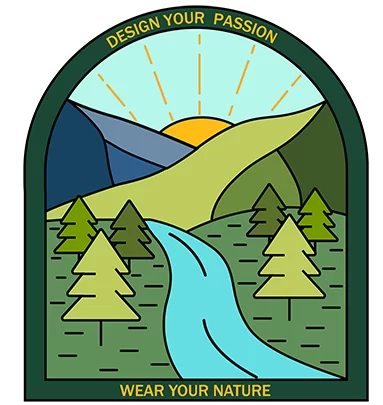
Biscayne National Park Snorkeling: Review Tours and Experience
If you’re looking for an unforgettable adventure, Biscayne National Park snorkeling should be at the top of your list. This stunning national park, located just off the coast of Miami, offers an underwater paradise teeming with vibrant coral reefs, colorful fish, and fascinating marine life. Imagine gliding through crystal-clear waters, encountering colorful coral reefs teeming with life, and experiencing the serene beauty of underwater landscapes that few places can rival. In this guide, nationalparkshops.com will lead you through all the essentials for an unforgettable Biscayne National Park snorkeling adventure to ensure you’re equipped with the necessary gear for a safe and enjoyable experience.
- 1 Snorkeling in Biscayne National Park
- 2 Guided Tours for Biscayne National Park snorkeling
- 3 Tips for Biscayne National Park snorkeling tour
- 4 What to bring for the Biscayne National Park snorkeling adventure?
- 5 Conclusion
Snorkeling in Biscayne National Park
Beneath the shimmering, clear waters off the coast of Miami lies a hidden gem that often escapes the attention of many: Biscayne National Park, home to the only living coral reef system in the continental United States. This underwater haven teems with an incredible variety of marine life, including hundreds of bird, fish, and marine species, making it a paradise for snorkelers of all levels.
As you skim across the park’s shallow turquoise waters by sail or motorboat, it’s easy to overlook the richness that lies beneath the surface. On the surface, it might appear as a tranquil expanse of water, but the true treasures of Biscayne National Park lie below, where 95% of its 173,000 acres is submerged, concealing a vibrant and dynamic ecosystem.
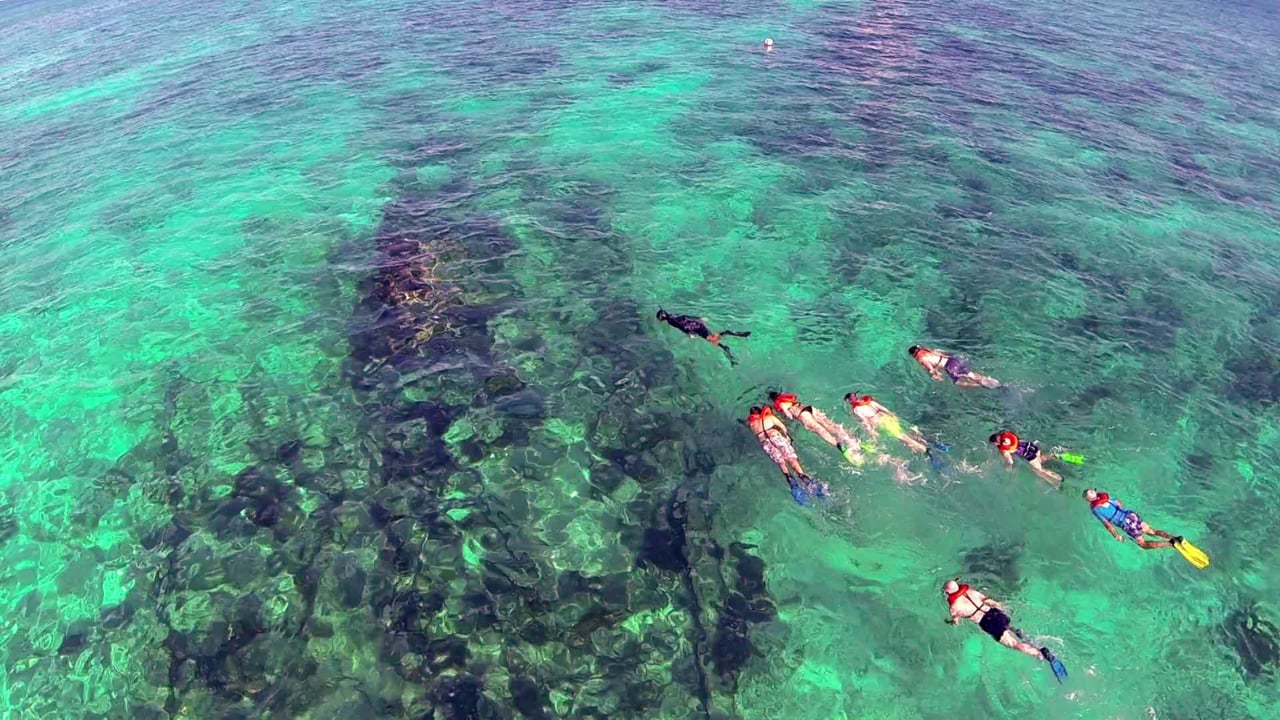
Diving beneath the surface, snorkelers are greeted by a mesmerizing world of ancient shipwrecks and bustling marine life. The coral reefs here are particularly noteworthy, forming the backbone of the park’s underwater environment. These corals create intricate habitats that support a vast diversity of fish species, each adding a splash of color and movement to the underwater landscape. Moreover, Biscayne’s waters are frequented by majestic sea turtles, gentle manatees, and playful bottlenose dolphins, all regular inhabitants of this thriving marine ecosystem.
To truly appreciate the beauty and biodiversity of Biscayne National Park, snorkeling is not just an option—it’s essential. Snorkeling allows you to immerse yourself in this underwater wonderland, where every glance reveals something extraordinary, from the delicate structures of coral formations to the graceful movements of marine animals. Whether you are an experienced snorkeler or a beginner, the vibrant underwater ecosystems and crystal-clear waters of Biscayne National Park offer an unparalleled experience that will leave you in awe of the park’s natural splendor.
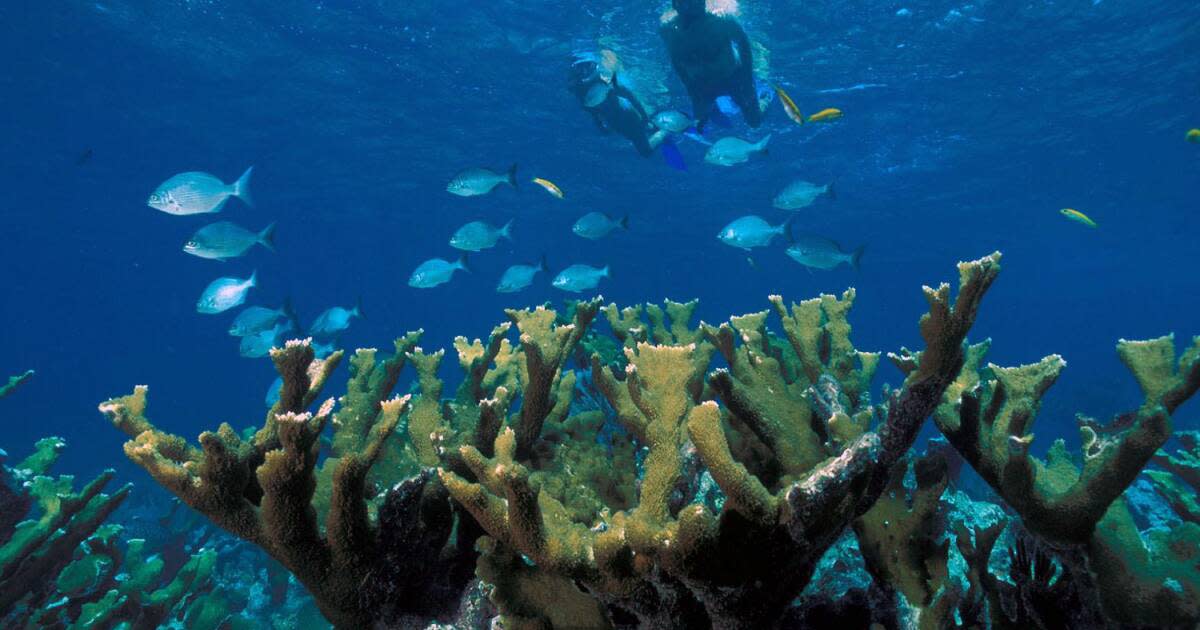
Guided Tours for Biscayne National Park snorkeling
The Biscayne National Park Institute offers a variety of eco-adventures, including snorkeling expeditions to shipwrecks on the Maritime Heritage Trail and exploring vibrant coral reefs teeming with life. Biscayne National Park snorkeling allows you to immerse yourself in the underwater beauty of the park, discovering shipwrecks, coral reefs, and marine life up close.
You can also enjoy cruises to Boca Chita Key and its historic lighthouse, sail across the stunning Biscayne Bay, and discover the rarely-seen marvels of Jones Lagoon, among other exciting activities.
To book your adventure, you can call 786-335-3644 , or visit the park store. Reservations are recommended to secure your spot.
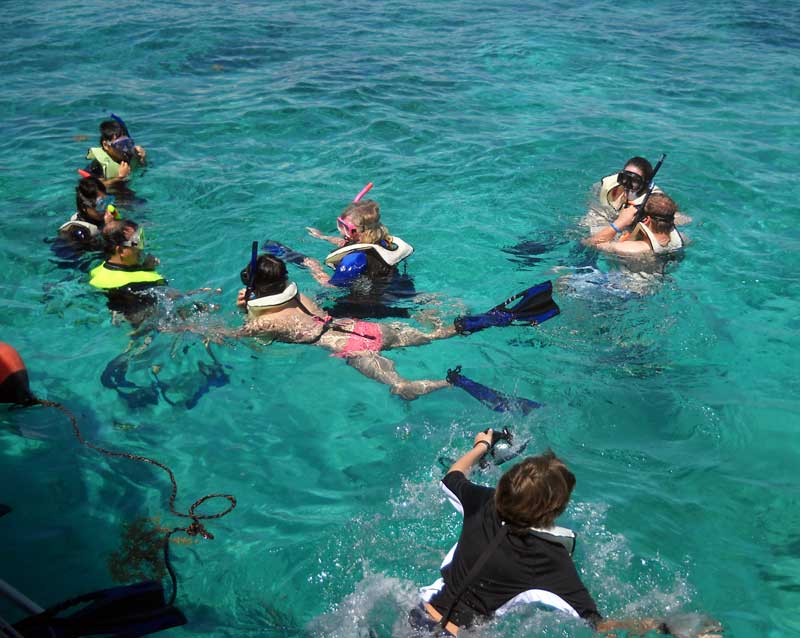
You can make a reservation here: Biscayne National Park Institute
In addition, you can also choose the following Biscayne National Park snorkeling tours:
- Ace Diving offers snorkeling and scuba diving charters and can be reached at 786-241-3194
- Cool Cruising for sightseeing boat tours and snorkeling charters is available at 305-714-2121.
- Diver’s Paradise provides both scuba diving and snorkeling charters, contact at 305-361-3483.
- Fiesta Cruises specializes in sightseeing boat tours and charters and can be reached at 305-371-3033.
- Island Queen Cruises offers sightseeing boat tours and charters, and their contact number is 305-379-5119.
- Midnight Sun Charters provides sightseeing boat tours and swim charters. You can contact them at 340-998-7682 or via email.
- Nice Aquatic is another option for sightseeing boat tours and snorkeling charters, reachable at 305-709-1185 or by email.
- Stiltsville area, Ocean Force Adventures offers sightseeing boat tours and can be reached at 305-372-3388.
- Photography Tours offers specialized photography tours and can be contacted at 954-258-2878 or via email.
- South Dade Charters LLC provides sightseeing and snorkeling charters, reachable at 786-277-4491.
- For kiteboarding adventures, South Florida Kiteboarding can be contacted at 786-781-1558.
Wind Addict Miami offers kiteboarding, sightseeing tours, and charters, they can be reached at 305-319-1119 or by email.
- Off the Beaten Path specializes in pre-packaged non-motorized tours and is available at 406-414-8949.
Reference source: https://www.nps.gov/bisc/planyourvisit/guidedtours.htm
Tips for Biscayne National Park snorkeling tour
During peak tourist seasons, it’s advisable to book your tours in advance as they tend to fill up quickly. However, during slower periods or on weekdays, you might be able to secure a last-minute reservation.
Based on my experience with Florida’s weather, afternoon storms are more common than morning ones, so if you’re worried about the weather, it’s better to book the morning Biscayne National Park snorkeling tour.
The exact location of your snorkeling trip can vary depending on the weather and water conditions on the day. The captain will decide the best spot to visit, ensuring a good experience given the conditions. With numerous snorkeling spots in Biscayne National Park, there are plenty of great options to explore.
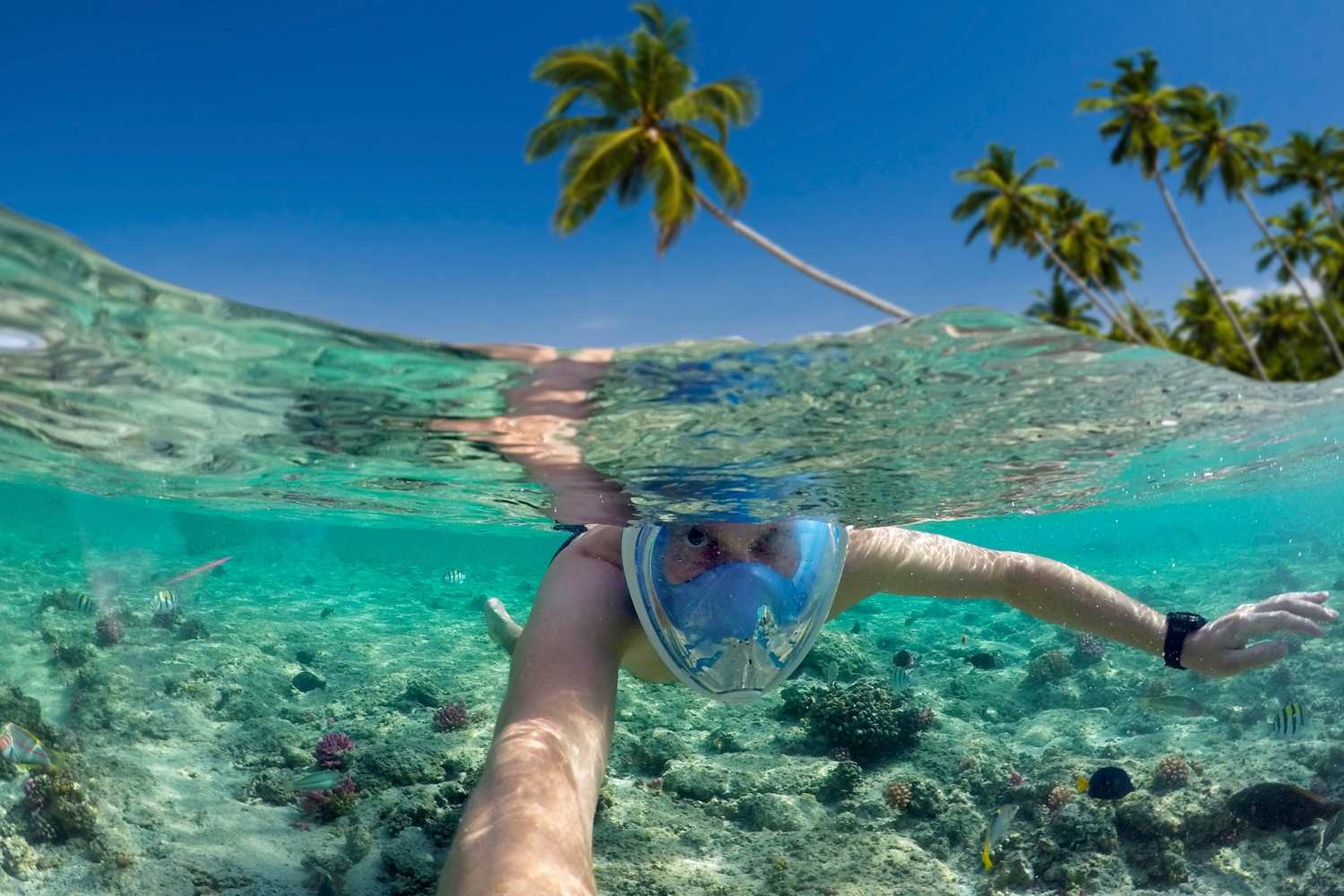
It’s important to check directions before you arrive, as relying on rideshare services for your return trip might not be feasible. You’re allowed to bring food on the boat, and there’s even a cooler available to keep your items cold. While a water cooler is provided on board, it’s encouraged to bring your own reusable water bottle.
Make sure to change into your bathing suit onshore, as there are no private changing areas on the boat. Additionally, there are no bathrooms on the boat, so you’ll want to use the facilities at the visitor center before departing. The tour company recommends arriving 30 minutes before your tour starts to allow ample time for check-in and gearing up at the shop upstairs.
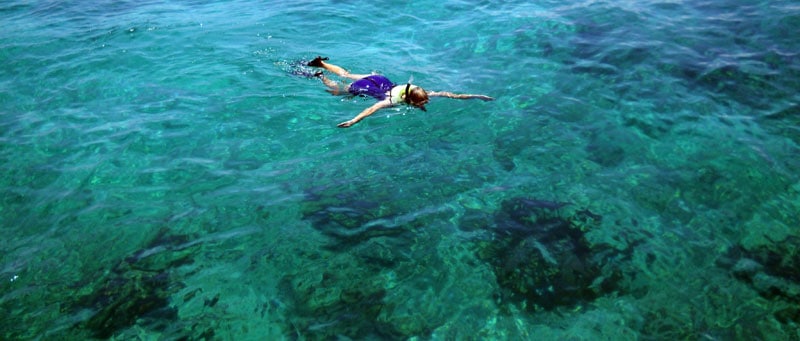
What to bring for the Biscayne National Park snorkeling adventure?
Bringing a bathing suit is an obvious must for your snorkeling adventure. Don’t forget to pack a towel, as these are not provided on the tour. Flip flops or water shoes are essential since everything on the boat tends to get wet.
A dry bag is highly recommended to keep your necessities and dry clothes safe from water exposure. A waterproof phone case is incredibly useful. I’ve used mine both kayaking and snorkeling, and it’s proven invaluable.
A water bottle is also important, as swimming is quite the workout and you’ll likely end up swallowing some saltwater. Make sure to use reef-safe sunscreen to protect the delicate coral reefs you’ll be exploring. Opt for products with zinc oxide or titanium oxide, which are also suitable for children and those with sensitive skin.
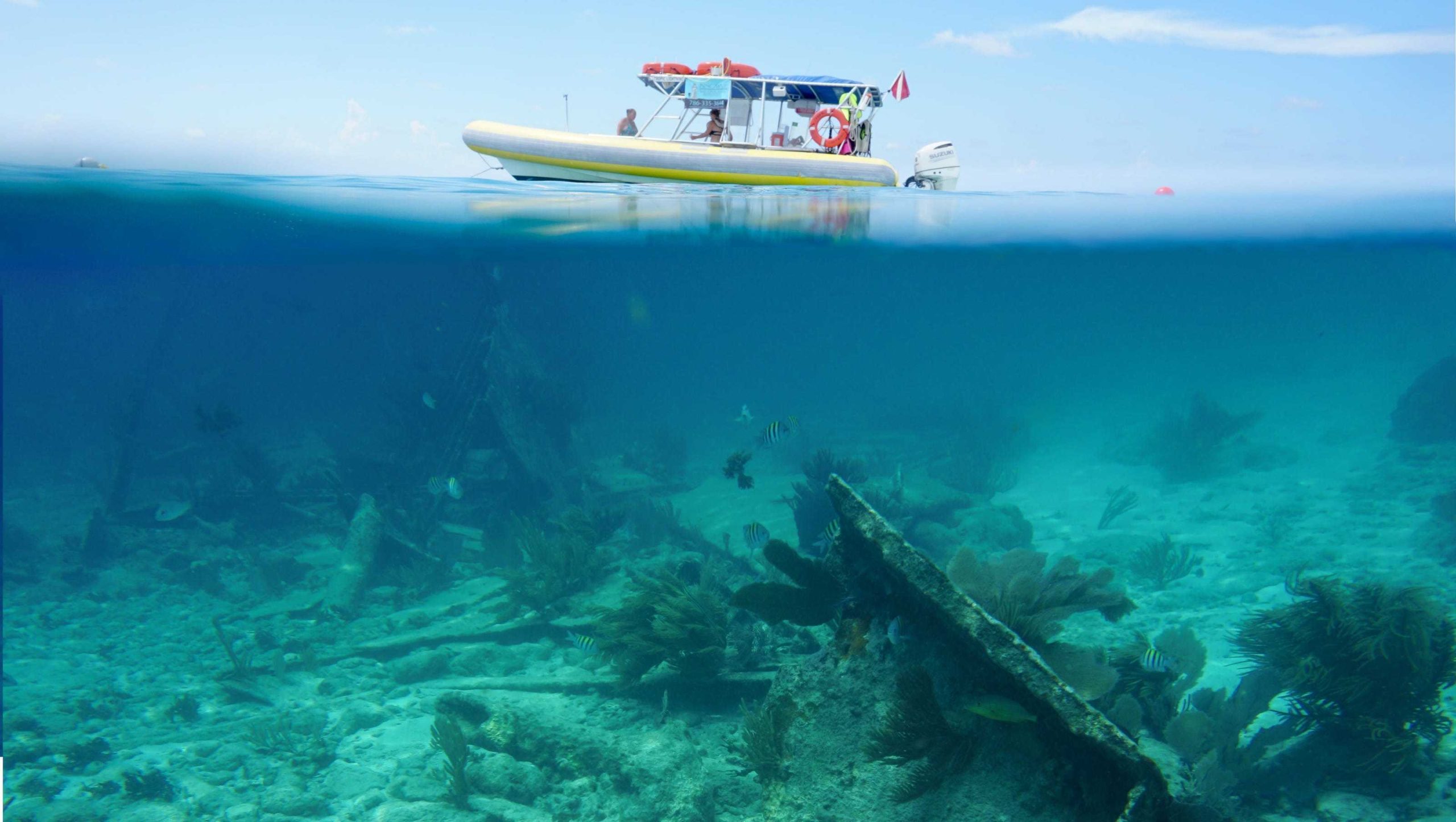
Biscayne National Park snorkeling offers an extraordinary opportunity to explore one of America’s most beautiful underwater parks. From the vibrant coral reefs to the diverse marine life, every snorkeling trip in Biscayne promises a new adventure and a deeper appreciation for the ocean’s wonders. So, pack your gear, dive in, and discover the breathtaking underwater world of Biscayne National Park.
- X (Twitter)
CEO John Smith is the Founder and CEO of Nationalparkshops.com. As an expert with more than 10 years of experience in the field of travel, exploration, survival skills and a burning passion for national parks
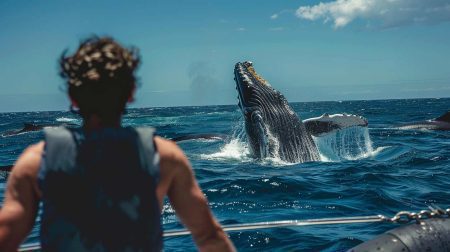
Save my name, email, and website in this browser for the next time I comment.
Type above and press Enter to search. Press Esc to cancel.

Land & Sea Boating Experiences - Explore & Learn
- Specialty Experiences and Events
- Island Experiences

Located just 20 miles south of Miami, Biscayne National Park protects the northernmost group of living coral reefs in the United States and its ecosystem. Over 95% of the park is “underwater” and is accessible only by boat. It consists of a rare combination of aquamarine waters, beautiful islands, and unique coral reefs. Its shoreline is covered by various types of mangrove trees which provides habitats for birds, mammals, and marine life. Biscayne Bay, with a maximum depth of about 12 feet, has underwater sea grass beds inhabited by shrimps, lobsters, fishes, sea turtles, and manatees. It also has over 10,000 years of human history, from pirates and shipwrecks to pineapple farmers and presidents. Outdoor enthusiasts can boat, snorkel, camp, watch wildlife…or simply relax in a rocking chair gazing out over the bay.
The Institute provides many educational and exciting experiences while you are visiting the park including wildlife watching, boating, paddle-boarding, sailing, snorkeling, and much more. Explore the mangrove estuaries or the shipwrecks in the bay and ocean or glide under the waves to see the colorful coral reefs. Visit the uninhabited Florida Keys and walk the natural beaches and trails. There are also picnic areas and restrooms. Join a subtropical island guided tour, go camping on an island, or hike the length of Elliott Key.
Intimate Snorkel and Paddle Adventure
An amazing paddle in Jones Lagoon along with a reef, wreck or bay snorkel on a 24' powerboat. Max. of 6 visitors.
Sailing, Island Visit, and Paddle Experience
Sail to Boca Chita or Adams Key where you can hike the islands, snorkel the mangroves, or paddleboard through the beautiful mangrove channels.
Boca Chita Island Experience
Explore and learn about the beautiful island of Boca Chita on a guided boat ride. Climb the lighthouse, walk the trail, wade at the beach, and immerse yourself in the history of the island.
Snorkel Experience
Reef, bay or wreck snorkeling depending on the weather on a 20-passenger powerboat.
News Articles & Blogs
Have you visited jones lagoon yet, find an adventure that’s right for you, experience boca chita, park after dark.

How To Visit Biscayne National Park: The Best Tours and What To Know About Visiting
November 6, 2023.
Biscayne National Park is a Florida national park that is 95% water! The South Florida park protects 270 square miles around the northernmost group of living coral reefs in the United States. Biscayne was officially designated a national park in 1980, but the fight to protect this area began much earlier. Don't miss this park on a Florida National Park trip!
In the 1950’s, Americans were taking more vacations to Florida and the Keys. A vision to dredge a canal to the ocean for a new city and a major seaport was forming in the area that Biscayne occupies today.
Luckily, a small group that disagreed with this plan began to fight for public support to protect this area. Biscayne was declared a national monument by President Lyndon B. Johnson in 1968 and was designated a national park about a decade later.
Entry to Biscayne National Park is free but there is little to do without purchasing a guided tour. This post covers things to do in Biscayne National Park, when to visit and more things to know about visiting this underrated national park.
This blog is based on my experiences visiting the Everglades in March 2022, but has been updated for 2024.
Table of Contents
How to get to biscayne national park, when to visit biscayne national park, camping in biscayne national park, hotels in homestead, take a boat tour in biscayne, other tour companies that operate in biscayne, my experience on the snorkel and paddle eco adventure tour, dante fascell visitor center, nearby biscayne national park, final thoughts.

Biscayne National Park is located on the South Florida coast less than an hour’s drive from Miami. Many of the water activities and tours will begin at the Dante Fascell Visitor Center, located a 45 minute drive away from the Miami international airport.
You can also fly into the Fort Lauderdale Airport, which is a little over an hour from Biscayne National Park.

There is really no bad time to visit Biscayne National Park. If you’ll be swimming, the weather may be nicest to visit during the summer when the temperatures are warm. If you want to camp on one of the islands, you may want to avoid the heat of the summer. Also keep in mind that hurricanes are most likely to occur between August and September.
I visited in March and had very nice weather!
Where to Stay When Visiting Biscayne National Park
If you have a boat or arrange transportation by boat, there are two islands in Biscayne that allow camping. The more popular option in Boca Chita Key. This island has a lighthouse, picnic tables and grills. There are toilets but no drinking water or showers available.
The other island is Elliott Key, which is bigger. Elliott Key has some hiking trails along with cold water showers and drinking water.
If you would like to stay in a hotel, the closest area is Homestead. Homestead is 20 minutes from the Dante Fascell Visitor Center. This is also a great base for exploring Everglades National Park during your trip!
A couple of mid range options with good reviews in Homestead are the Uptown Suites Extended Stay , Hilton Garden Inn and the Hampton Inn & Suites .
The Best Things To Do in Biscayne National Park
In my opinion, a guided tour is definitely the best way to see Biscayne National Park!
There are a handful of tour operators authorized to give tours inside of the park, but Biscayne National Park Institute is the only non-profit. The institute offers a variety of tours, including a historic boat tour, snorkeling, paddle boarding, kayaking, sailing and scuba diving.
Tour Options with the Biscayne National Park Institute:
- Heritage of Biscayne Cruise: Covers the history of the park and takes about 3.5 hours. A popular option if you don’t want to get wet.
- Small Group Snorkel Experience: Includes two snorkel locations and takes about 3.5 hours.
- Snorkel and Paddle Eco Adventure: Includes snorkeling, paddle boarding and a stop on Boca Chita and takes about 6 hours. This is the tour that I did.
- Jones Lagoon Eco Adventure Paddle: Paddle boarding in the Jones Lagoon area for 3.5 hours.
- Paddle the Mangroves and Seagrass Meadows: 1.5 hours of kayaking.
- Scuba Eco Adventure: 6 hours of scuba diving.
- Sail, Paddle, Snorkel and Island Visit: This tour includes a mix of snorkeling, paddling and a visit to Boca Chita on a sailboat. It takes 6 hours and the snorkeling will be in the calmer waters around mangrove trees.
In addition to Biscayne National Park Institute, there are a few other tour operators authorized inside of the park. Wind Addict Florida and South Florida Kiteboarding offer kiteboarding lessons and Explore Miami, Ocean Force Adventures and Miami Sailing Charters offer different options for sightseeing.
The Snorkel and Paddle Eco Adventure is a great option to spend the day seeing a variety of the park. This tour includes both paddling and snorkeling, so you’ll get to see different types of scenery and have a lot of adventure along the way.

What To Expect:
- This is a small group tour! The group for my tour was only 6 people.
- At this writing, this tour costs $179 per person.
- Snorkel and paddling gear is included but lunch is not.
What to Bring:
- A packed lunch
- Reef Friendly Sunscreen
- Bathing suit

The tour began with a long boat ride out from the Dante Fascell Visitor Center to our snorkeling location. On the way, our guide told us about the history of the park and the surrounding area.
From the boat, you’ll be able to see the Turkey Point Nuclear Powerplant. One interesting thing about the powerplant is that the saltwater cooling ponds and adjacent freshwater ponds for the powerplant form an ideal environment for endangered crocodiles. The crocodiles are monitored here and this has been a crucial area for increasing the population of crocodiles in Florida.
There are far less crocodiles than alligators than Florida. Crocodiles are larger and have more of a V-shaped snout.
Unfortunately, it was too windy on the day of my tour to go to the Atlantic side and snorkel among the coral reefs. Typically on a nice weather day, you would visit the coral reefs. Instead, we snorkeled alongside mangrove trees at the keyhole of Sands Key. We saw schools of fish, plantlife on the mangrove roots and even some lobsters under a rock ledge.
After snorkeling, we headed to Boca Chita Island to eat our packed lunches. I was a bit surprised to see so many boats docked up on the island playing music, cooking and having a good time. (It honestly took away from the peacefulness of the national park). On the island, our guide unlocked the lighthouse for us and we climbed to the top for an amazing view of the island and the aqua-colored water.

The lighthouse on Boca Chita, along with the other structures on the island, were built by Mark Honeywell in the 1930’s. It was built as their holiday resort and was meant to be used for parties. The lighthouse actually faces inland instead of at the sea, because it was built to impress guests instead of providing navigation.
In addition to the lighthouse, the island had restrooms, a chapel and picnic tables. We didn’t have much time to explore any other part of the island. Today, all of the buildings on Boca Chita are leftover from the 1930’s, except for the restroom facility.
The best part of Boca Chita was seeing some dolphins swimming around the bay. There were two that were jumping out of the water and swimming around almost the entire time we were there.

The third part of the tour was paddle boarding in the peaceful waters of Jones Lagoon. On the way, we passed by Adams Key, another island in the park that visitors can explore for day use. There are picnic tables and a short trail on the island.
When we reached Jones Lagoon, we were surrounded by beautiful mangrove trees. Each guest had the option of SUP paddles or kayaking paddles as we made our way through mangrove tunnels. While paddling, we saw nurse sharks, jellyfish and stingrays. It was a beautiful area to paddle and explore.

Overall, I had an amazing day trip with the Biscayne National Park Institute and learned a lot about the history and geology from my guide. I highly recommend an experience like this for your day trip to Biscayne National Park.
Be sure to explore the Dante Fascell Visitor Center before or after your tour. There is a museum area upstairs where you can learn about the wildlife and ecosystems in the park. There are also some educational films and a touch area where you can feel things like sea sponges and corals.
Portions of Everglades National Park are located less than an hour from Biscayne. On your way to the Everglades, be sure to stop at the Robert is Here Fruit Stand for exotic fruit or a milkshake! For more information on visiting the Everglades, read my Everglades itinerary .
Biscayne is also very close to the start of the Florida Overseas Highway, which leads to Key West. If you are planning a Florida Keys road trip , I have a 5 day itinerary that includes both the Upper Keys and Key West.
I hope this guide helps you plan a perfect trip to Biscayne National Park! This South Florida national park makes for a fantastic day trip from Miami or a great addition to a Florida National Park trip. I hope you can get out on the water and experience the beauty of the park!
For More Florida Travel Guides, check out these guides:
- The Perfect Everglades National Park Itinerary
- 5 Things To Do in Titusville, FL
- An Epic Florida Keys Road Trip
- Things To Do in Crystal River, FL
- The Best Things To Do in Orlando Besides Disney
Thanks for Reading!
Save to Pinterest!

US National Parks
How to Have an Epic Miami to Key West Road Trip: 5 Day Itinerary
14 of the Best National Parks to Visit in April
Let's stay in touch!
Join the Lost with Lydia email list to get monthly travel guides and tips!
You also may like

The Best Way to Spend 3 Days in the Everglades and Big Cypress


The Best Things to do Biscayne National Park - Florida
B iscayne National Park is composed of 95% water, leaving only 5% landmass, which mostly consists of barrier reefs. Needless to say, the best way to explore this gem is by boat and water activities!
About Biscayne National Park
To best understand Biscayne National Park is to understand why it is a National Park in the first place. Southern Florida was becoming an extremely popular area for both people moving to the area and people seeking vacations in the Florida sun.
In 1950, Miami had 249,276 residents. Today, the Miami metro population in 2022 reached 6,215,000!
Several people moved to the area with big dreams that didn't include the preservation of the area and its environment. One of these ideas included a major industrial seaport which would have called for the dredging of a 40-foot deep channel through Biscayne Bay's clear, shallow waters.
This created a massive movement from long-time local residents like Juanita Greene and her inspiring newspaper stories in the Miami Herald and Herbert Hoover Jr. (Hoover Vacuums) who brought legislators down from Washington for dramatic blimp rides over the proposed park for support for its protection.
Longtime Florida Representative Dante Fascell fought for the creation of the Biscayne National Monument. The fight was to help protect terrestrial, marine, and amphibious life in an area of great natural beauty.
This fight proved successful when President Lyndon B. Johnson signed the bill on October 18, 1968.
The park was expanded in 1974 and was designated as a National Park in 1980. Today the park boundaries stretch as far south as Key Largo, extending all the way up the coast just south of Miami, Florida.
Today, NPS Park Rangers and the National Park Service at Biscayne National Park help protect this northern portion of a 150-mile-long chain of coral reefs that extend all the way south through the southern tip of Florida, including the Florida Keys, and into the Caribbean. This coral reef of the Florida Keys is North America's only living coral barrier reef and the third longest coral barrier reef in the world.
Because of these efforts, the American public has one of their most treasured National Parks just an hour's drive south of downtown Miami. The best part is that once you are here, you feel miles away from civilization until you get on the water and can see the impressive Miami skyline in the distance.
Things to know before your visit
Entrance fee.
$0.00 -There is no entrance fee for Biscayne National Park.
Planning a National Park vacation? America the Beautiful/National Park Pass covers entrance fees for an entire year to all US National Park Sites and over 2,000 Federal Recreation Fee Sites.
The park pass covers everyone in the car for per-vehicle sites and for up to 4 adults for per-person sites.
Buy on REI.com and REI will donate 10% of pass proceeds to the National Forest Foundation, National Park Foundation, and the U.S. Endowment for Forestry & Communities.
Learn more about National Park Passes for parks that have an entrance fee.
EST - Eastern Standard Time
Pets are allowed within Biscayne NP. Pets must be on a leash no longer than 6 feet long.
On Elliott Key pets on a leash are permitted within developed areas only. Pets may not be left unattended. Pets are not allowed in buildings.
Pets, with the exception of service animals, are not allowed on Boca Chita Key including vessels docked at Boca Chita Key.
Park waters are open 24 hours a day, all year.
Best time to visit Biscayne
The best time to visit Biscayne National Park is in the winter months from November to May. This is commonly known as the dry season with much more favorable weather conditions.
The opposite is the summer months commonly referred to as the wet season. During this time you will find higher temperatures and humidity, storms are much more frequent, and also when biting insects become much more unbearable.
This is also the time you have to consider Hurricane Season which typically runs from June 1 through November 30.
Best Things to do in Biscayne National Park
I have had park visitors tell me that they don't think there s really anything to do during a visit to Biscayne NP ! They would go so far as to say it was not worthy to be a National Park. This is where I shake my head in disappointment! I personally LOVE Biscayne and think it's one of my favorites!
The problem is that some people have come to expect that all they have to do is just show up and expect to be entertained.
This is true for some of the most visited parks as there are many programs available to help manage the large crowds but this is impossible at Biscayne because of the fact that it is a water-based park.
If you fail to show up without your own boat or have not done any research and made plans for a boat trip, you may just simply go visit the visitor center and hike the .8-mile Convoy Point Jetty Walk and drive to the Everglades .
What makes me happy is that you are here reading this article and will show up prepared and able to make the most out of your trip to this amazing park!
There is actually quite a lot to do in Biscayne, you just have to give yourself time to do it. The Biscayne National Park's visitor center is a great starting point but getting out on the water and seeing more of the park is truly amazing.
Dante Fascell Visitor Center
The Dante Fascell Visitors Center is located 9 miles East of Homestead Florida on Convoy Point.
The visitor center is very well set up with lots of great information on the park's four ecosystems through interpretative displays and several videos in the auditorium.
I personally enjoyed all the touch displays where people can actually touch things like bones, feathers, sponges, and corals from the area.
There is also a Dante Fascell Visitor Center Gallery, a place contemporary artists have been inspired by the beauty of Biscayne National Park and South Florida show off their work.
The Biscayne National Park Institute is also located in the visitor center and provides several unique experiences for park visitors as they provide several different tours including boat rides to Boca Chita Island, Adams Key, and Elliott Key. They also offer stand-up paddleboarding, snorkeling tours, and even tours for scuba divers. Tickets can be purchased here but I highly recommend going to their website before arriving at the park as the tours often sell out in the busy season.
They also offer several types of tours and some tours are on certain days while other tours may run daily, weekly, or monthly. There are also three different ports in three different locations to take boat tours including the park's visitor center in Homestead, Deering Estate, and Coconut Grove dinner key marina.
Hike the Convoy Point Jetty Walk
After checking out the Dante Fascell Visitor Center, Make sure to walk the Convoy Point hiking trail. Simply step outside to the compass rose mosaic on the pavement on the first floor of the visitor center. This is the beginning of the Trail. This is a short trail and is only .8 miles out and back trail or .6 miles if you walk straight over to stop 4 by the flagpole.
Most visitors can easily enjoy this trail as there are several park benches with fantastic views of the Atlantic Ocean along the way with a gravel and boardwalk surface. This is one of the few activities you can do without getting on the water to really appreciate this park.
Boat Tour to Boca Chita Key
A visit to Biscayne National Park would not be complete without taking a boat tour to Boca Chita Key. Here you will find a beautiful day-use picnic area with sweeping views of Biscayne Bay.
You can also see the historic and iconic lighthouse, take a half-mile hiking trail and even go camping. We even enjoyed watching manatees in the bay!
Click Here for more information on boat tours.
Boca Chita Lighthouse
The very photogenic Boca Chita Lighthouse is definitely the highlight of this island! Make sure to take advantage and go to the top of this 65-foot lighthouse and its observation deck when the lighthouse is open as you will be rewarded with sweeping views of the bay, ocean, and Miami skyline.
The Boca Chita Key Lighthouse was built by Mark Honeywell in the 1930s and was placed on the National Register of Historic Places on August 1, 1997.
Fishing is a very popular activity at Biscayne National Park. Just remember that a Florida Saltwater Fishing License is required. Please check the fishing rules and regulations for up-to-date information and how to obtain a fishing license.
Stiltsville Boat Tour
Most of the Stiltsville Bout Tours leave from Coconut Grove, a place where sailing clubs and marinas dot the waterfront. This upscale Miami neighborhood also known colloquially as The Grove is the oldest continuously inhabited neighborhood of Miami in Miami -Dade County, Florida.
Here you will find a fantastic mixture of shops, boutiques, and several outdoor cafes. This makes for a great day combined with taking a couple of hours to tour Stiltsville by boat. The tour also goes past Bill Baggs Cape Florida State Park and the iconic Cape Florida lighthouse then you focus on the remaining houses in Stiltsville. The boat guides provide lots of fascinating information about the area and everyone had a fantastic time as we even saw tropical fish and dolphins! Did I mention the breathtaking city line from the water? I would take this tour again!
Snorkeling in Biscayne
Biscayne National Park is teeming with marine life! There are nearly 600 species of fish that call Biscayne home along with over 200 species of birds, manatees, sea turtles, dolphins and threatened and endangered species. Whether you like to go diving or snorkeling, this makes Biscayne a special place to see underwater.
Snorkeling from shore
You can snorkel from the shoreline but be prepared for the extremely shallow waters of Biscayne Bay. Then you will have to contend with seagrass and mud bottom making visibility poor.
The good news is that this area is teeming with sea life however it is small and takes patience to enjoy.
You can borrow a dive flag from the park visitor center if you choose to snorkel from shore.
Snorkeling Boat Trips
The Biscayne National Park Institute has half-day and full-day trips on powerboats that go to the reef that is approximately ten miles offshore, wrecks, or Biscayne Bay, based on the weather.
Full-day sailboat trips stay in the bay and can snorkel in the fringes of the mangroves oftentimes seeing dolphins, rays, sea turtles, and tropical fish.
Click here for boat tours that provide snorkeling opportunities.
Canoeing and Kayaking
You can easily put your kayak in the water when you arrive at the Dante Fascell Visitor Center, otherwise, you can meet with the park's concession who will be happy to rent you a Kayak. The Canoe/Kayak launch is right next to the parking lot when you park at the visitor center.
There is no charge to launch a canoe/kayak but make sure to check in with the visitor center and obtain a free permit for your vehicle if you plan on kayaking out and staying overnight at one of the park's campgrounds.
For me personally, Canoeing/ kayaking makes the ideal way to explore the mangrove forests and mangrove-fringed shorelines, and shallow bay waters of the park.
Click Here to see the park's paddling trail guides including Jones Lagoon and Hurricane Creek.
Biscayne National Park Camping
There are two campgrounds in Biscayne National Park ; Boca Chita Key and Elliott Key.
Both campgrounds as remote camping as there are no services available once you are there.
Both campgrounds require a boat to get there and all sites have picnic tables, grills, and restrooms.
Camping is on a first-come, first-served basis. The campsite is $25 a night or $35/Night for docking and camping.
Click Here to book transportation to Elliott Key.
Boca Chita Key Campground is on the park's most popular island. The campground provides breathtaking waterfront views, a nice grass lawn in the camping area, picnic tables, and grills. Toilets are available, but there are no showers, sinks, or drinking water.
Elliott Key Campground is on the park's largest island. The campground has restrooms, sinks, cold water showers, picnic tables, and grills. Drinking water is available on Elliott Key but it is highly recommended to bring your own water as the system does go down on occasion.
Biscayne National Park Lodging
There are no National Park Lodges in Biscayne National Park.
TownePlace Suites by Marriott Miami Homestead - A free breakfast buffet, dry cleaning/laundry services, and a gym are just a few of the amenities provided at TownePlace Suites by Marriott Miami Homestead. Free in-room Wi-Fi and a business center are available to all guests.
Ritz-Carlton Key Biscayne - Take advantage of a terrace, shopping on-site, and a garden at The Ritz-Carlton Key Biscayne, Miami. With a beachfront location, beach cabanas, and sun loungers, this resort is the perfect place to soak up some sun. Free Wi-Fi in public areas is available to all guests, along with dry cleaning/laundry services and a bar.
Courtyard by Marriott Miami Homestead - At Courtyard by Marriott Miami Homestead, you can look forward to a grocery/convenience store, a coffee shop/café, and a library. The onsite restaurant, The Bistro, features light fare. In addition to dry cleaning/laundry services and a bar, guests can connect to free in-room Wi-Fi.
Quality Inn Miami South - free to-go breakfast, a rooftop terrace, and a coffee shop/café. Be sure to enjoy a meal at Dapple Bar and Kitchen, the onsite restaurant. In addition to a garden and dry cleaning/laundry services, guests can connect to free in-room Wi-Fi.
La Quinta Inn & Suites by Wyndham Miami Cutler Bay - free continental breakfast and laundry facilities. Guests can connect to free in-room Wi-Fi.
More information about Biscayne National Park
I hope this gets you excited about visiting Biscayne National Park . This is one of our favorite free things to do in Miami !
Biscayne National Park - Our epic guide includes everything you need to know to visit the best places in the park.
Stiltsville Boat Tour - This guided tour is a great way to experience the historic Stiltsville Houses and enjoy a unique experience in Biscayne NP.
Nearby Florida State Parks
Bahia Honda State Park - This Florida State Park offers glass-bottom boat tours which is a great way to see tropical fish without snorkeling.
John Pennekamp Coral Reef State Park
Long Key State Park
Additional Florida National Parks Articles
Things to do in Everglades National Park
Everglades National Park Wildlife - Learn more about the great wildlife you can see in the park.
Everglades Boat Tours are available in both Flamingo and the Gulf Coast Visitor Center.
Anhinga Trail- Everglades National Park
The Everglades is one of the Most Visited National Parks in the United States .
Dry Tortugas National Park
Things to do in Dry Tortugas National Park .
Big Cypress National Preserve
DeSoto National Memorial
Canaveral National Seashore
Timucuan Ecological and Historical Preserve
Castillo De San Marcos National Monument
Fort Matanzas National Monument
Check out all of the National Parks in Florida along with neighboring National Parks in Alabama and Georgia National Parks


Escape Miami For A Day At Biscayne National Park, One Of America’s Greatest Metro-Adjacent Wild Spaces
Biscayne National Park is just minutes from Miami, yet presents a captivating counterpoint to the bustling South Beach scene. This truly remarkable ecological preserve encompasses a vast expanse of Biscayne Bay, offering a unique portal into a pristine marine environment teeming with life. Beyond the crystal-clear turquoise waters lie vibrant coral reefs and scattered islands within the park’s boundaries. With 95% of the park underwater – this park is unique and a must-visit for anyone living or visiting Miami.
Here is how to visit and what to do while you’re there.
HOW TO GET TO BISCAYNE NATIONAL PARK FROM MIAMI:

Reaching Biscayne National Park from Miami by car is simple, as the scenic journey is within a dozen miles of much of the city, making it a quick drive. Of course, once you reach the park, you’ll spend your time on the water and there are no bridges or other access besides a boat. This is also why you might opt to book with a tour operator offering comprehensive Biscayne National Park adventures for individuals preferring a more structured approach.
Numerous companies offer excursions to the park with a guide. These can encompass transportation to and from the park, all necessary equipment for your chosen activity (such as snorkels, fins, and life jackets), and the invaluable expertise of a certified guide. A guided tour allows visitors to navigate the park’s diverse ecosystems and hidden wonders confidently.
WHAT TO DO WHILE YOU’RE THERE:
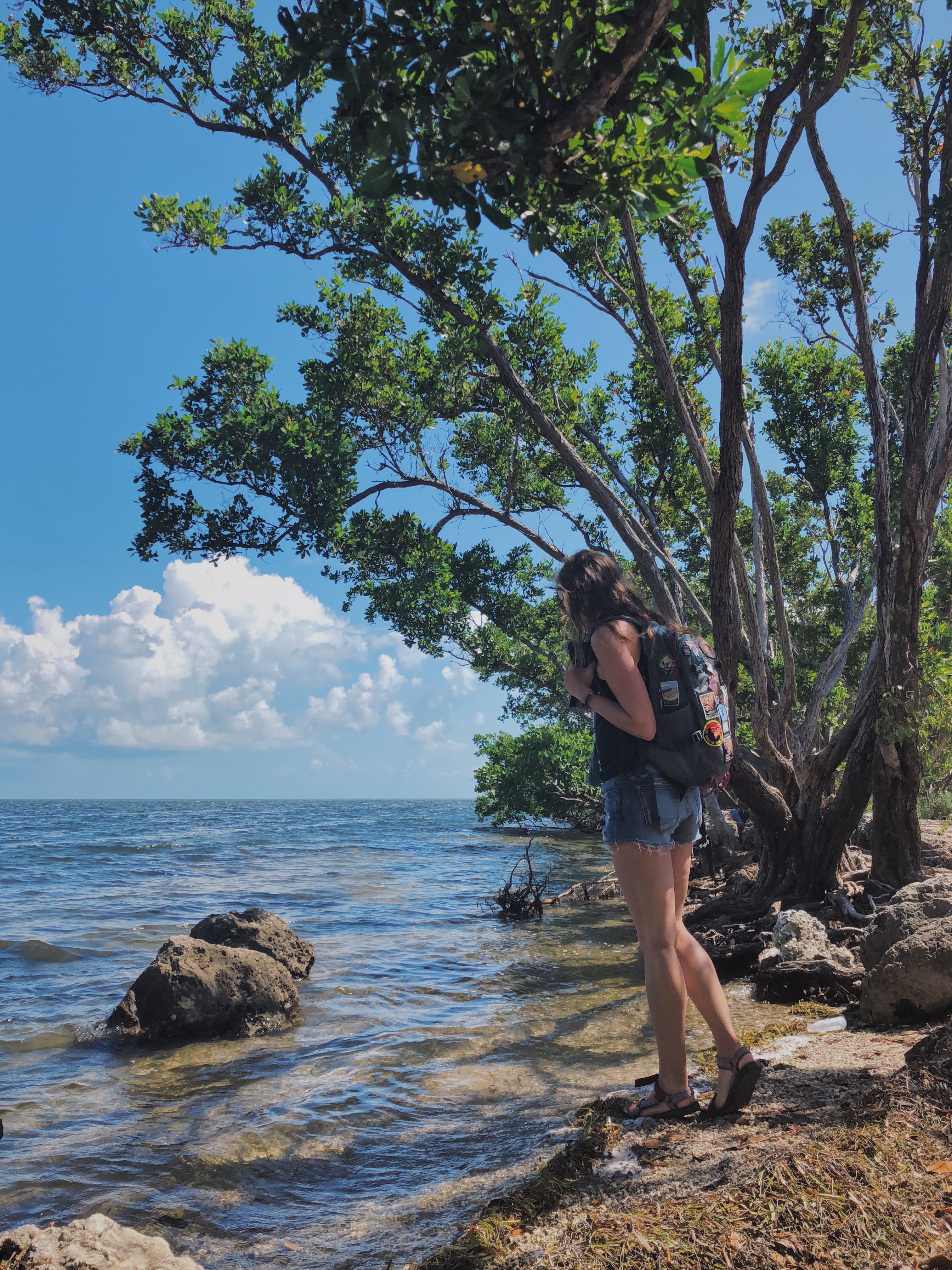
You have to get out on the water at Biscayne National Park, and the best way to do so is to take a boat cruise or charter. This allows visitors to experience the park’s vastness—a staggering 95% of its 173,000 acres is water.
The park says that 90% of visitors enter the park by boat, either on a guided tour or with their own vessel. Biscayne National Park Institute has several guided options to reserve in advance, from just hours to an all-day excursion. The park service also maintains a listing of other operators that are authorized to operate in the park.
SNORKELING:
Biscayne National Park protects a section of the only living coral reef system in the continental United States, making it a hotspot for marine life and thus – snorkeling . When submerging yourself underwater, you’ll be mesmerized by the vibrant tapestry of life just beneath the surface. Don your snorkel and fins and be transported into a breathtaking kaleidoscope of color. Schools of vibrant fish, graceful sea turtles, and colorful color reefs will leave you wishing you had brought your underwater camera. Witnessing this remarkable biodiversity firsthand offers an unparalleled opportunity to appreciate the bay’s ecology.
For visitors seeking a more contemplative experience, exploring the mangrove forests on the coastline via kayak or canoe offers a unique perspective into a seemingly untouched ecosystem. The mangroves provide a crucial habitat for countless species of marine life and act as a vital nursery for countless fish. A benefit of kayaking or canoeing in Biscayne National Park specifically is that many of the lagoons, creeks, and channels are too shallow for boating so that paddlers will have them to themselves. There are no rentals available at the park itself, but there are plenty of options nearby – and launching of personal kayaks or canoes is allowed and has no charge.
ISLAND HOPPING:
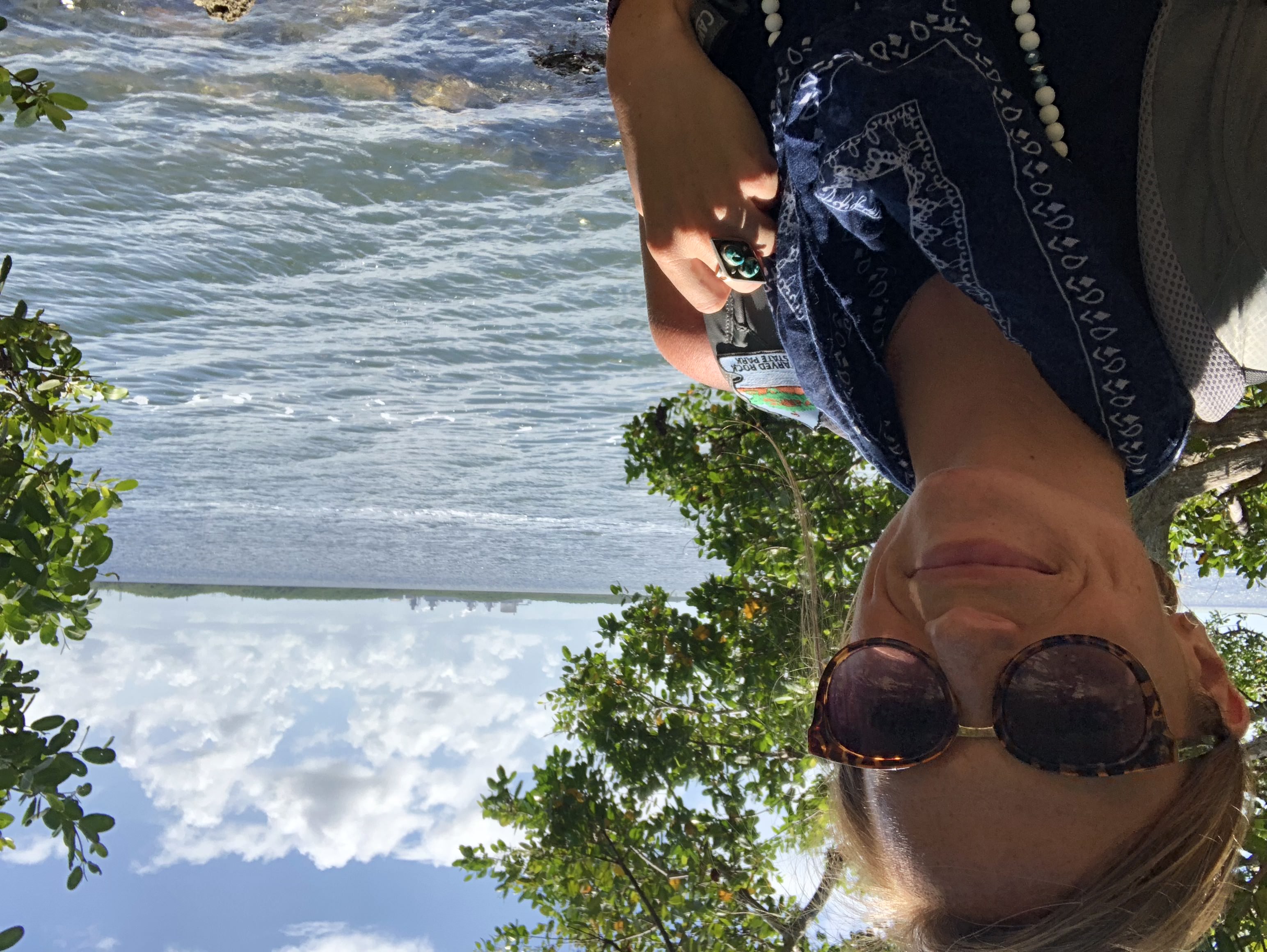
While there are numerous islands scattered throughout Biscayne Bay, the most popular to visit are Boca Chita Key , Elliott Key , and Adams Key .
Boca Chita Key:
This is the most popular island to visit and home to the iconic Boca Chita Lighthouse, which has stood guard against the elements since the 1930s. Explore the surrounding nature trails, enjoy a picnic lunch on the beach, and climb the lighthouse to the Observation Deck for panoramic views of the bay if it’s open during your visit.
Elliott Key:
This island, the largest in the park and accessible by boat, offers a glimpse into a pristine coastal ecosystem. Hike the interpretive loop trail to learn about the island’s plant and animal life, relax on the secluded beach, and soak up the tranquility.
This smaller island is only open from dawn to dusk and is a popular kayak launching spot. Hike the short loop trail, watching for pelicans, ospreys, and herons.
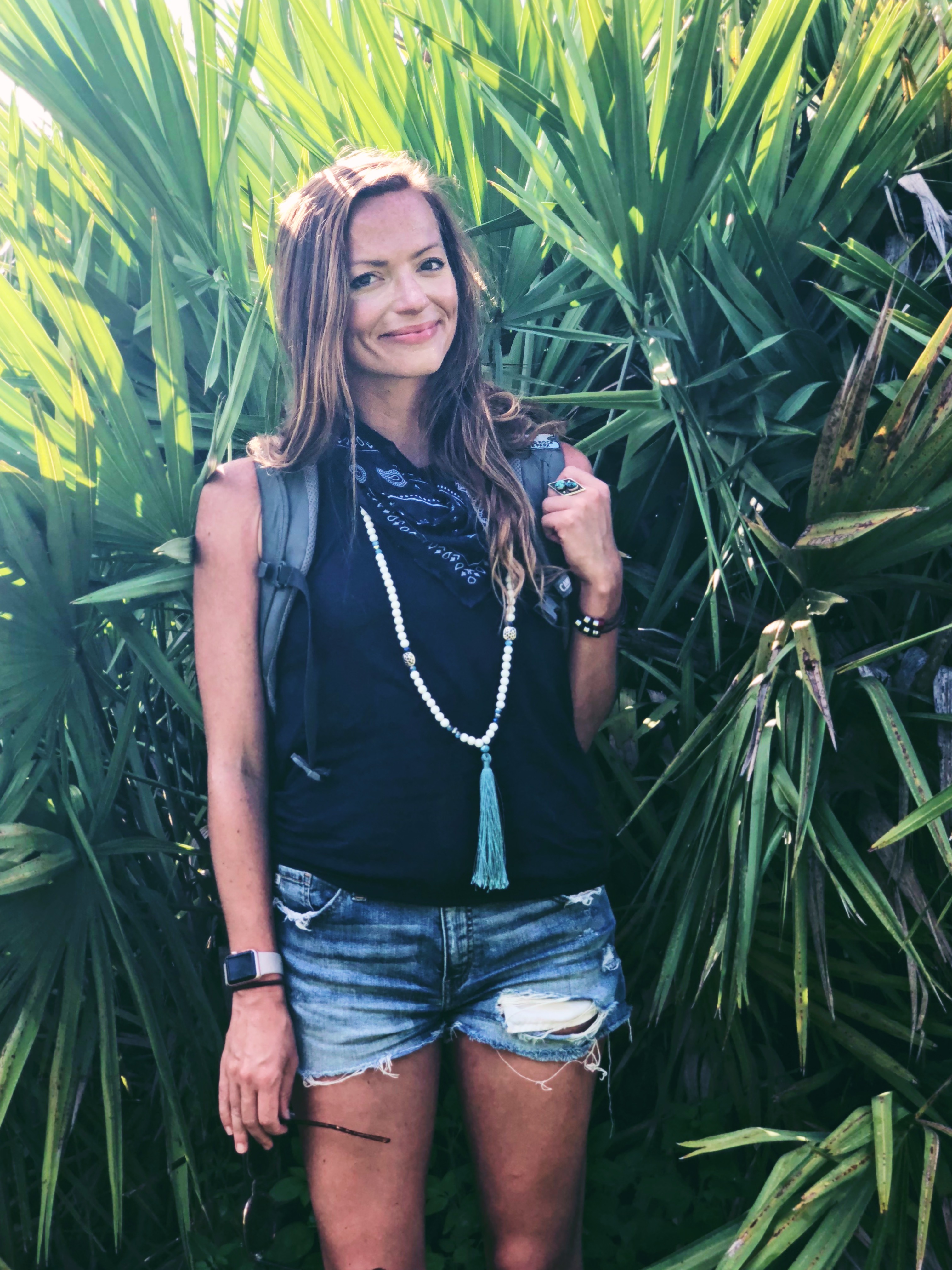
Unlike many national parks with sprawling campsites, camping in Biscayne National Park offers a unique and somewhat rustic experience. Camping is only permitted on Boca Chita Key and Elliott Key. Both islands are accessible solely by boat, so be prepared for a true escape.
To camp in Biscayne National Park, you’ll need to be self-sufficient. Pack everything you’ll need for your stay, including food, water (while there is water available on Elliott Key, the park service still recommends bringing your own), cooking utensils, camping gear, and plenty of insect repellent (especially during summer). Remember, all trash must be packed, so don’t forget your garbage bags.
Reservations can’t be made in advance here, as the sites are first-come, first-serve. Be prepared to pay a boat docking fee of $25/day (from Friday to Monday and on federal holidays) and a $35 camping fee for each night.
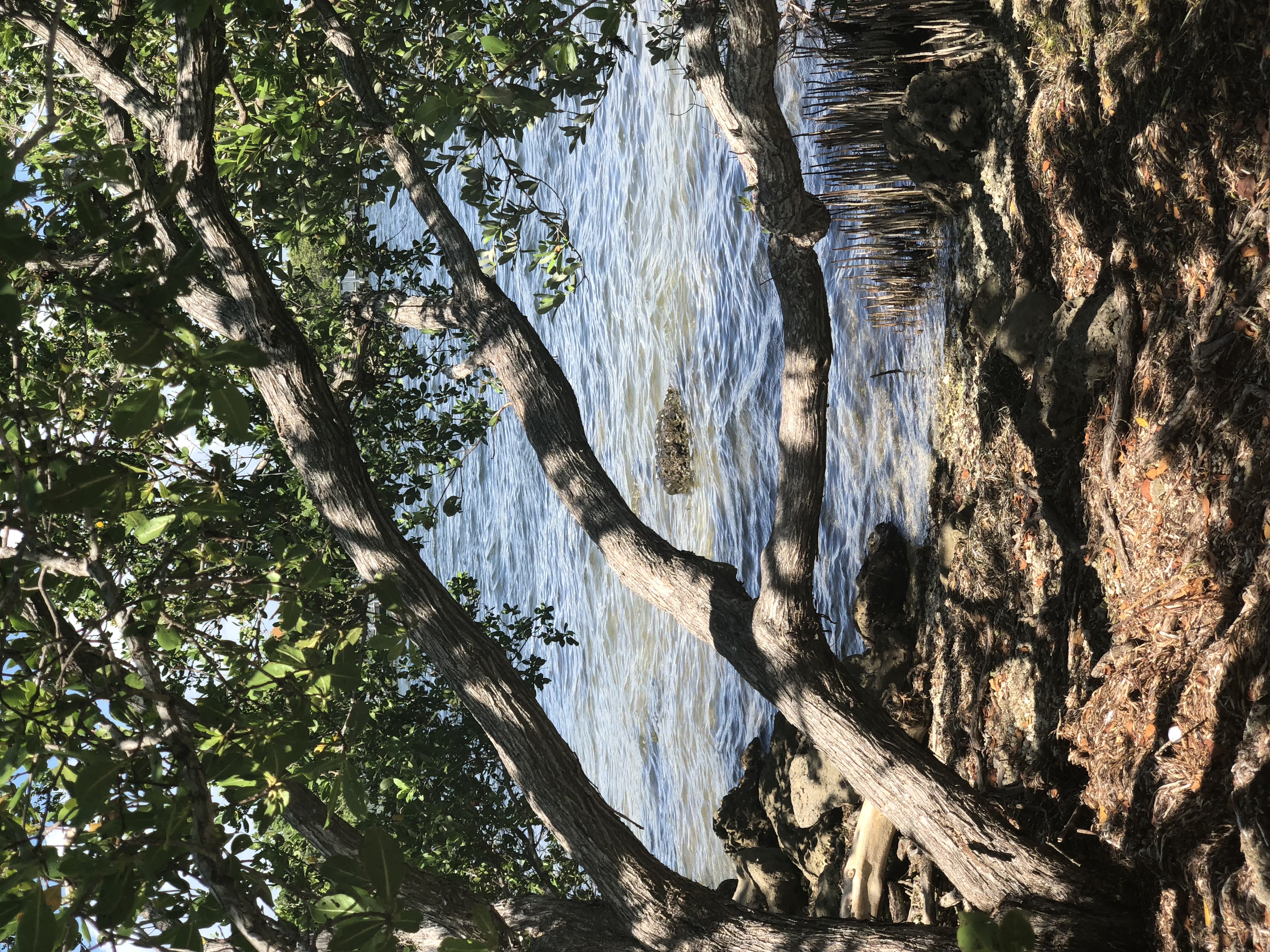
Jetty Trail:
This paved trail is the most popular and easiest option in the park. Located at the Dante Fascell Visitor Center (so no boat required), it winds along the Convoy Point Jetty, offering scenic views of Biscayne Bay and opportunities for birdwatching.
Length: 0.8 miles round trip Difficulty: Easy
Boca Chita Trail:
Found on Boca Chita Key – which you’ll need to take a ferry or boat to access – this short nature trail leads to views of the Boca Chita Lighthouse. Enjoy panoramic views of the clear turquoise waters and soak up some history.
Length: 0.7 miles round trip Difficulty: Easy
Adams Key Loop Trail:
Another short and easy trail is on Adams Key, which is only accessible by boat. It circles the island and provides opportunities for birdwatching and observing the unique coastal ecosystem.
Length: 1-mile round trip Difficulty: Easy
Elliott Key Interpretive Loop:
This trail on Elliott Key offers a glimpse into the island’s plant and animal life. While it’s not a challenging hike, be aware of mosquitos, especially during summer.
Length: 1.1 miles round trip Difficulty: Easy
Black Creek Canal Trail:
This mostly flat, unpaved trail meanders through the coastal mangrove forest adjacent to Black Creek Canal. Look for wading birds and fish, and pro-tip: try to visit at sunrise or sunset.
Length: 1.7 miles round trip Difficulty: Easy


IMAGES
VIDEO
COMMENTS
Snorkeling in Biscayne National Park. Snorkel or scuba the beautiful, clear waters of Biscayne National Park while learning about its unique marine habitat and inhabitants. Half-day and full-day scuba or snorkel tours on our powerboats go to the reef, wrecks, or bay, based on the weather. As we cruise in Biscayne National Park, enjoy great bird ...
Midnight Sun Charters - sightseeing boat tours and swim charters, 340-998-7682 E-Mail. Nice Aquatic - sightseeing boat tours and snorkeling charters, 305-709-1185 E-Mail. Ocean Force Adventures - sightseeing boat tours - Stiltsville area, 305-372-3388 E-Mail. Off the Beaten Path - pre-packaged non-motorized tours, 406-414-8949.
Learn how to join a boat tour and explore coral reefs, a shallow shipwreck and mangroves in Biscayne National Park. Find out how to get there, what to bring, what to expect and more tips for snorkeling in this underwater world.
Private Tour Up to 6 passengers $ 1,254. Sail, Paddle and Snorkel on a full-day adventure in Biscayne National Park! ... This Biscayne National Park snorkeling and paddling program is designed for active adults and children over eight who are good swimmers (private trips open to all ages). Swimming in the bay, you may encounter some currents ...
Why Snorkel in Biscayne National Park. Biscayne National Park is a true gem in the Florida Keys. The underwater National Park boasts crystal-clear waters and an abundance of marine life. It is one of the best snorkeling destinations in the country. With over 170,000 acres of protected coral reefs, shipwrecks, and seagrass beds to explore ...
Learn how to plan your snorkeling trip to Biscayne, the only coral reef system in the continental US. Explore the best places to snorkel, the types of tours offered, and what to expect from the park's wildlife and history.
Join us daily for a private evening sunset cruise into Biscayne Bay from November to March. Book Now. Learn More. Join us for your next South Florida eco-adventure! We have a variety of educational experiences available, including sailing, paddling, snorkeling, and island visits. Browse our Biscayne Bay activities and book today!
Experience the underwater world of Biscayne National Park with a 6-hour tour that combines paddleboarding and snorkeling. Learn about the park's history, ecology and wildlife from a knowledgeable guide and see sea creatures up close.
Snorkeling in Biscayne National Park is a not-to-miss-out activity if you are in Miami. The park, which is situated a little south of Miami and north of Key Largo, was set up with the purpose of preserving the region's natural wonders and covers more than 170.000 acres of mangrove forests, sand barrier islands, coral keys within the northernmost portion of Florida's barrier reef.
The 6-hour Snorkel and Paddle Eco-Adventure is for those 12 and older. It departs once a day year-round, typically around 10 AM. The boat is small and space is limited to only six people, so it is best to make a reservation in advance on the Biscayne National Park Institute's Snorkel and Paddle Eco-Adventure web page (the current schedule and fee is given on this page as well).
Biscayne National Park is home to a variety of tours in and on the water, from trips to islands to stand-up-paddleboard outings to snorkeling within the park. This twice-a-day snorkeling trip is 3.5 hours long and costs $109. (Renting snorkeling gear is $10 extra.) These are small group trips with no more than 12 participants.
Biscayne National Park snorkeling is known as some of the best in the United States, so it's well worth booking yourself a tour if you won't have access to a boat yourself. This fish wasn't the most colorful one on the reef, but I kind of love its pattern and camouflage. The reef snorkeling tour cost me $64 and included a snorkeling ...
Contact: Christiana Admiral, 305-230-1144, x018. Dive into history this summer with a Biscayne National Park Maritime Heritage Trail guided snorkel adventure! Tours depart every other Saturday morning and afternoon (June 15, June 29, July 13, and July 27). Morning tours depart at 9 a.m. for the Mandalay shipwreck, last four hours, and cost $55 ...
Duration: 4 - 5 hours. 4 (3289) Join our travel affiliate program. Snorkeling in Biscayne National Park is spectacular with crystal clear waters, colorful and healthy coral reefs brimming with marine life, and shipwrecks that lie in relatively shallow water. Snorkeling tours leave conveniently from the Visitor Center.
Snorkel and Paddle Eco-Adventure. Snorkel shipwrecks and coral reefs and paddle on Jones Lagoon. Kayak the Mangroves. Paddle the bay near the Dante Facscell Visitor Center on Convoy Point. Stiltsville Guided Historic Tour. Sightseeing tour to Stiltsville, a collection of houses built on stilts in Biscayne Bay near Key Biscayne. See the Biscayne ...
Arrive and check-in at the Park store at 9:45 a.m. Board your boat at 10:15 a.m. to cross Biscayne Bay and get in the water on your morning adventure paddling and/or snorkeling. Stop for lunch either on anchor or ashore on a barrier island, and then start your afternoon adventure paddling and/or snorkeling. Return across the bay to the visitor ...
Biscayne National Park. Address. Florida, USA. Phone +1 305-230-1144. Web Visit website. Established in 1980 to protect Florida's northernmost keys and the sparkling seas that surround them, Biscayne National Park is something of an anomaly in the U.S. National Park System as it is made of 95 percent water. This distinguishing detail makes ...
Biscayne National Park has a couple of excellent campgrounds. One is located on Boca Chita, a popular island destination for day trips. The other sits on the park's largest island, Elliot Key. You'll have to shell out $25 a night on any of the park's campgrounds. The fee includes boat docking and camping.
The Mandalay shipwreck snorkel tour is one of the most popular. In Biscayne National Park, the Mandalay is one of 44 wrecks identified. A 110-foot-long steel hulled schooner built in 1928 was purchased for $177,000. It was the Mandalay that became stranded on Long Reef early on New Year's Day 1966, after being driven into the water.
Discover the underwater wonders when Biscayne National Park snorkeling and learn tips for unforgettable snorkeling. See details in nationalparkshops.com's article! ... Biscayne National Park Snorkeling: Review Tours and Experience. By John Smith July 2, 2024. Biscayne National Park Snorkeling Share. Facebook Twitter LinkedIn Pinterest Reddit.
Biscayne National Park Institute is a non-profit where your purchase helps directly benefit Biscayne National Park. Located just 20 miles south of Miami, Biscayne National Park protects the northernmost group of living coral reefs in the United States and its ecosystem. Over 95% of the park is "underwater" and is accessible only by boat.
Tour Options with the Biscayne National Park Institute: Heritage of Biscayne Cruise: Covers the history of the park and takes about 3.5 hours. A popular option if you don't want to get wet. ... Sail, Paddle, Snorkel and Island Visit: This tour includes a mix of snorkeling, paddling and a visit to Boca Chita on a sailboat. It takes 6 hours and ...
Biscayne National Park is composed of 95% water, leaving only 5% landmass, which mostly consists of barrier reefs. ... They also offer stand-up paddleboarding, snorkeling tours, and even tours for ...
The park says that 90% of visitors enter the park by boat, either on a guided tour or with their own vessel. ... SNORKELING: Biscayne National Park protects a section of the only living coral reef ...